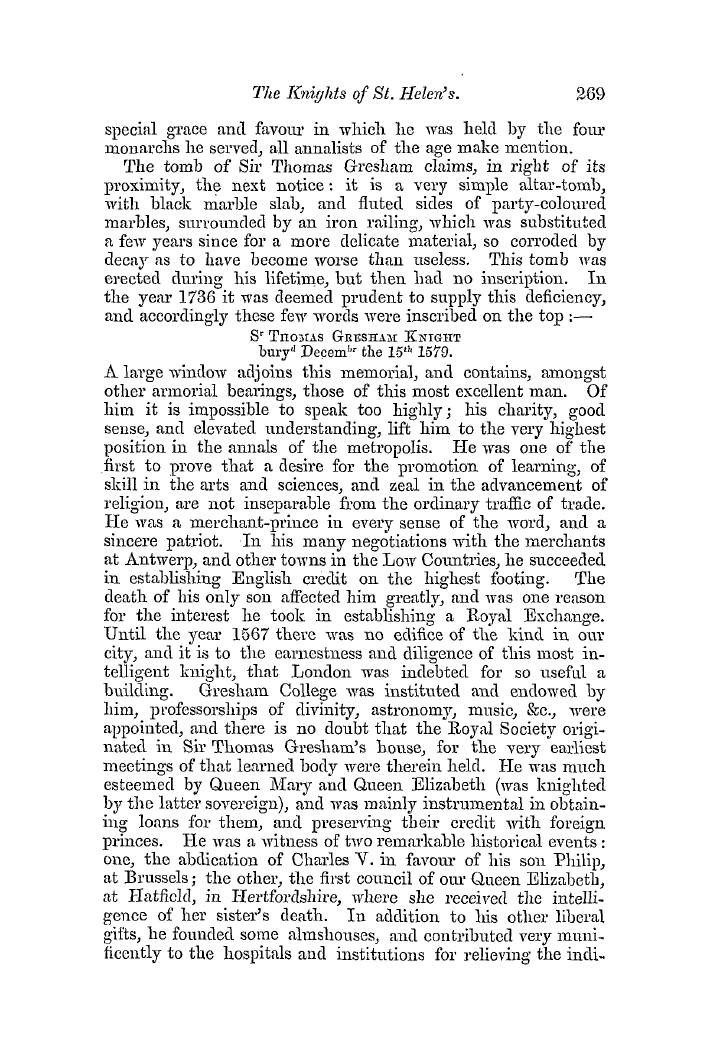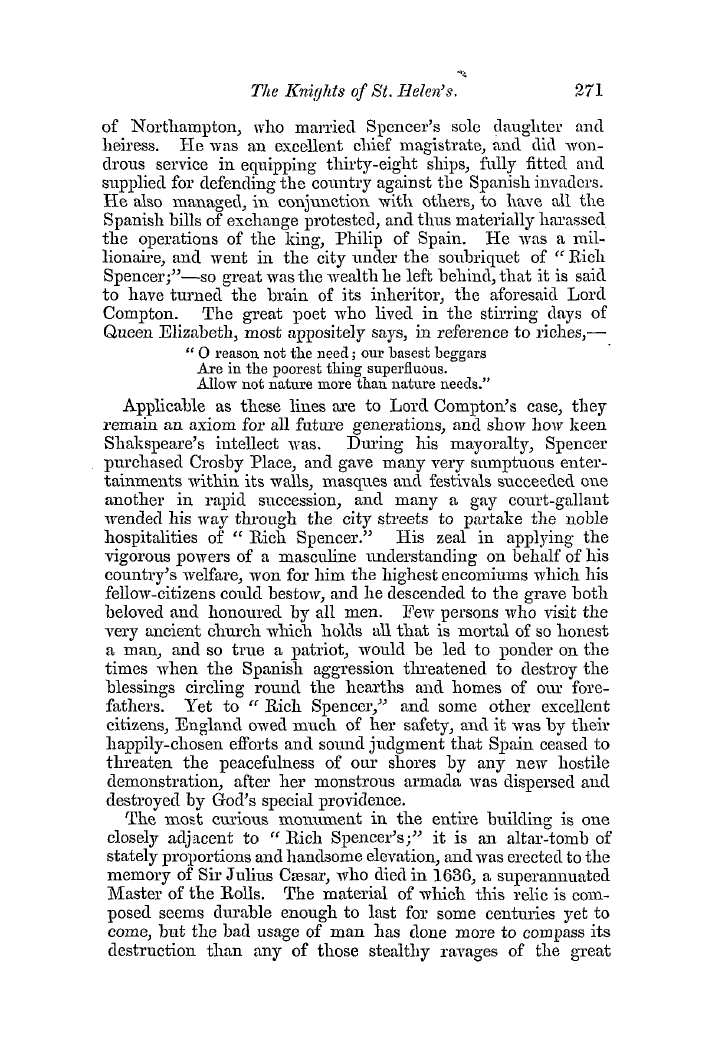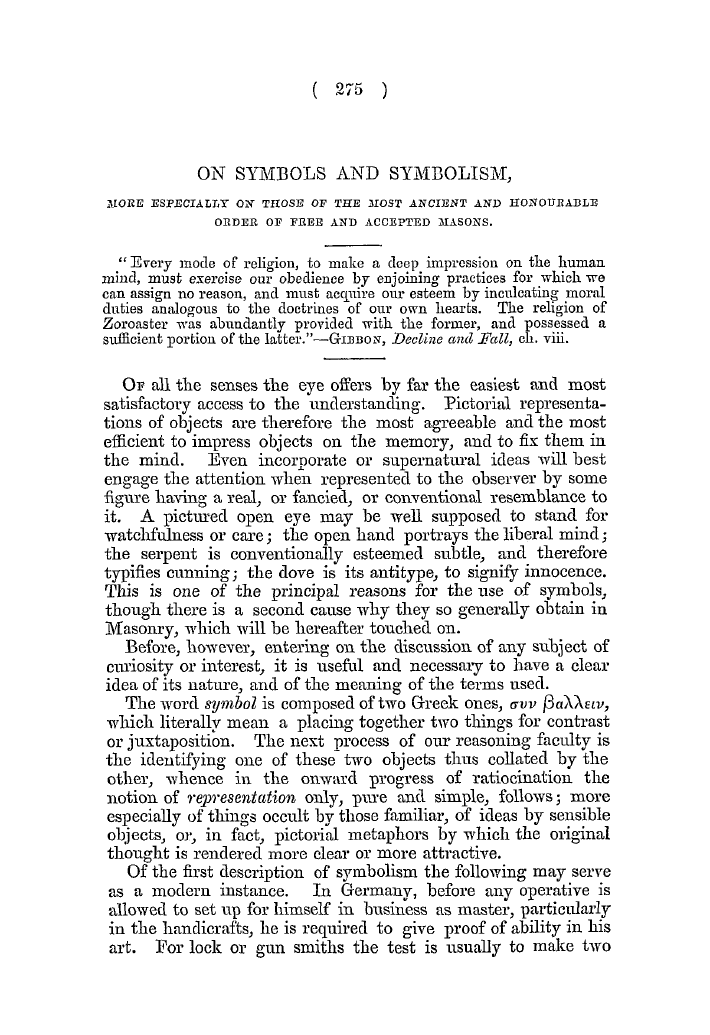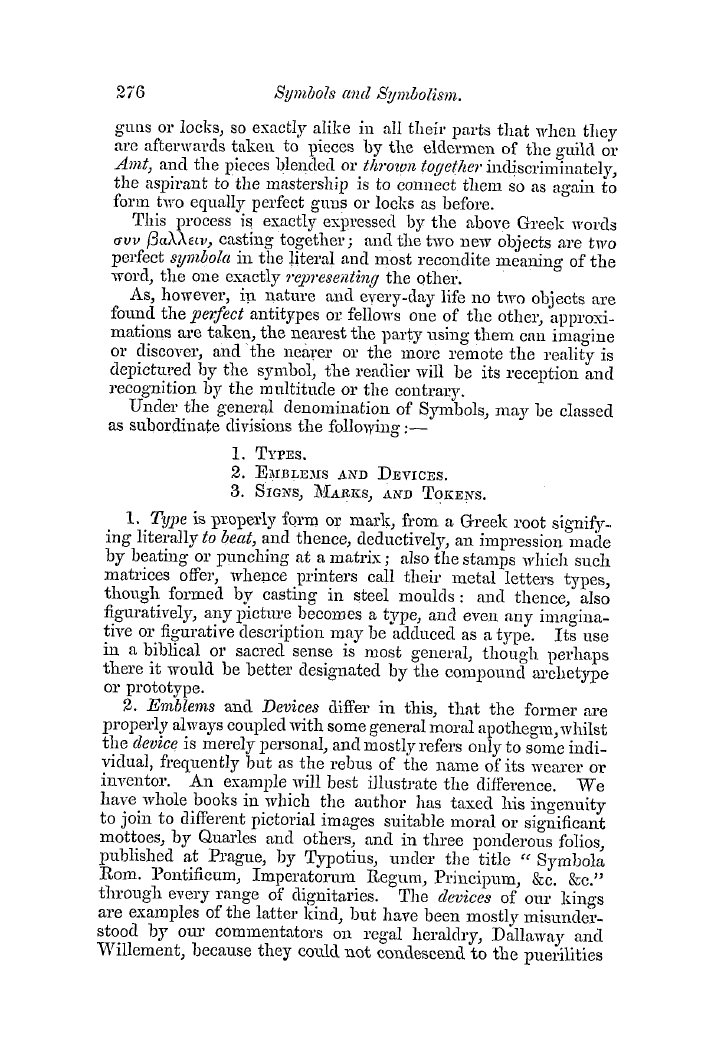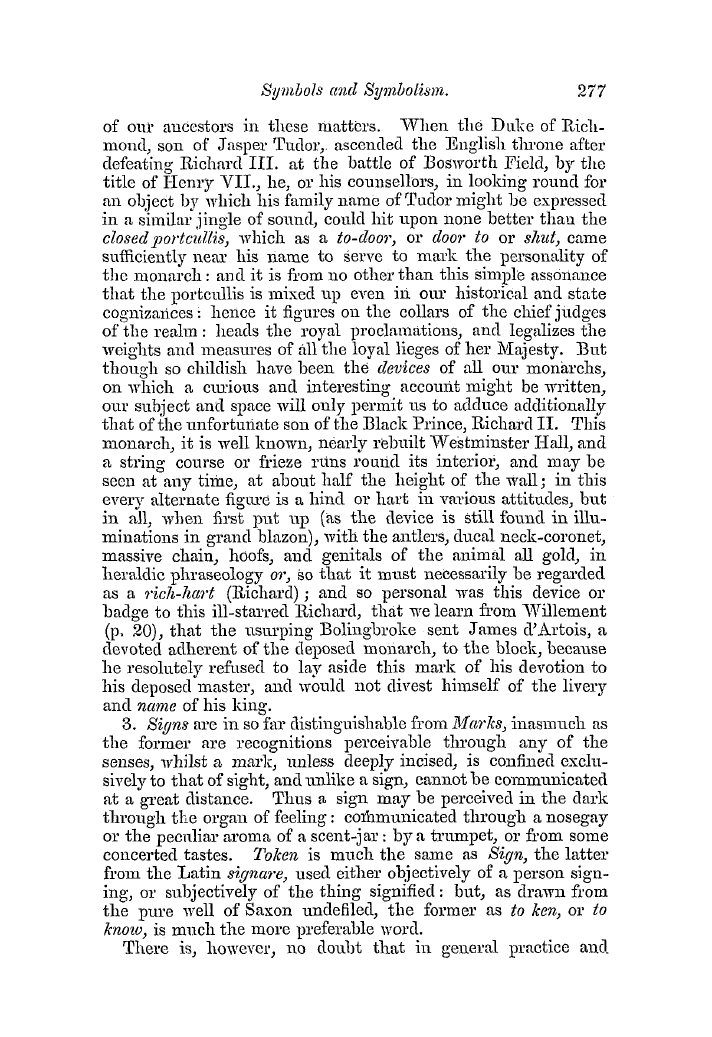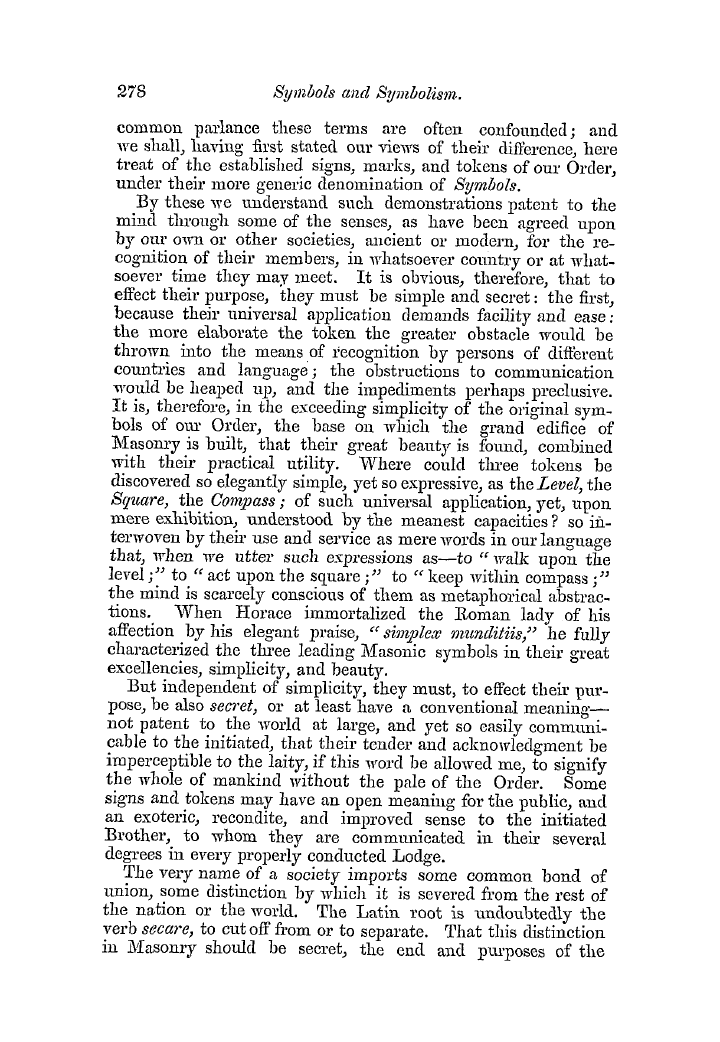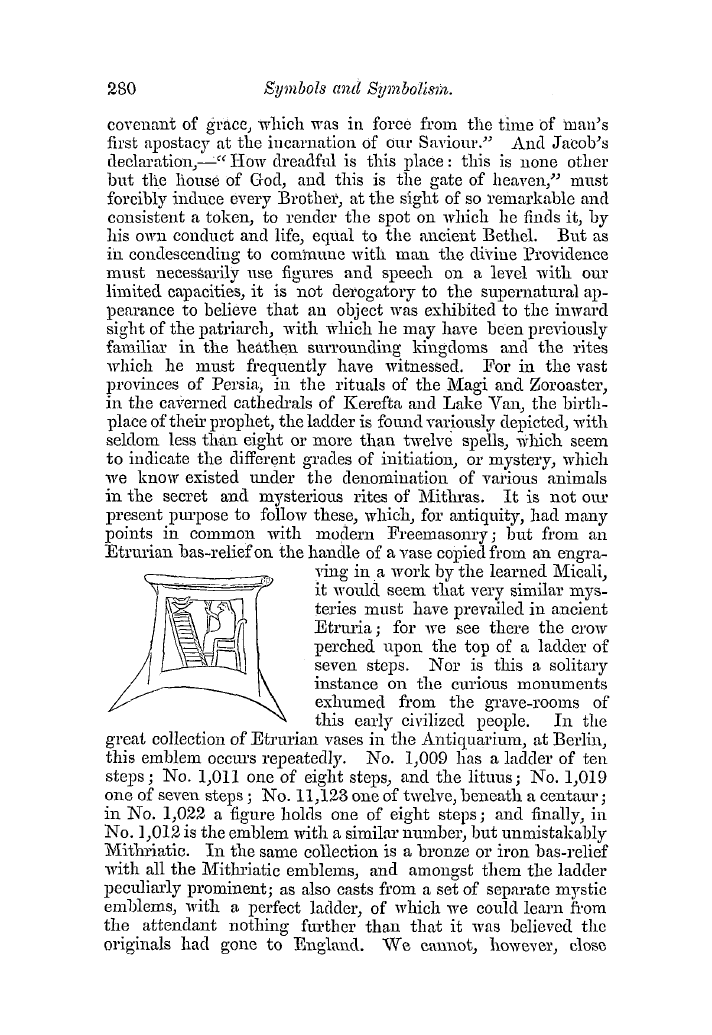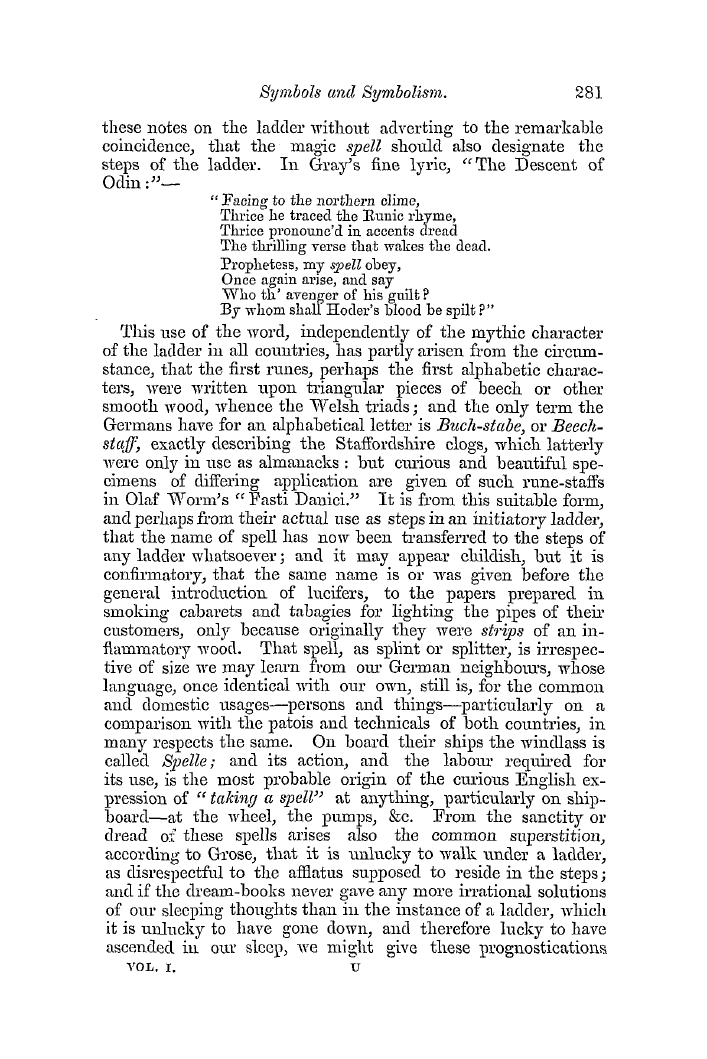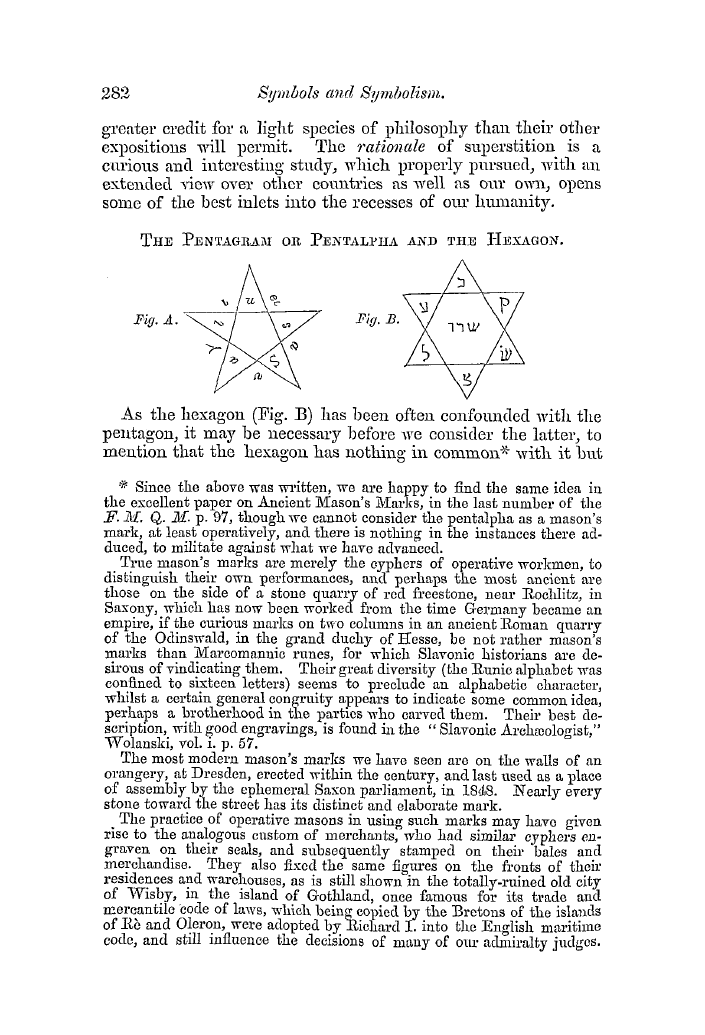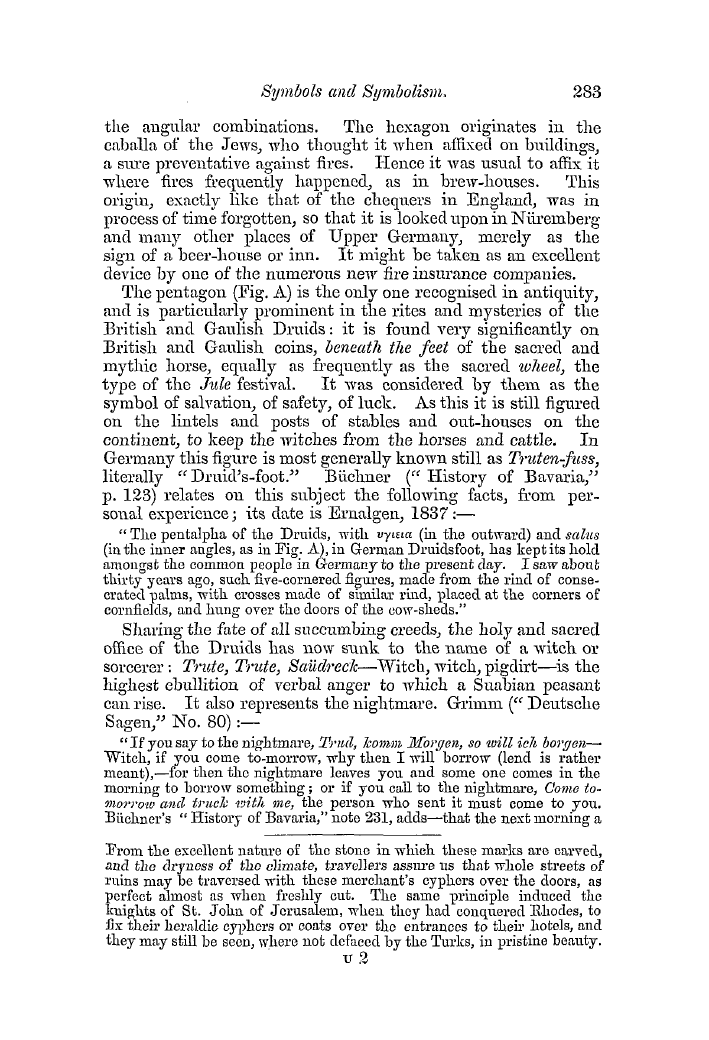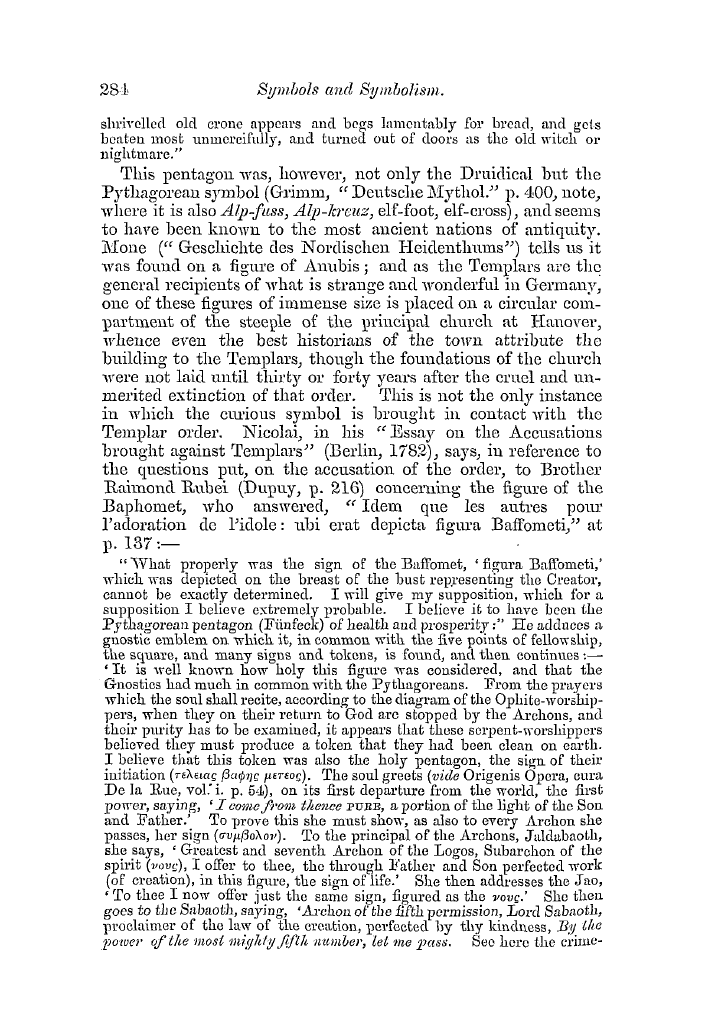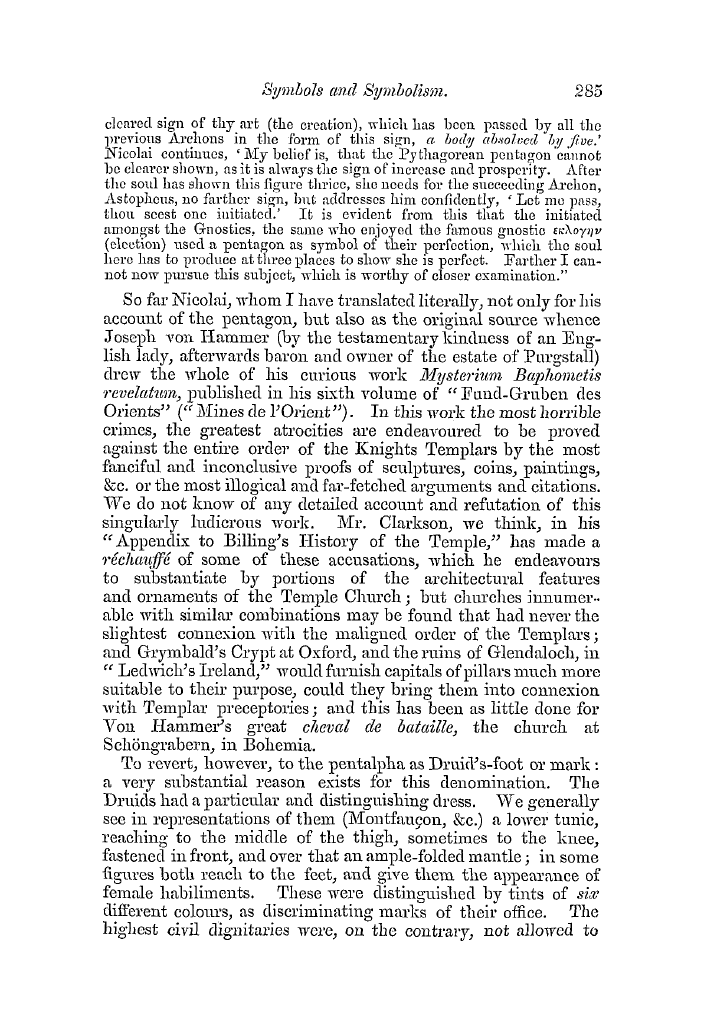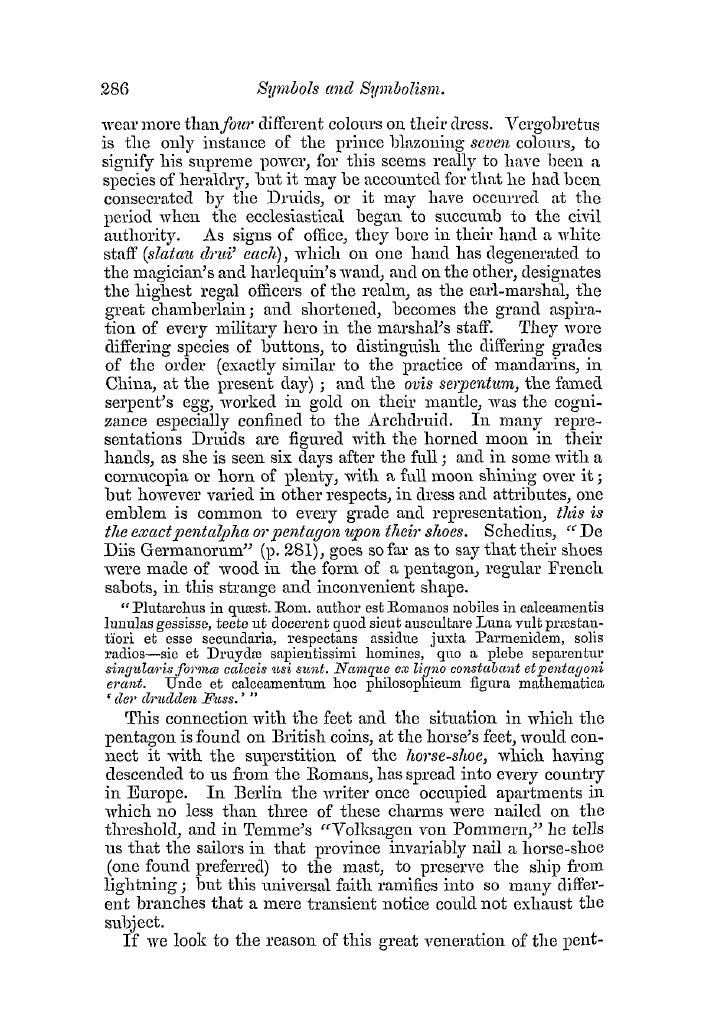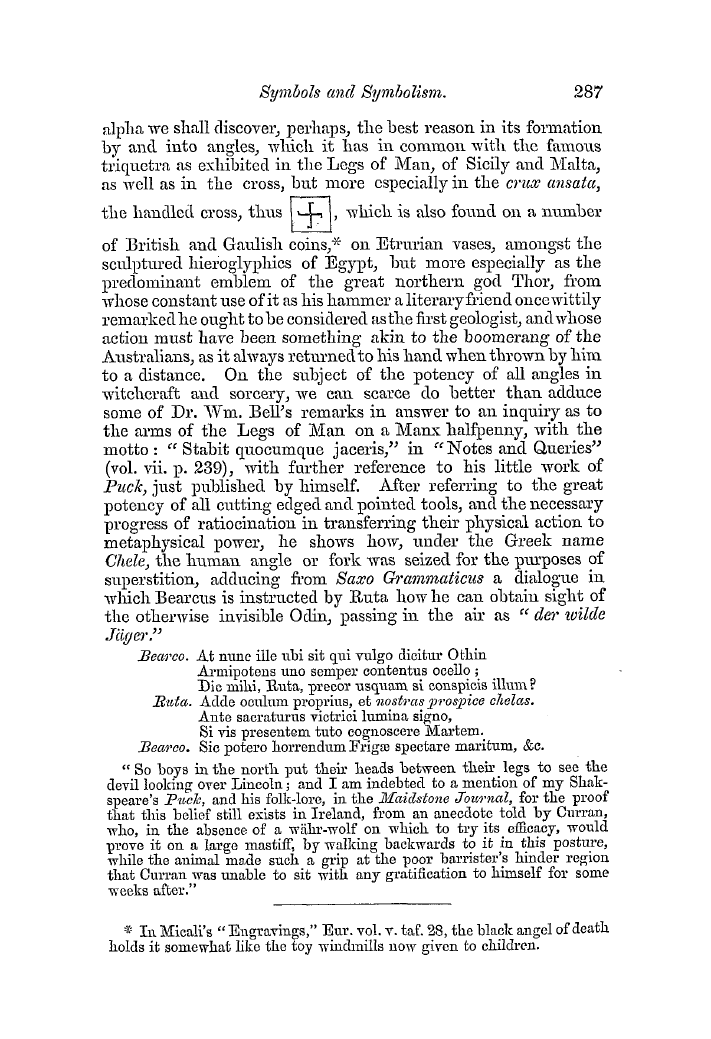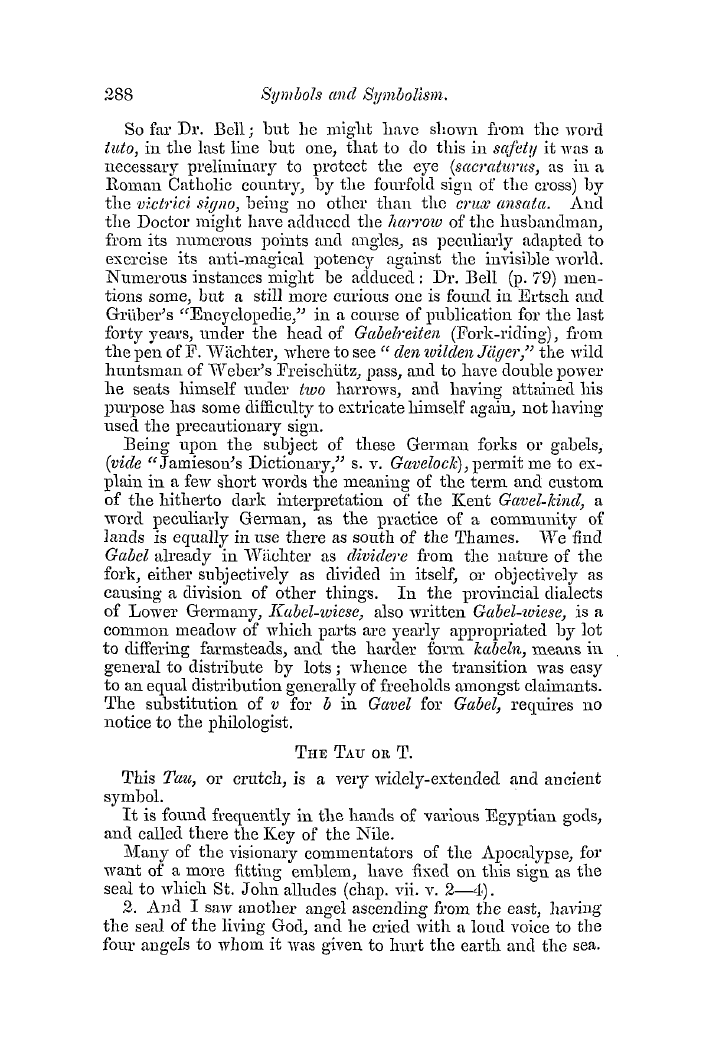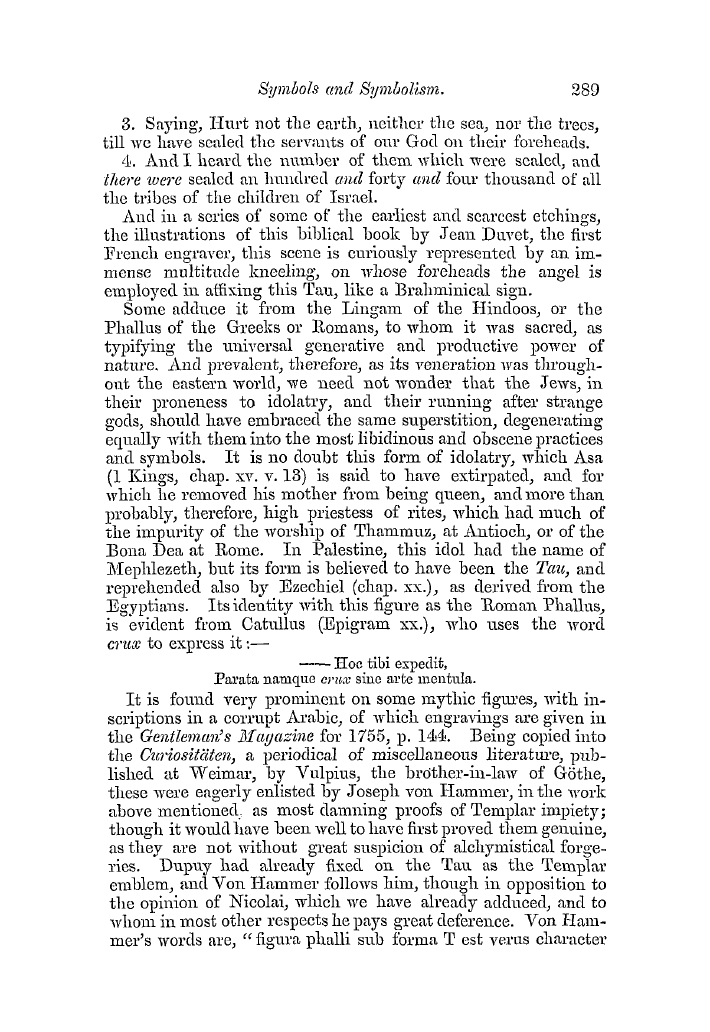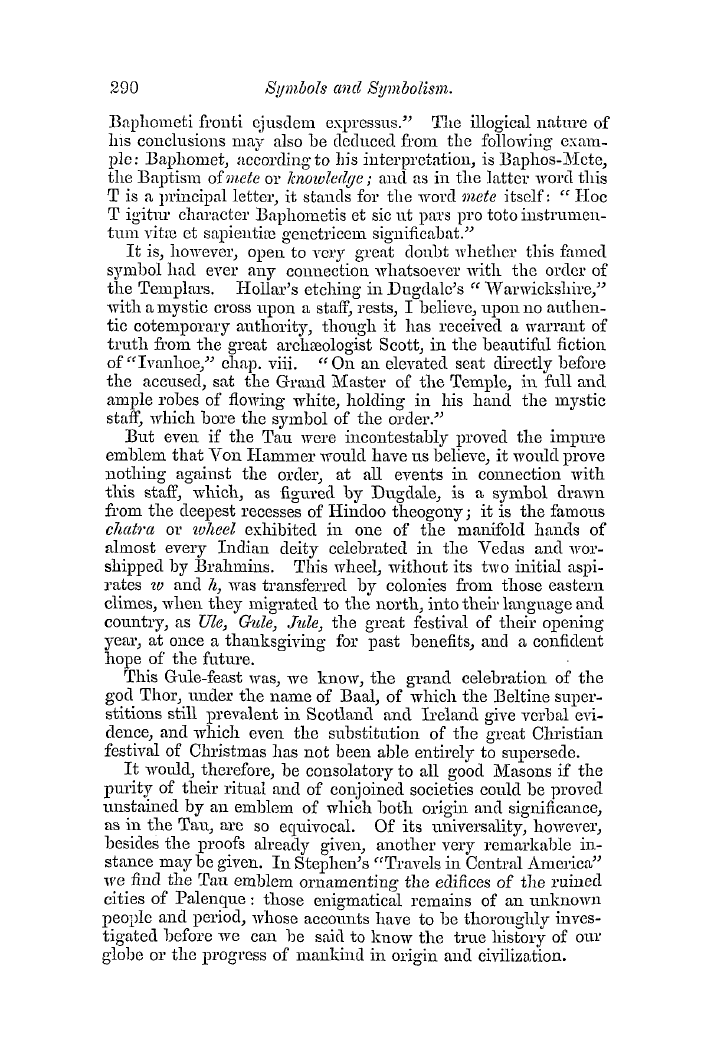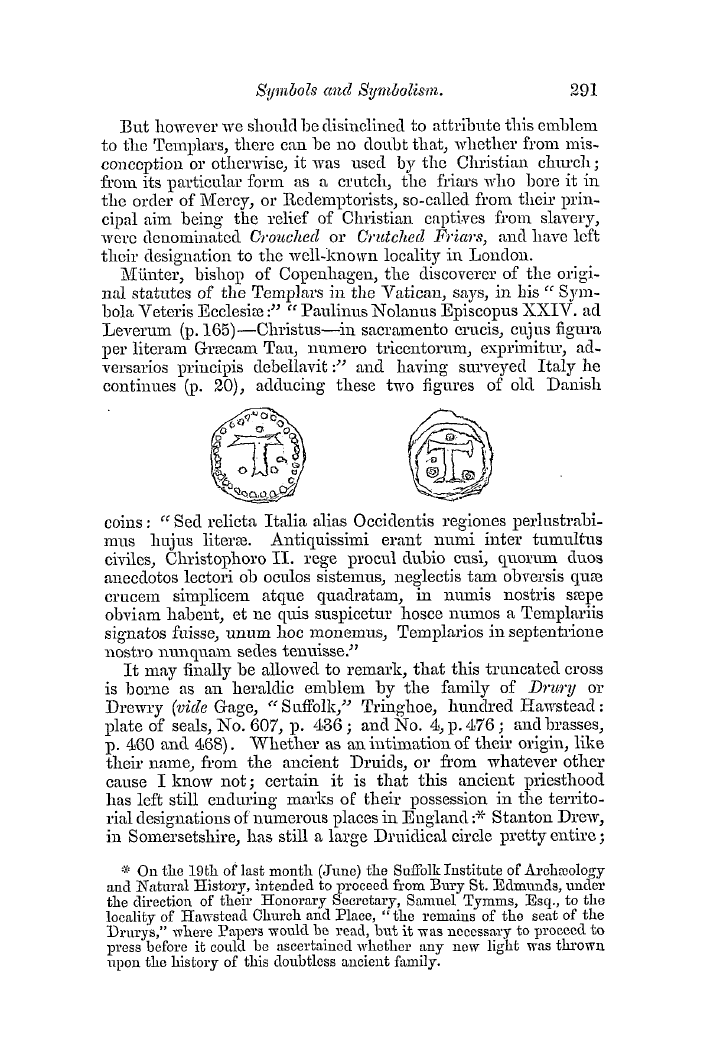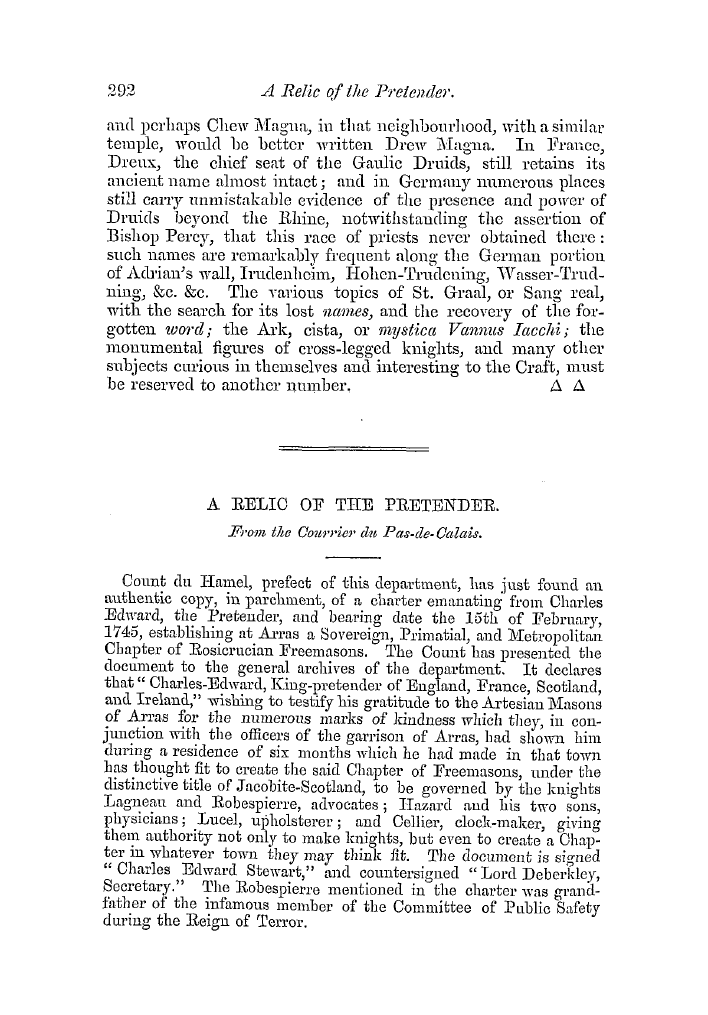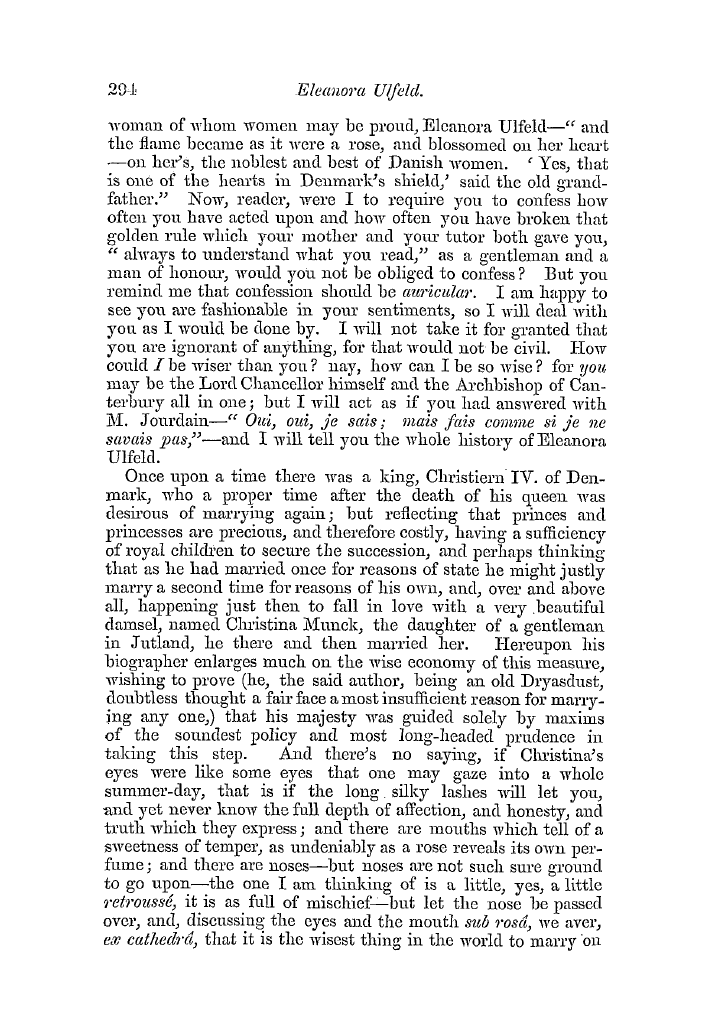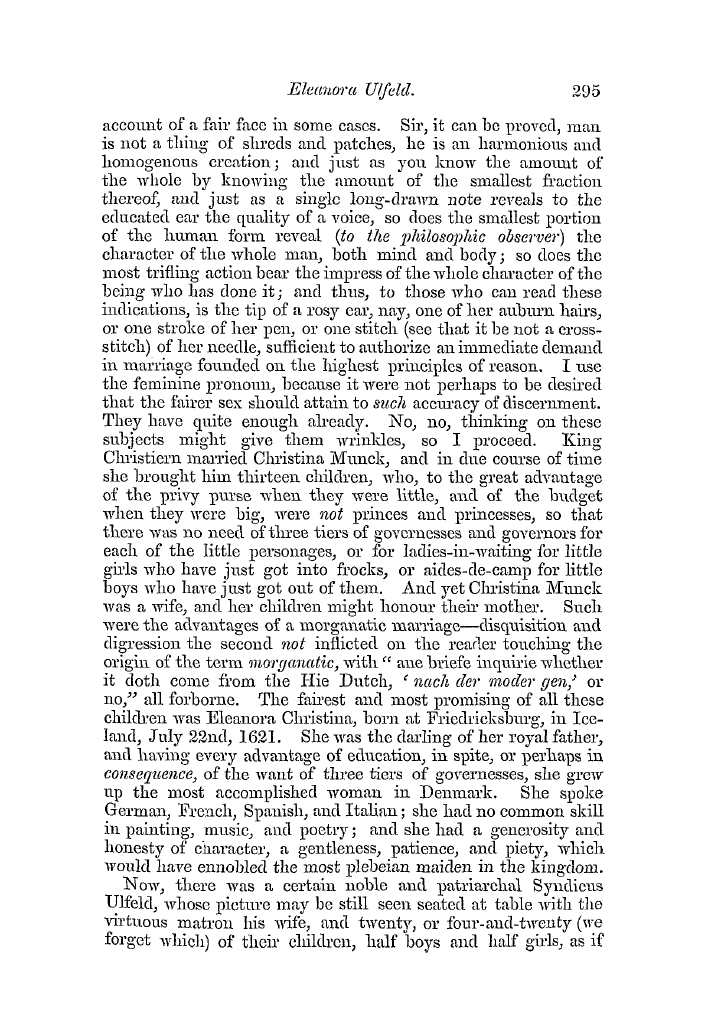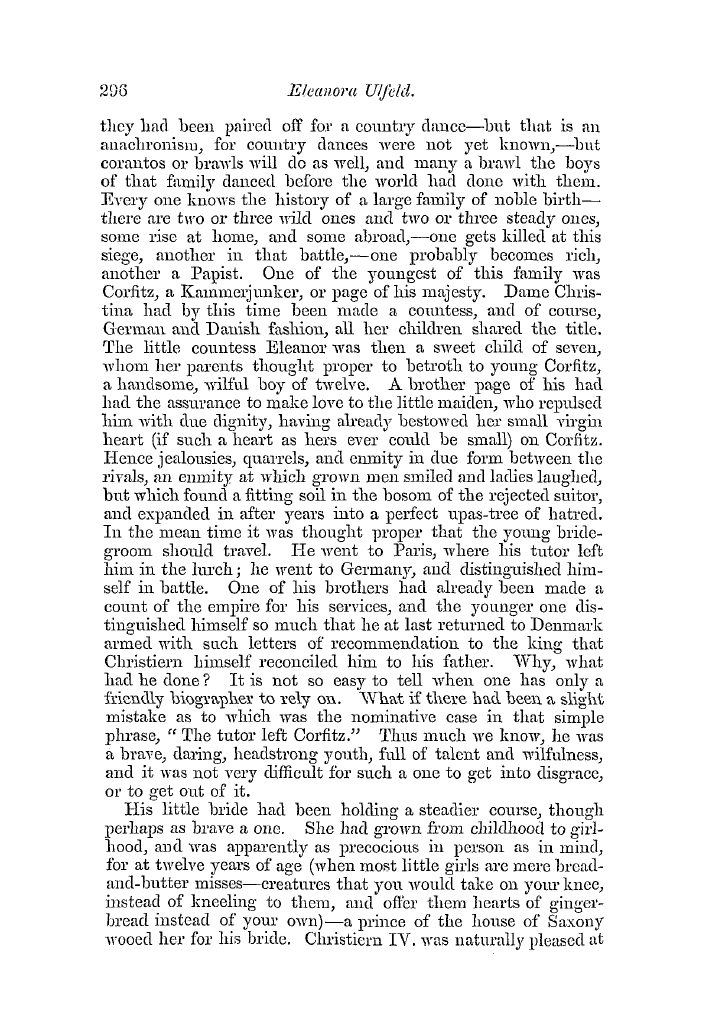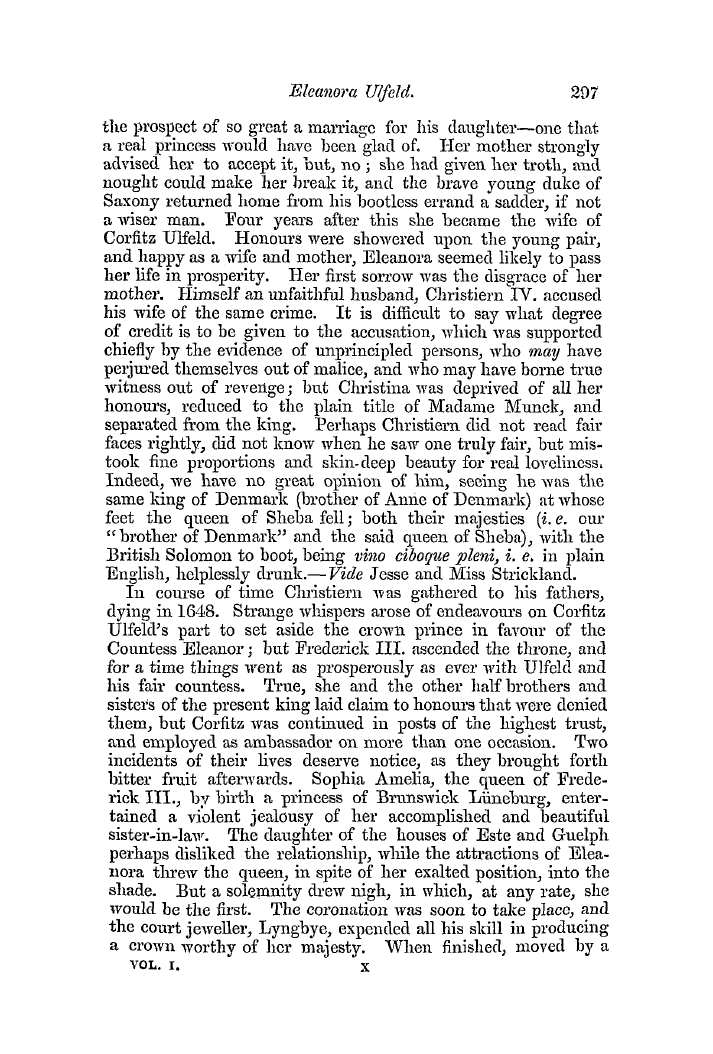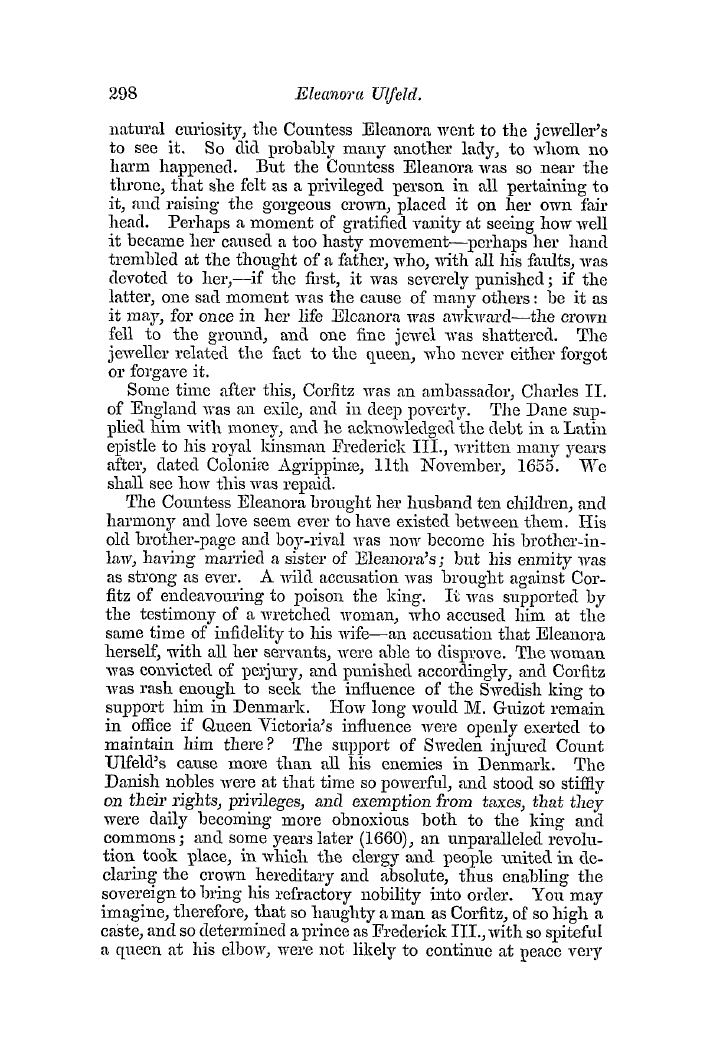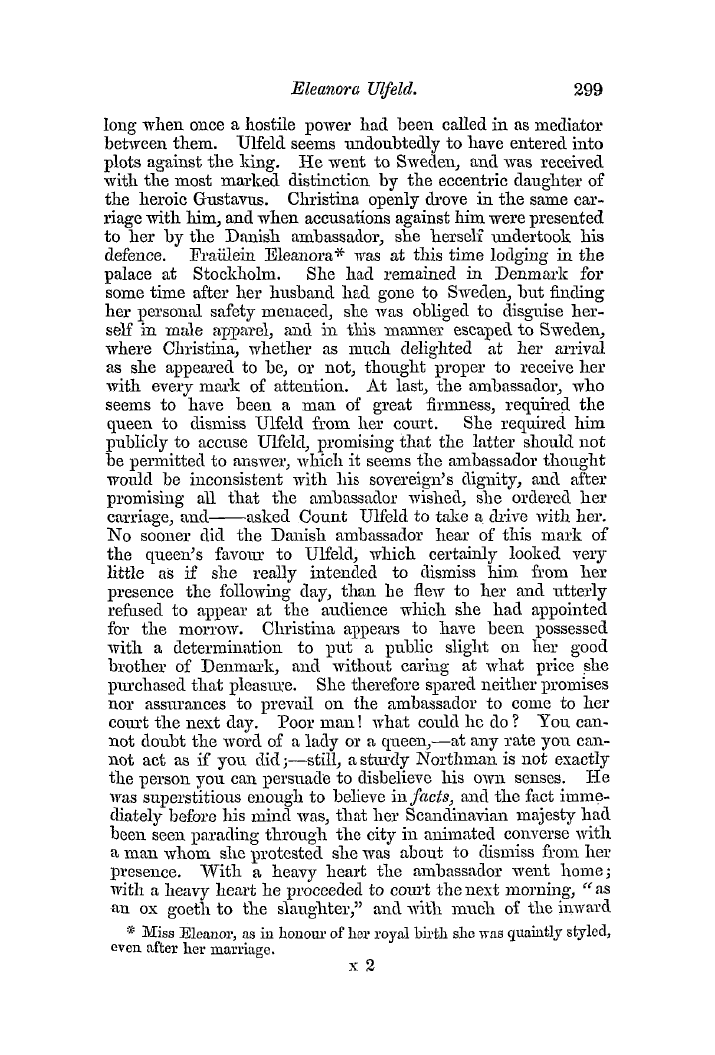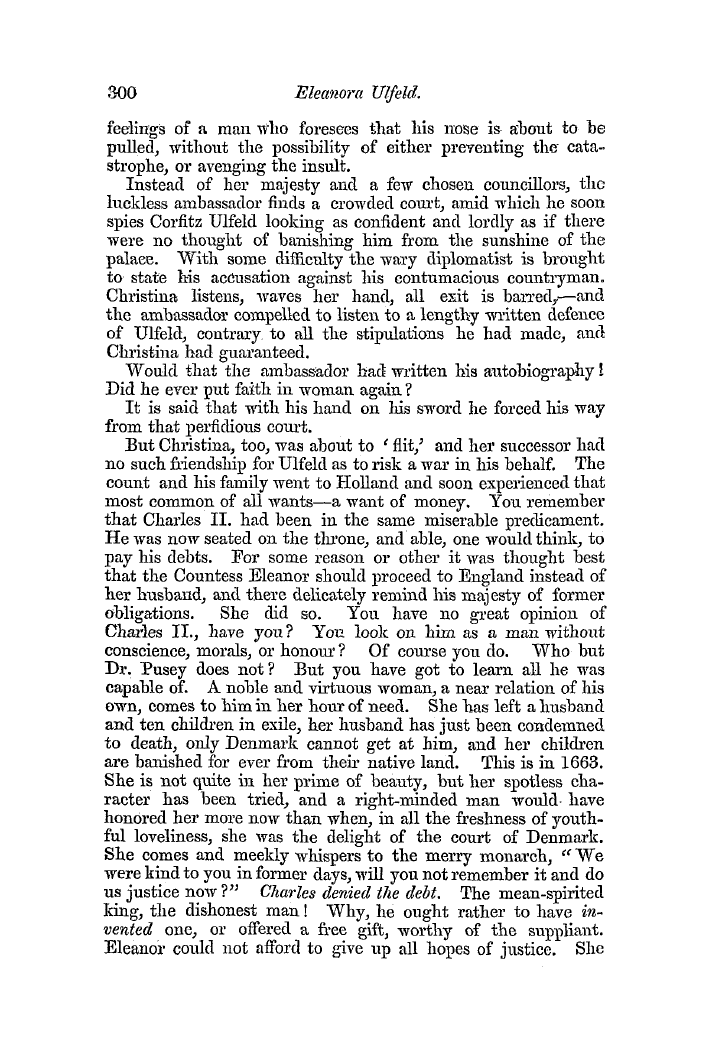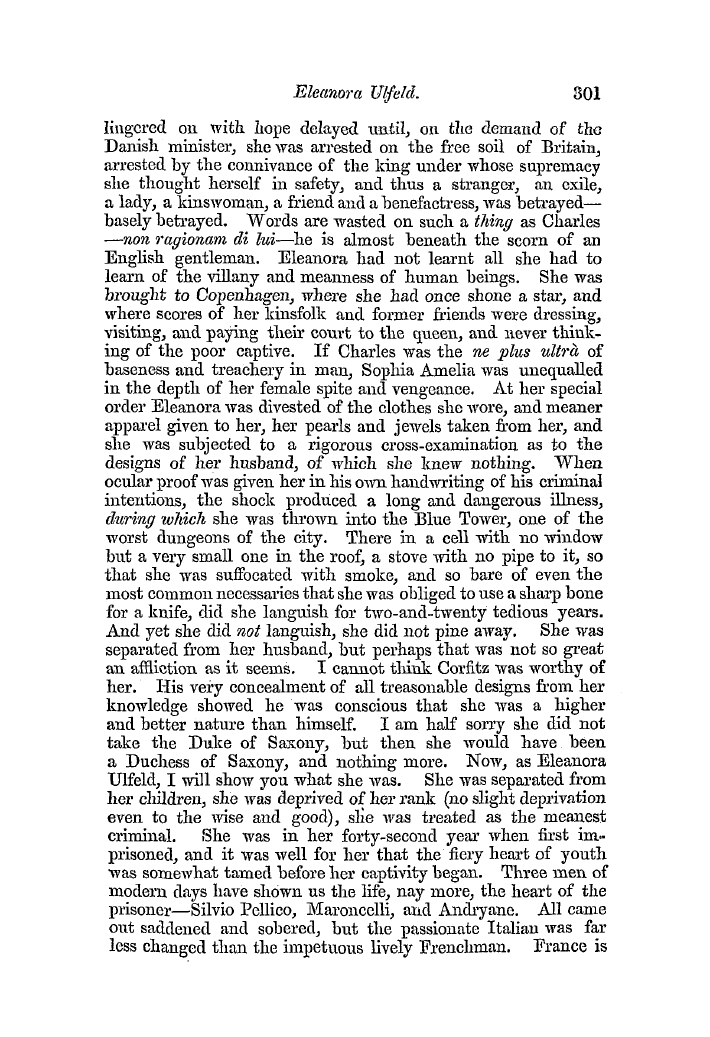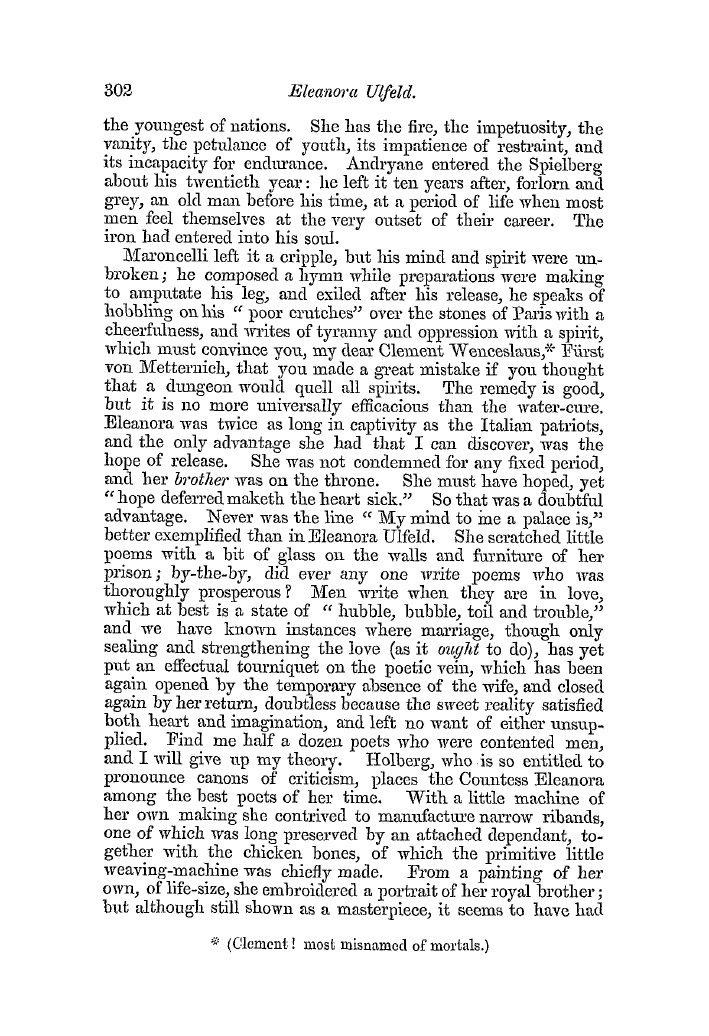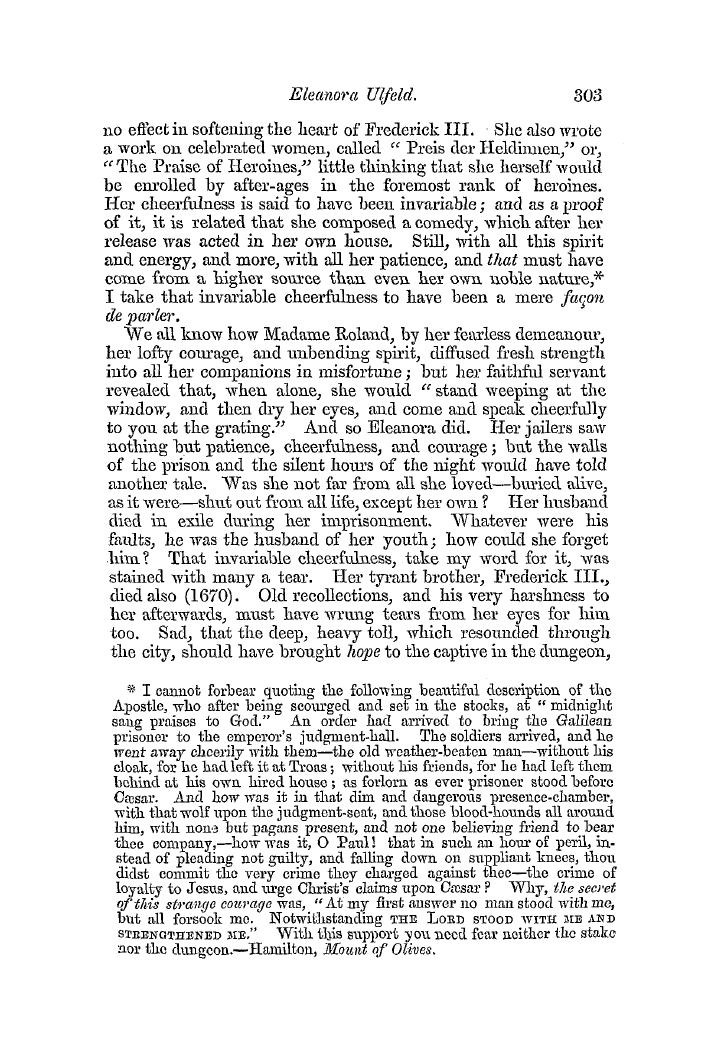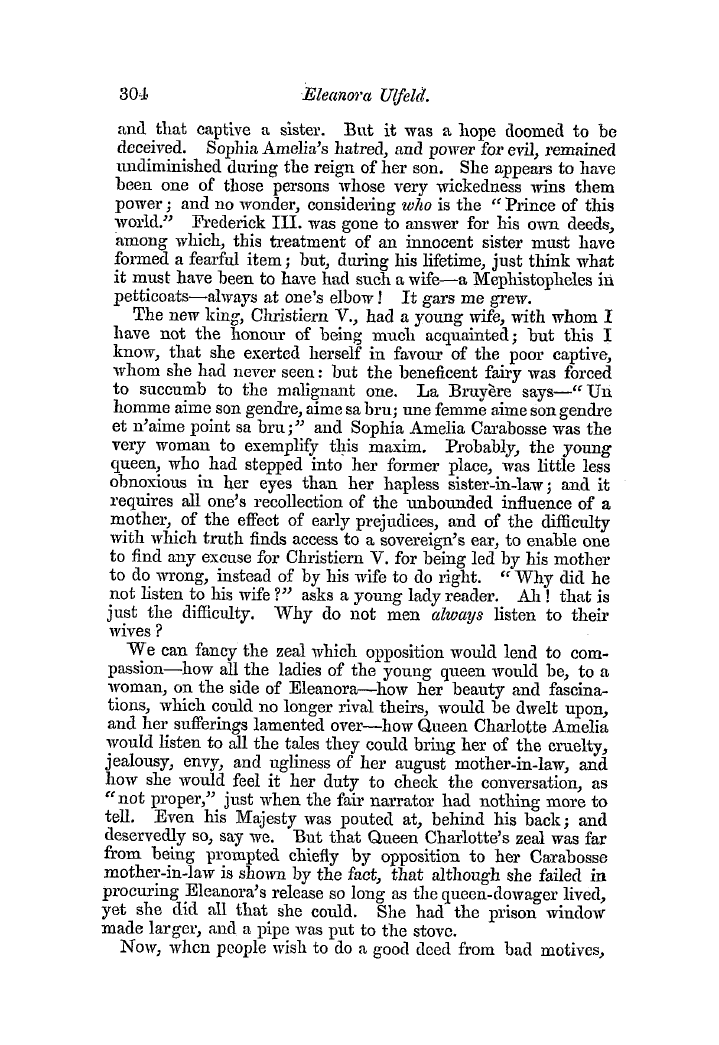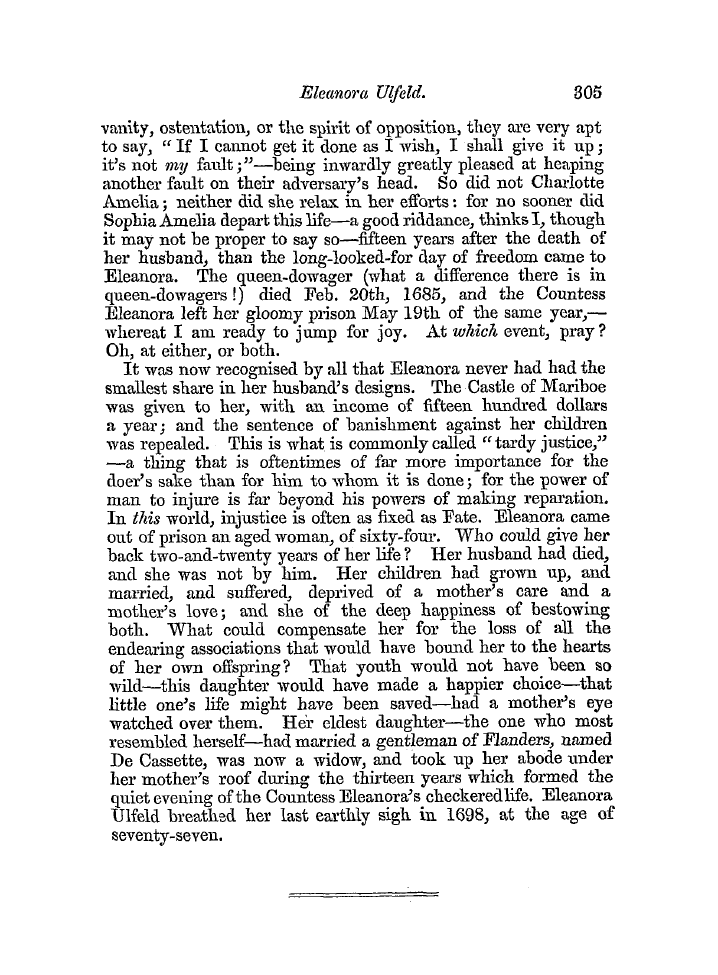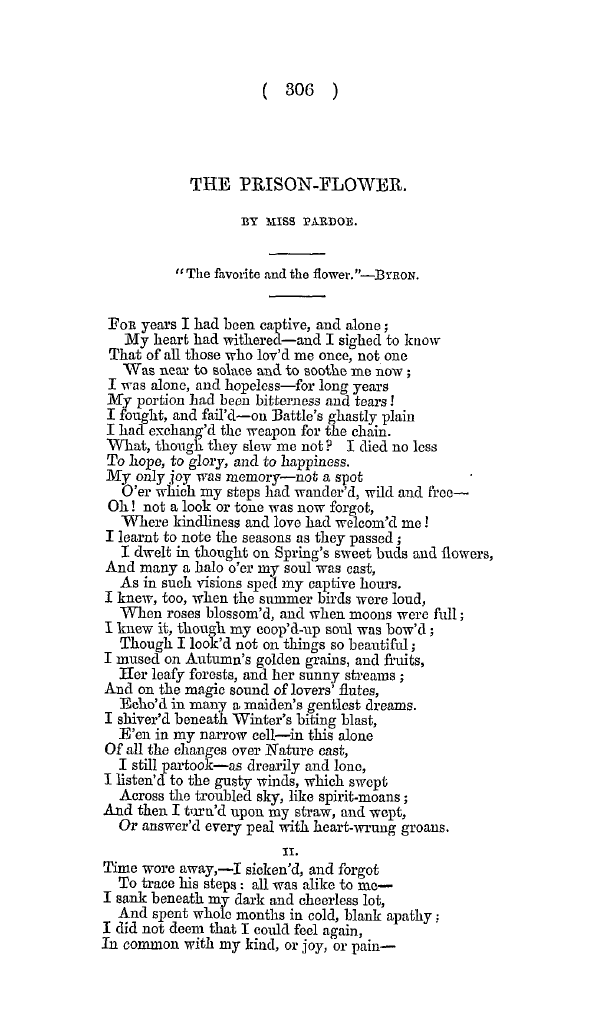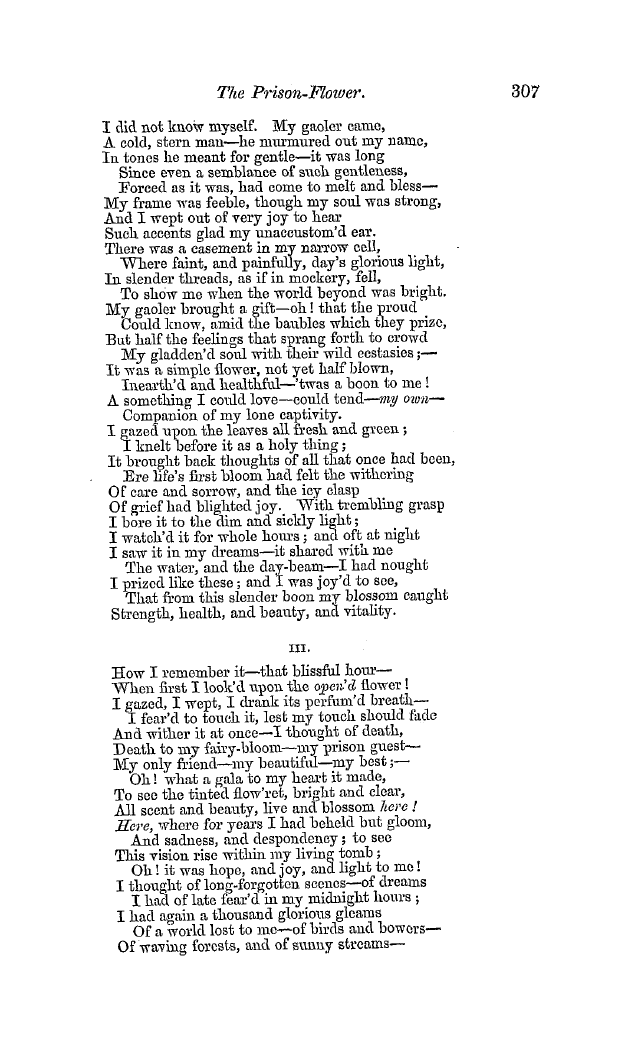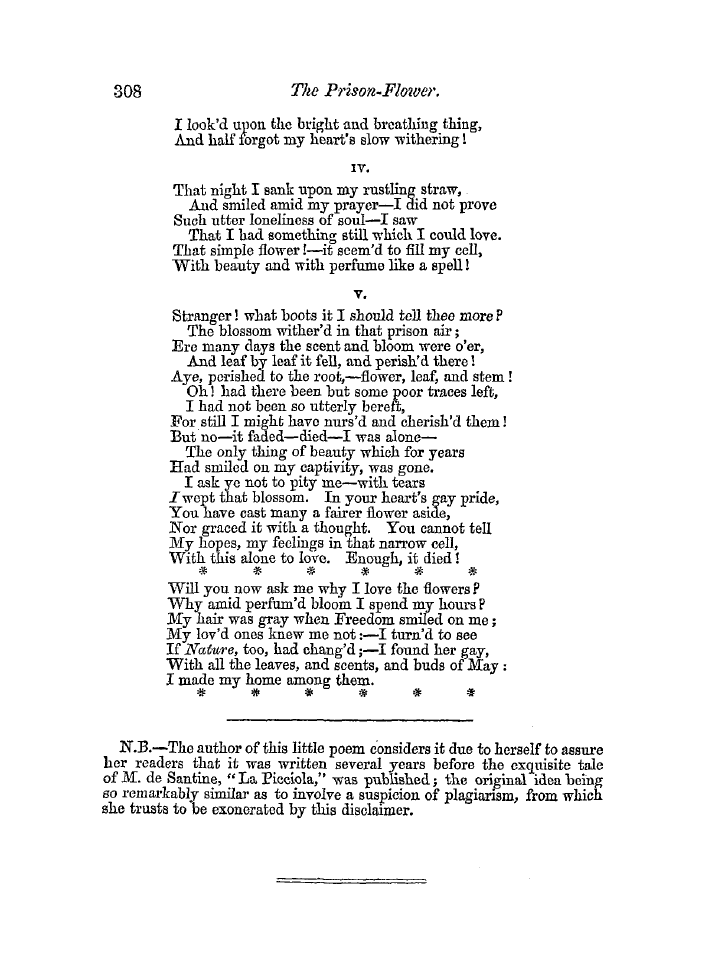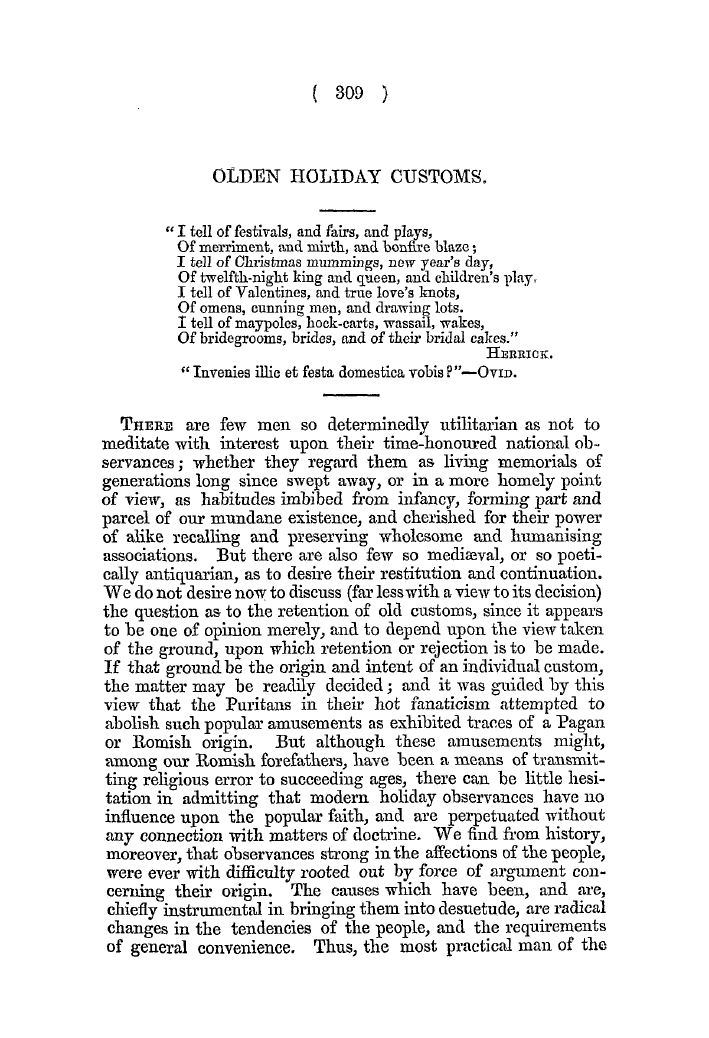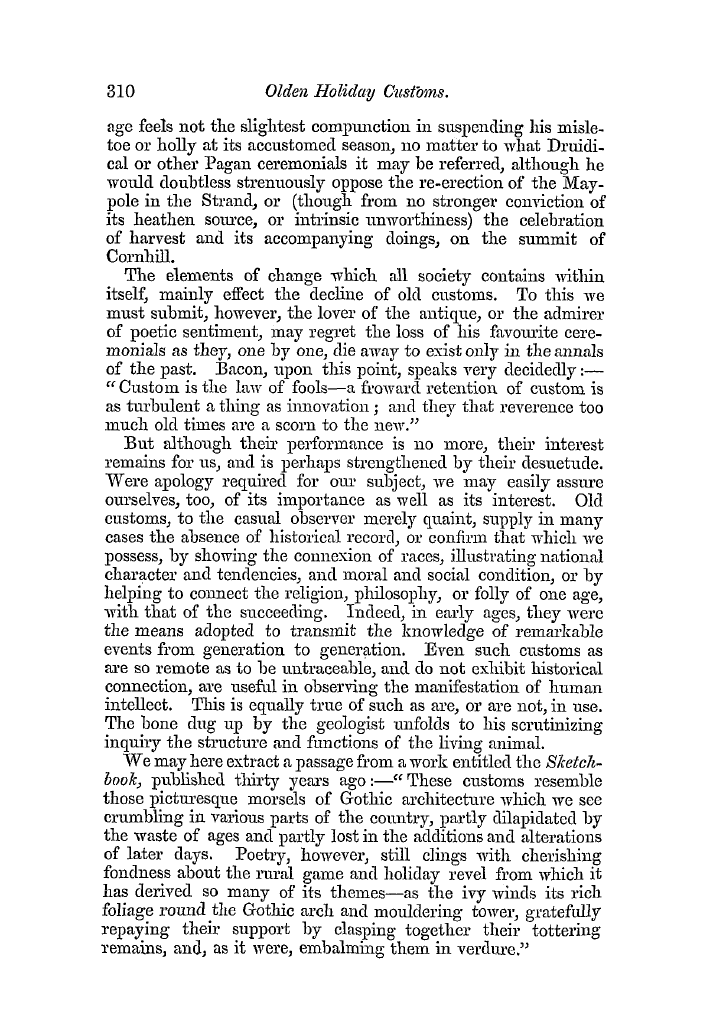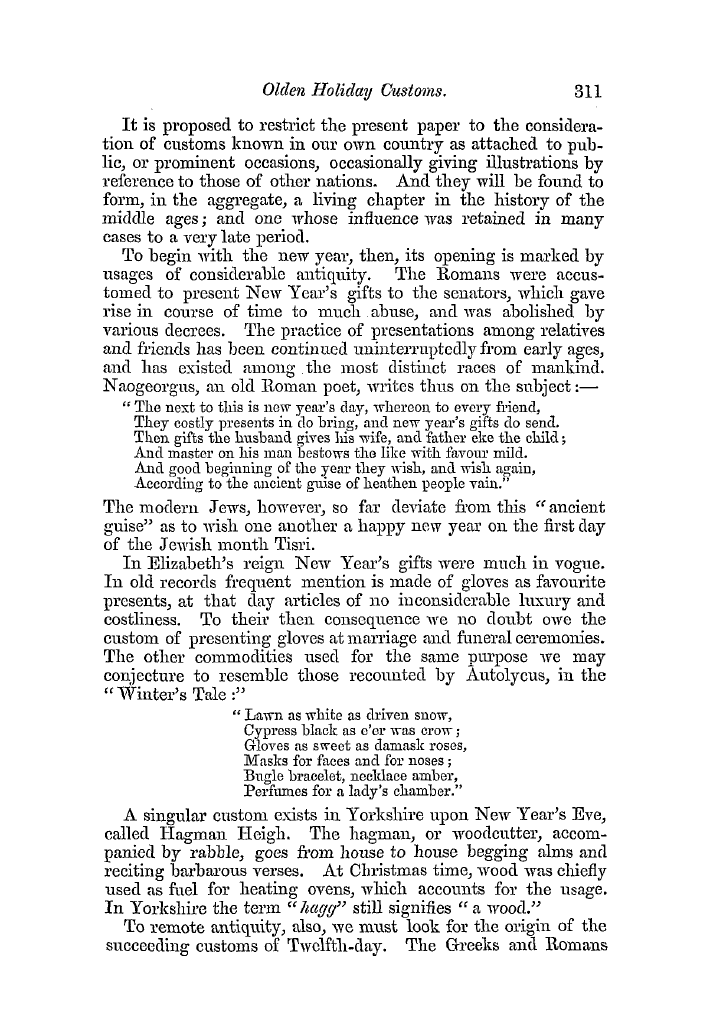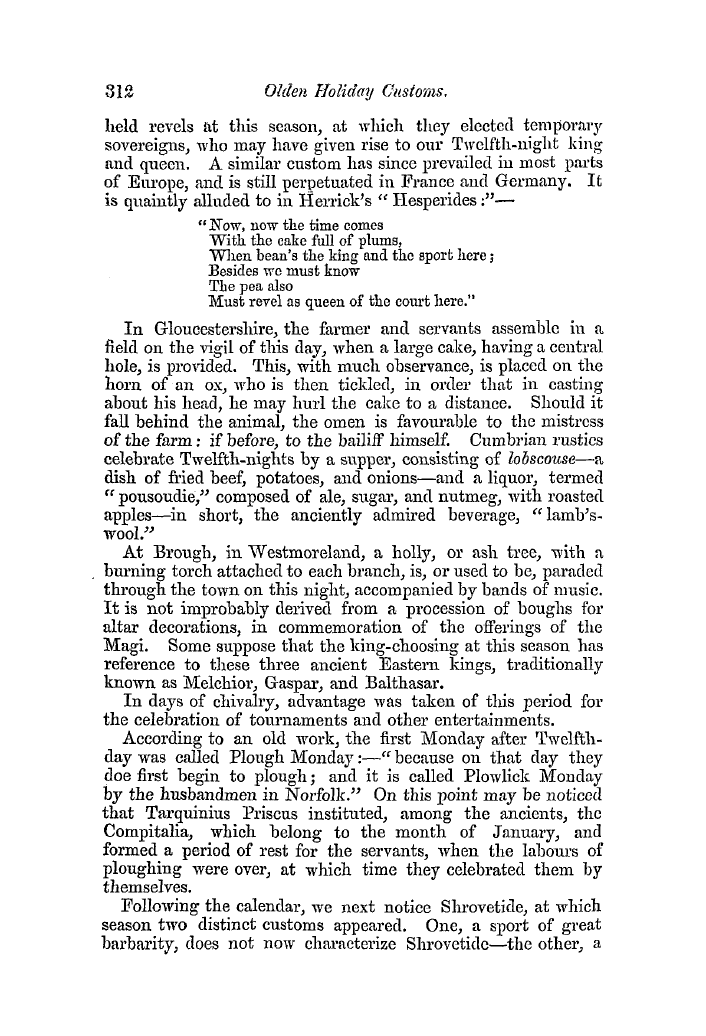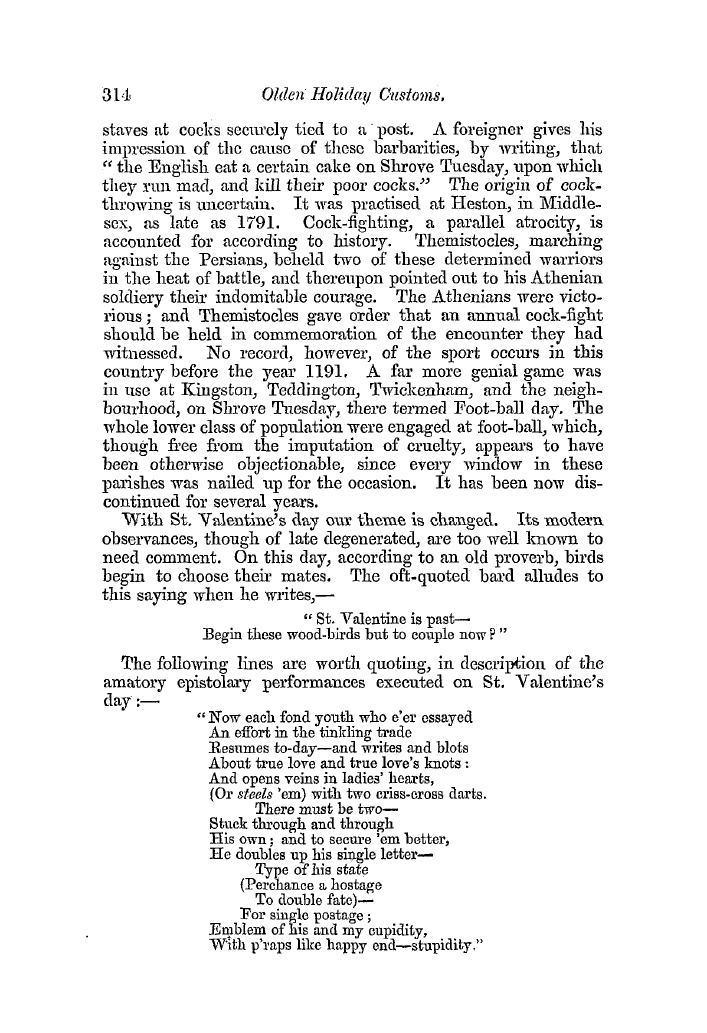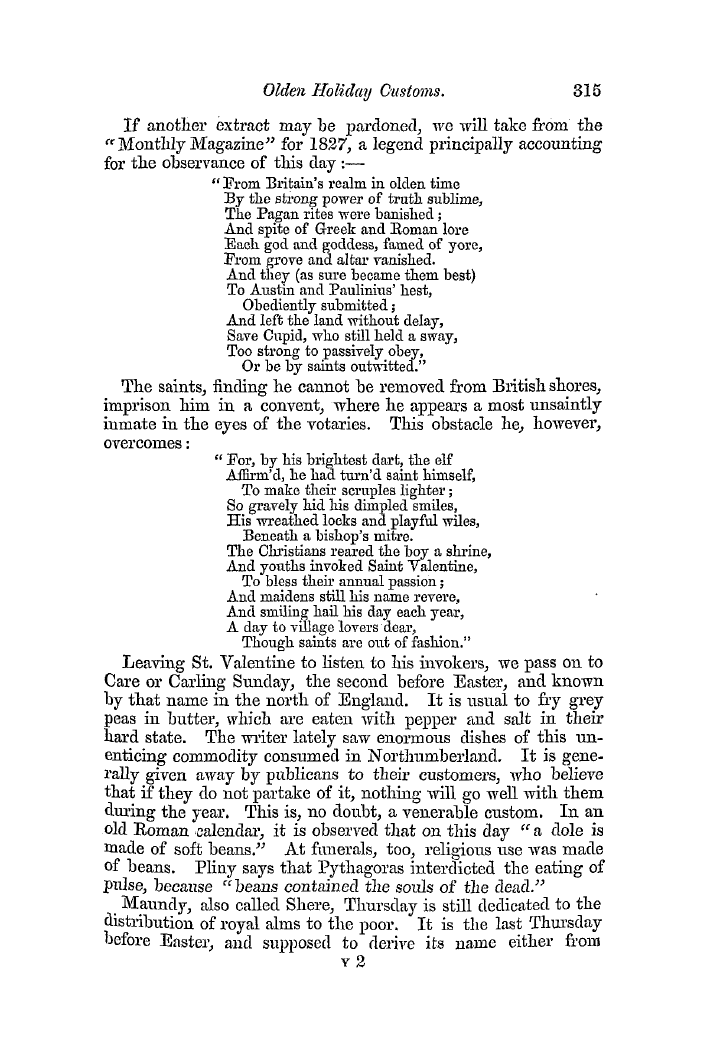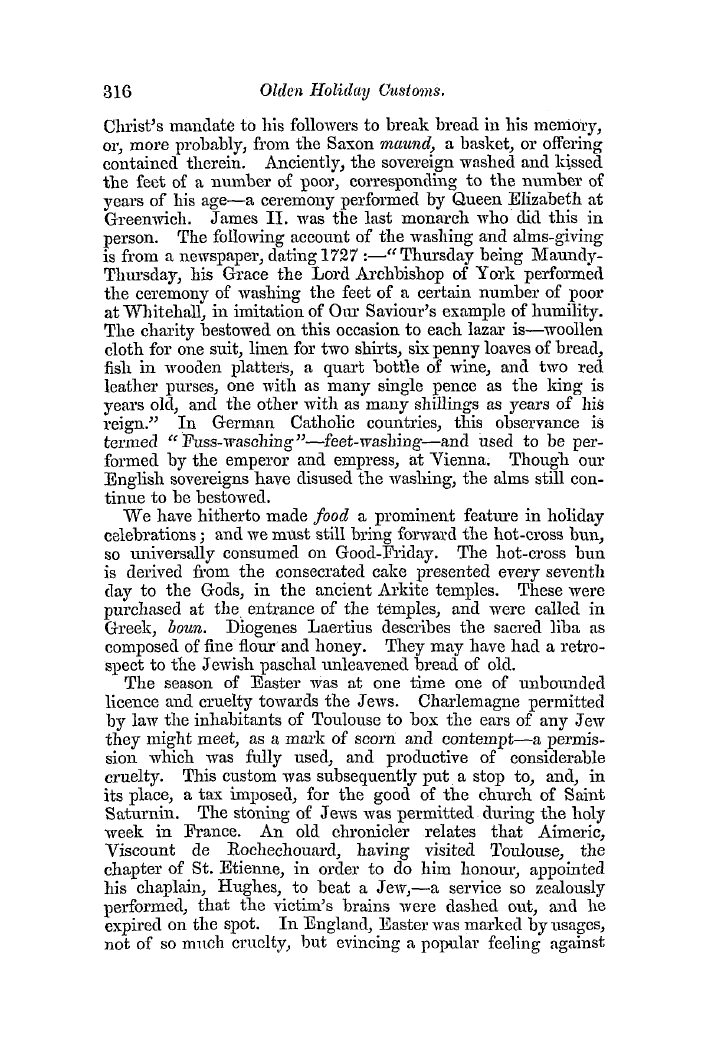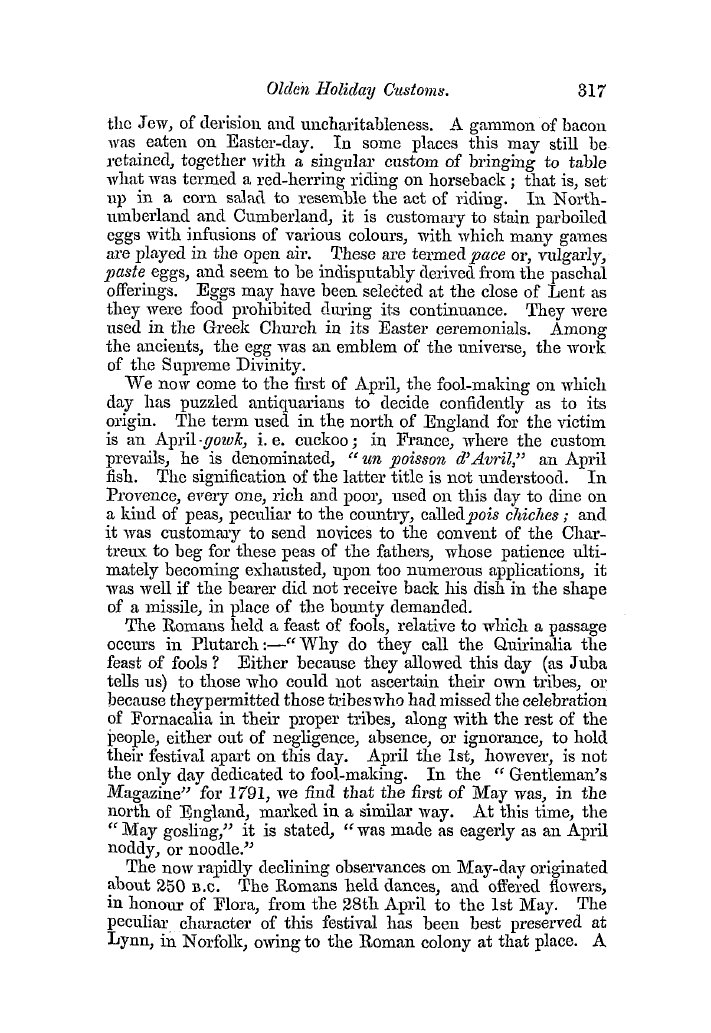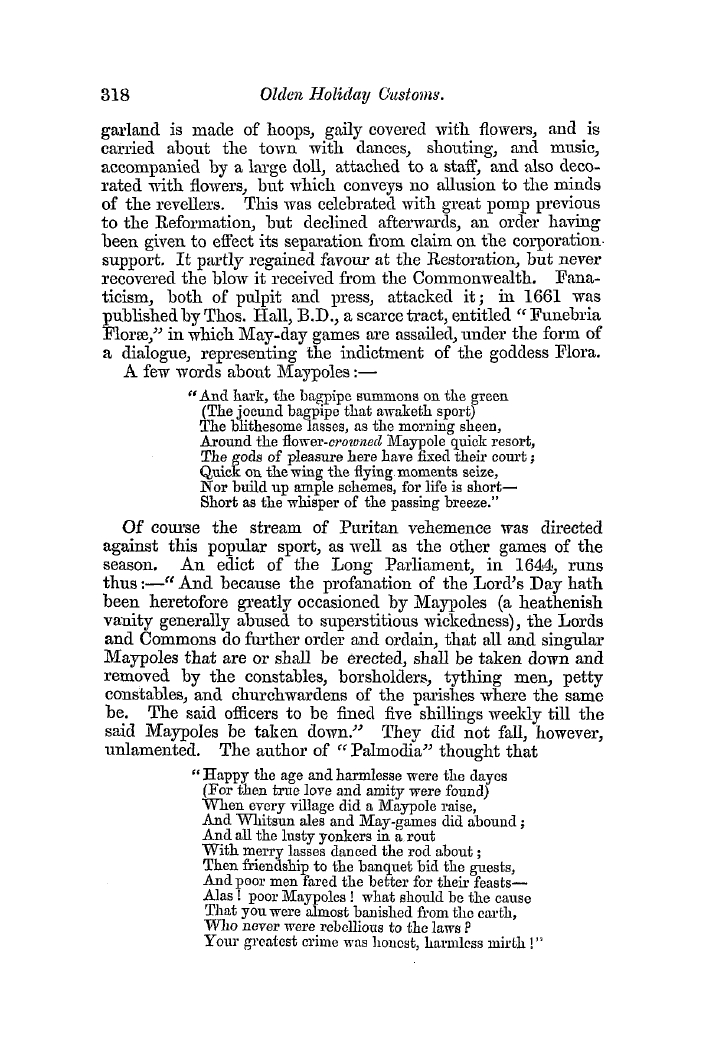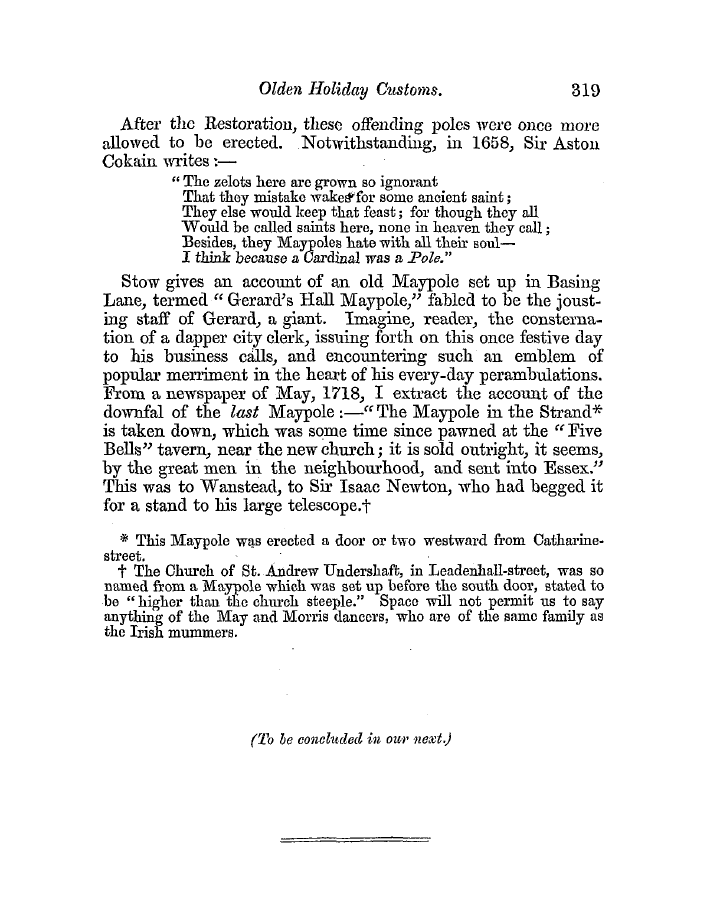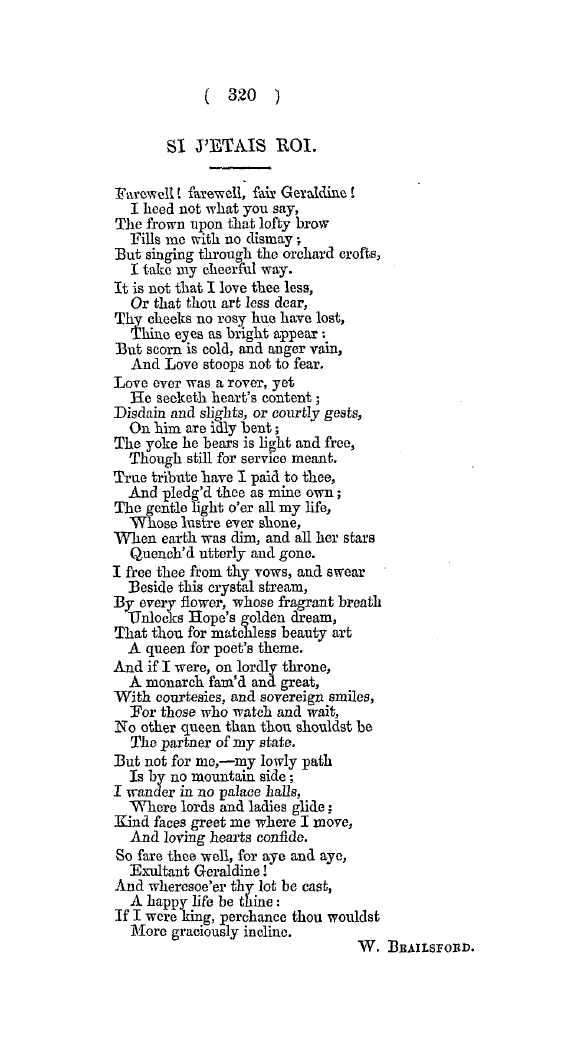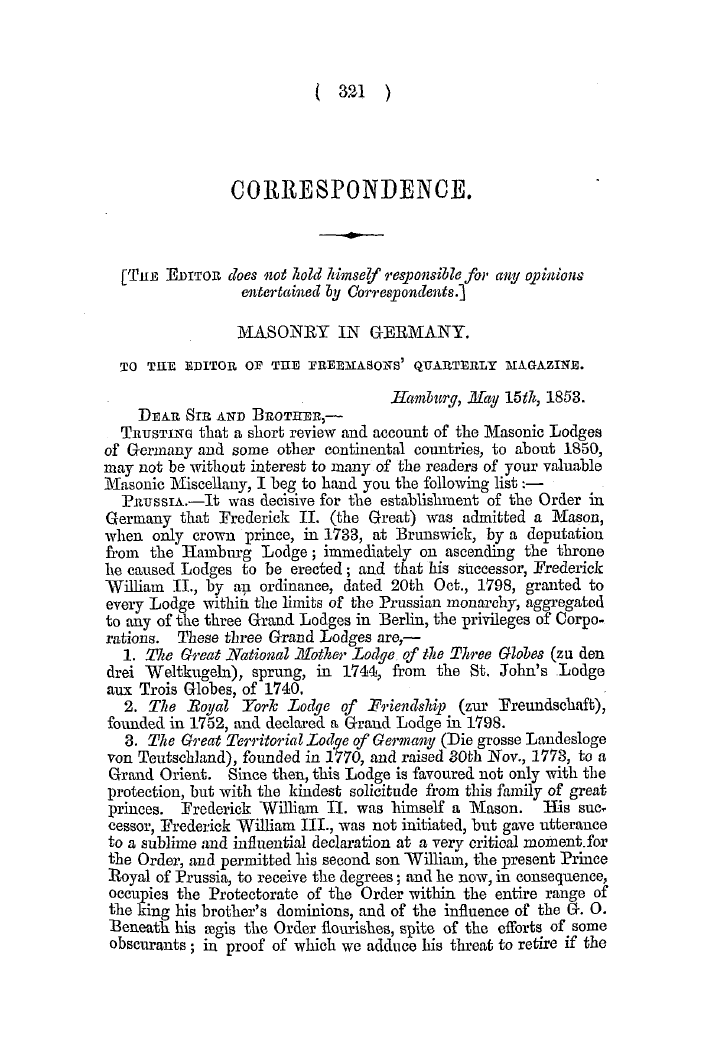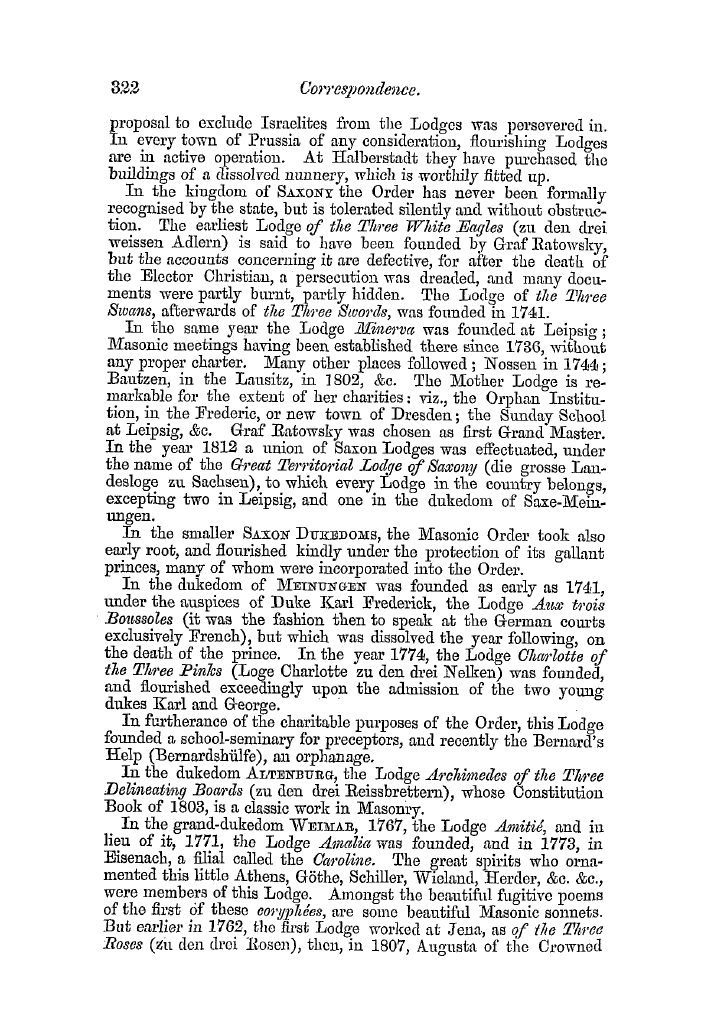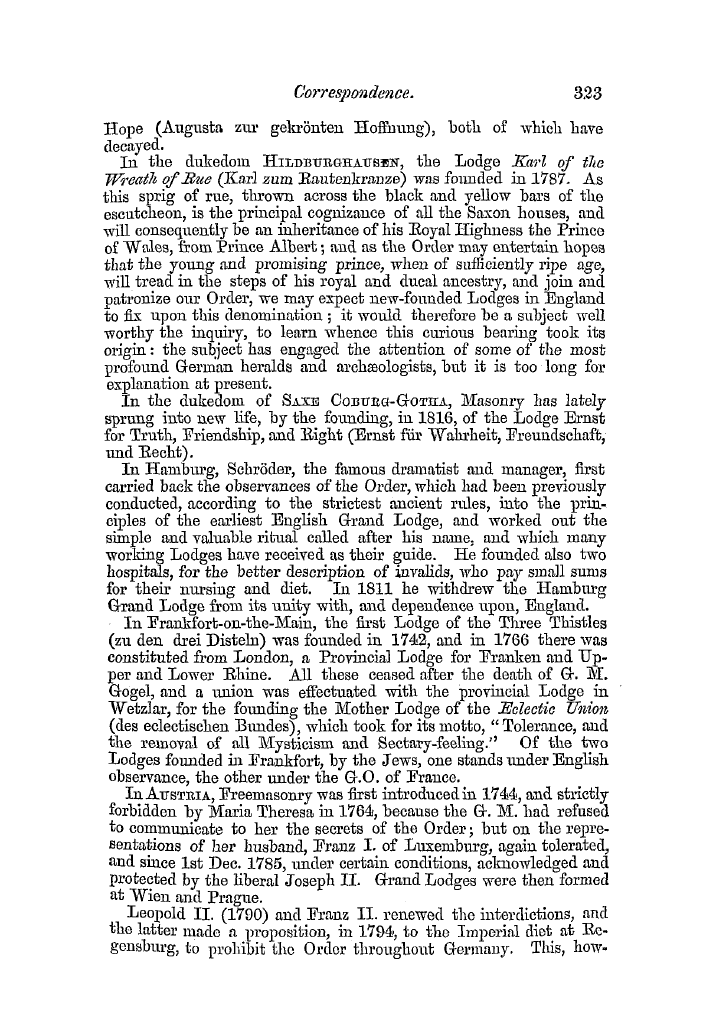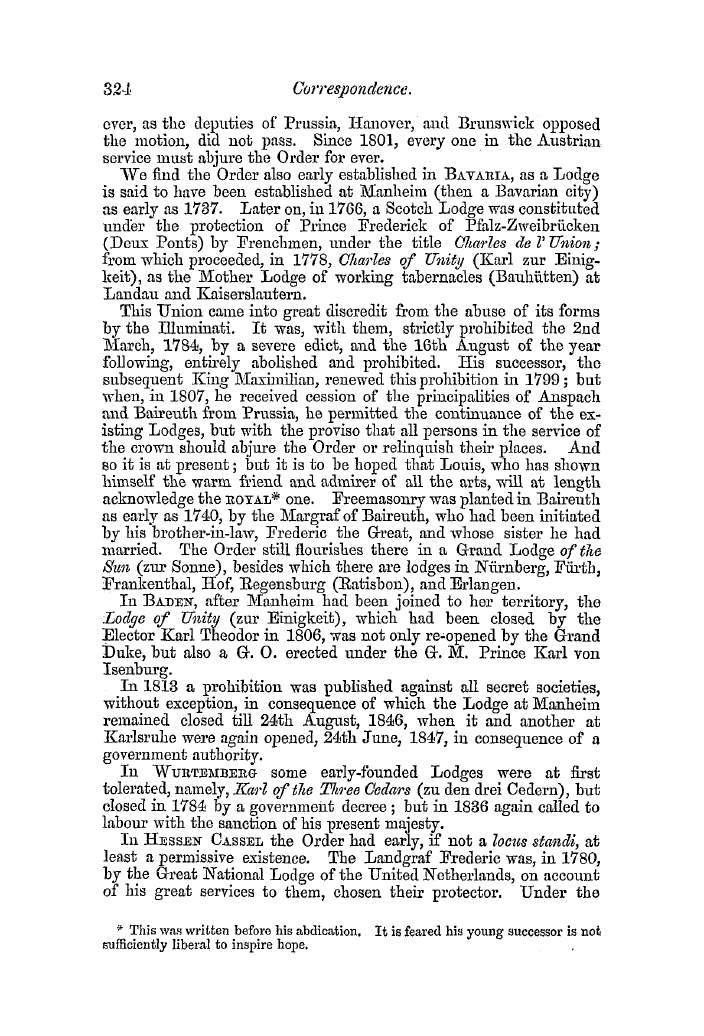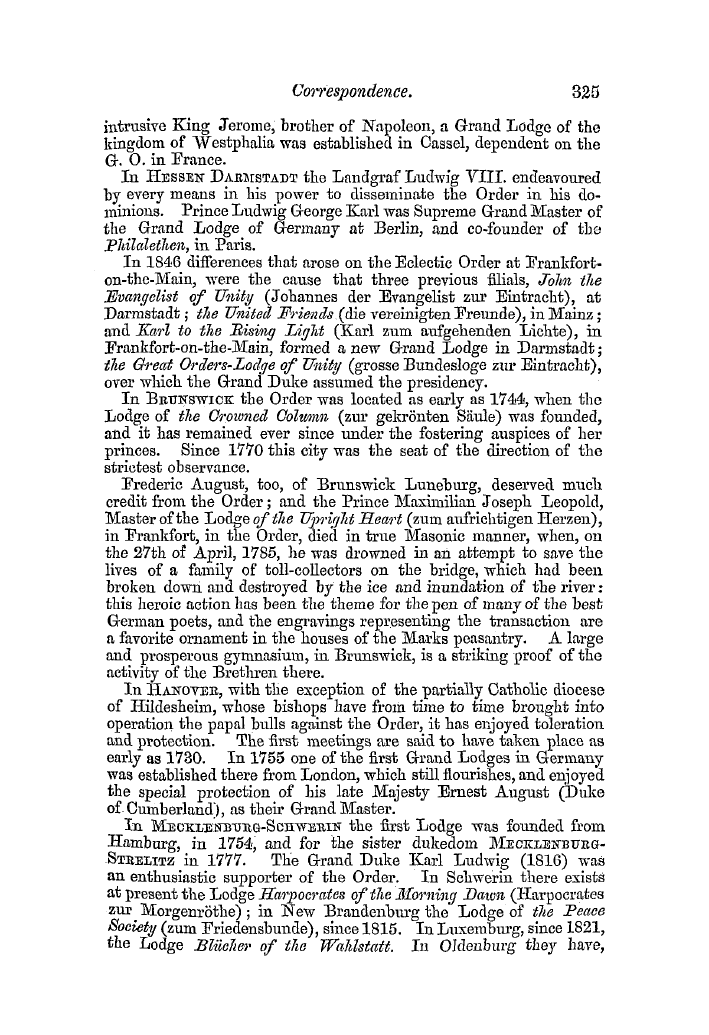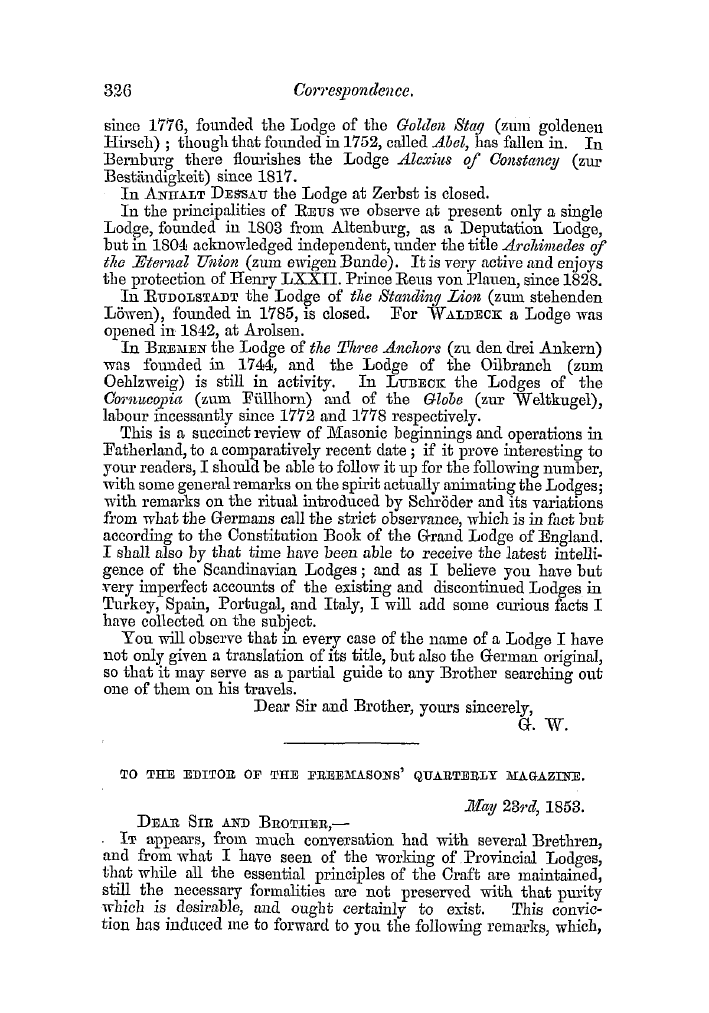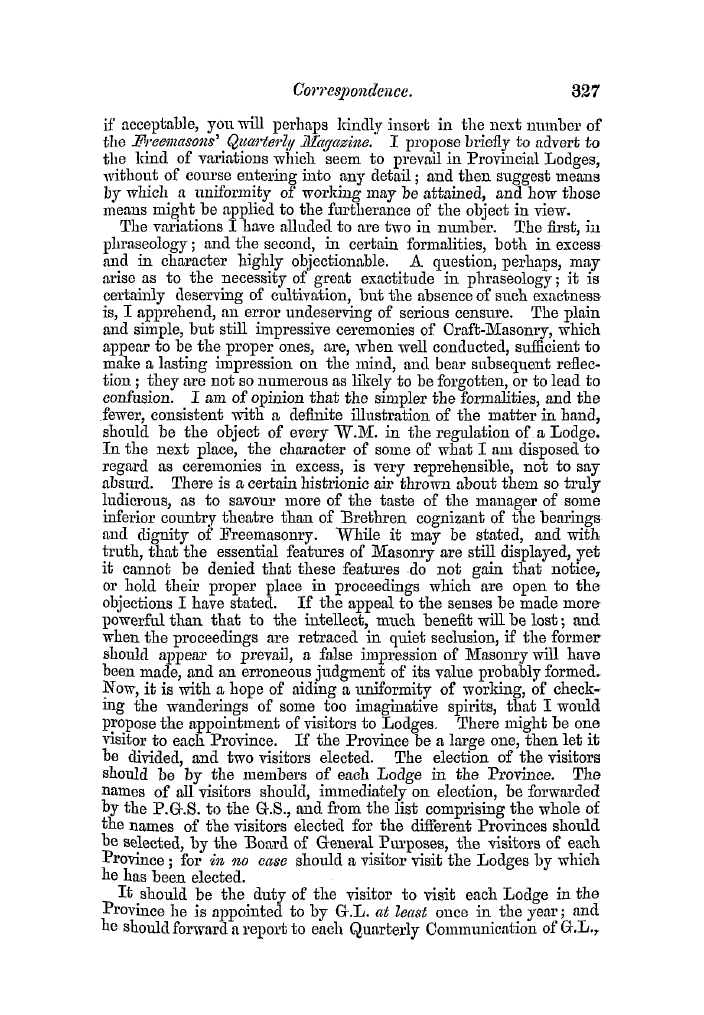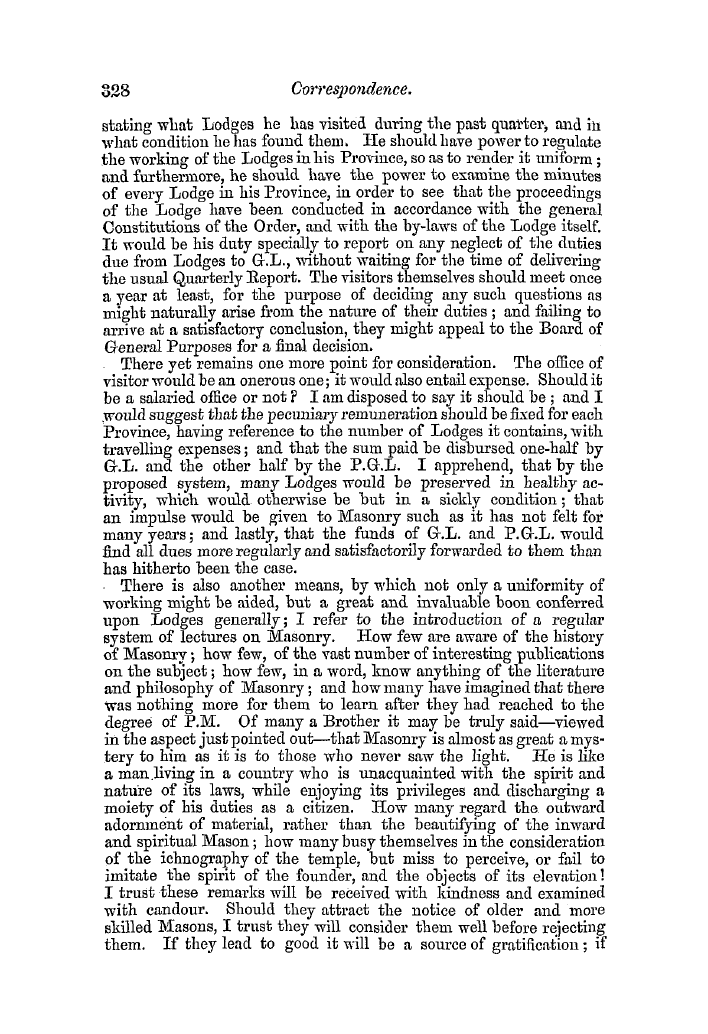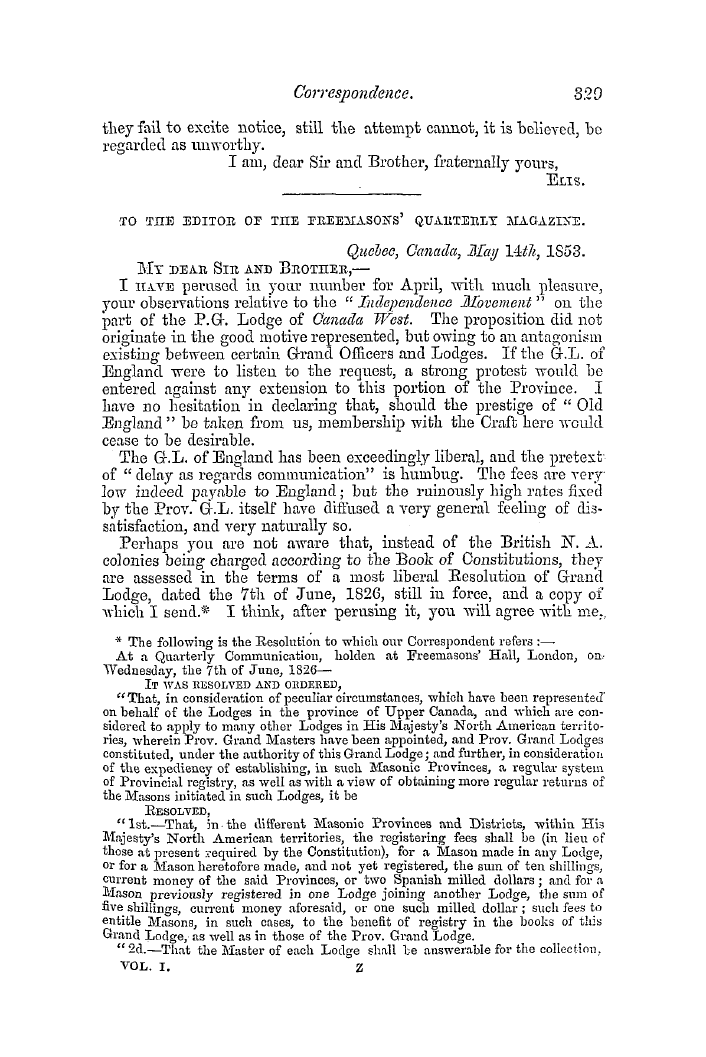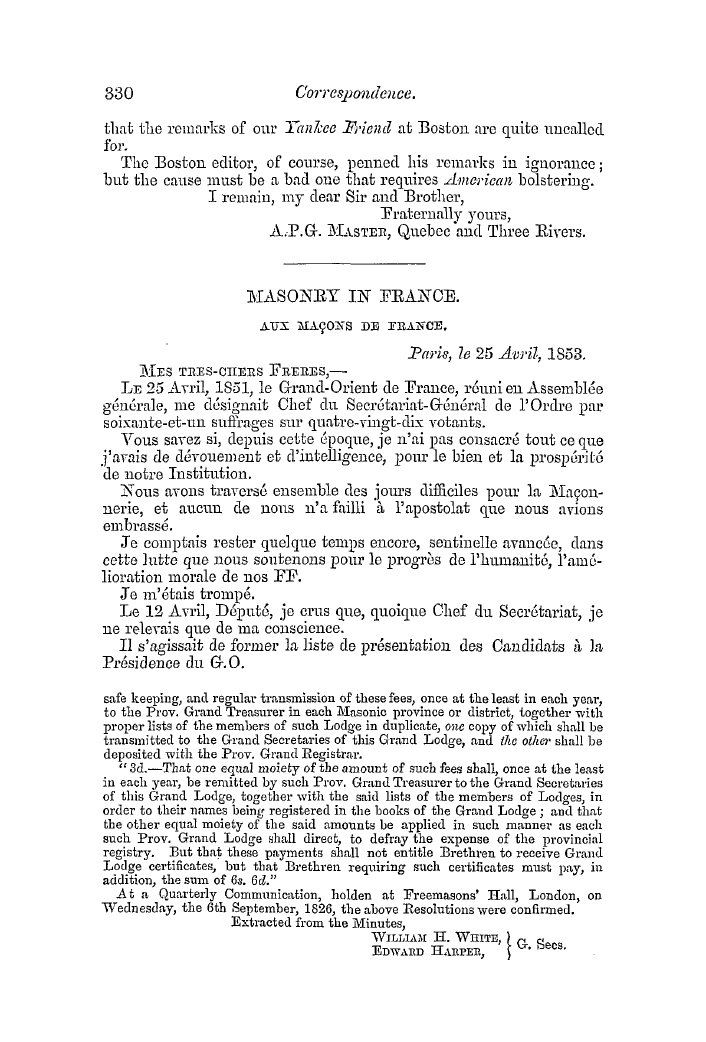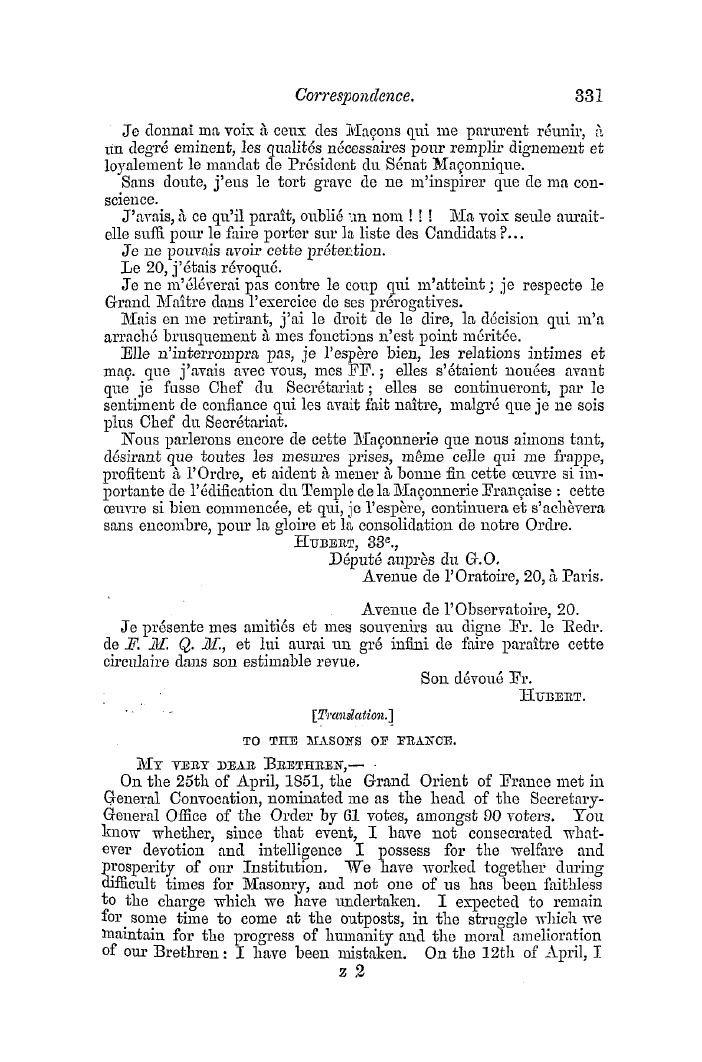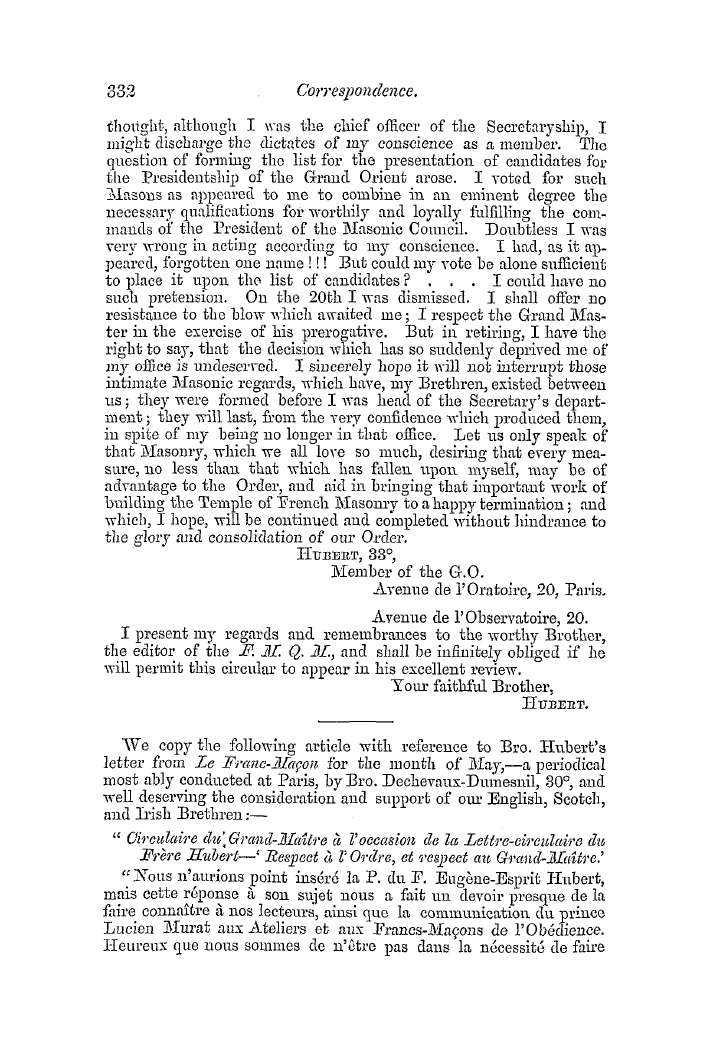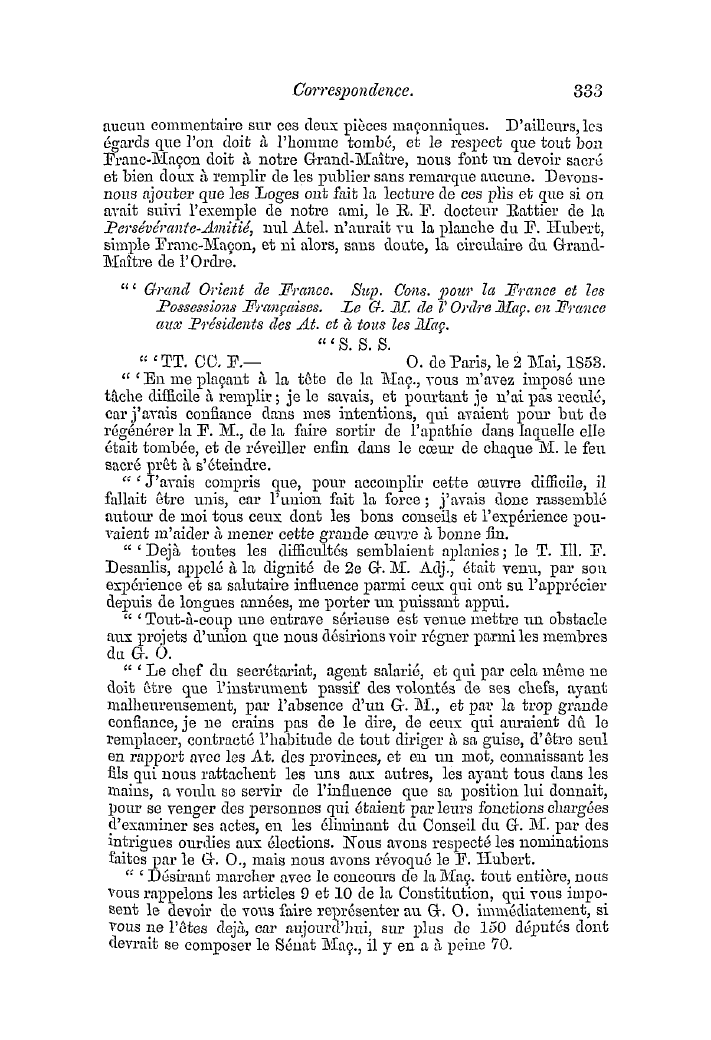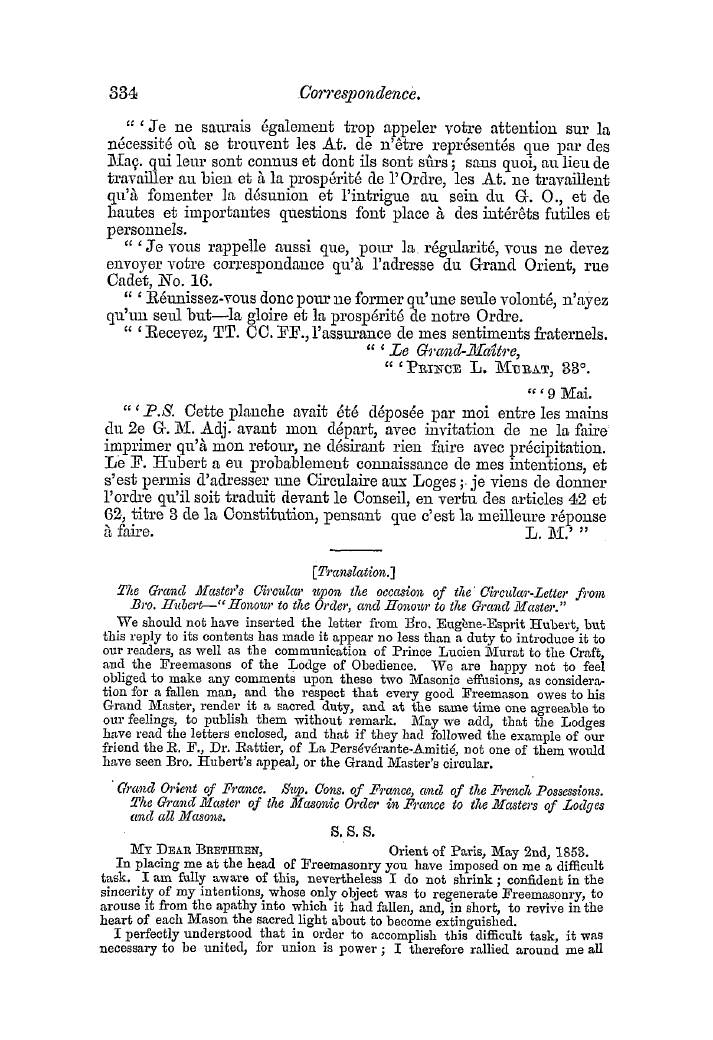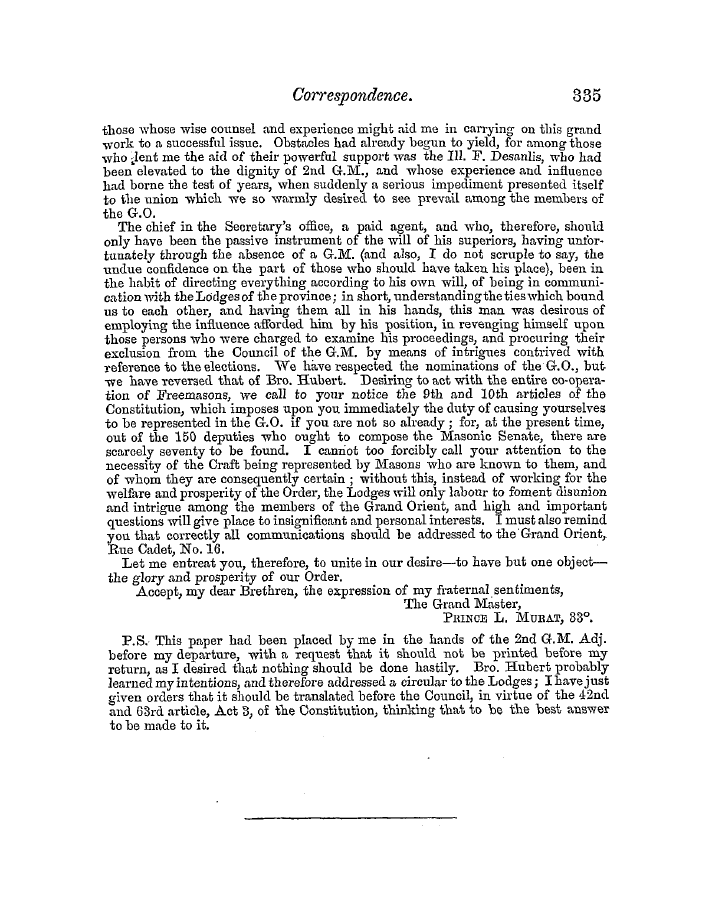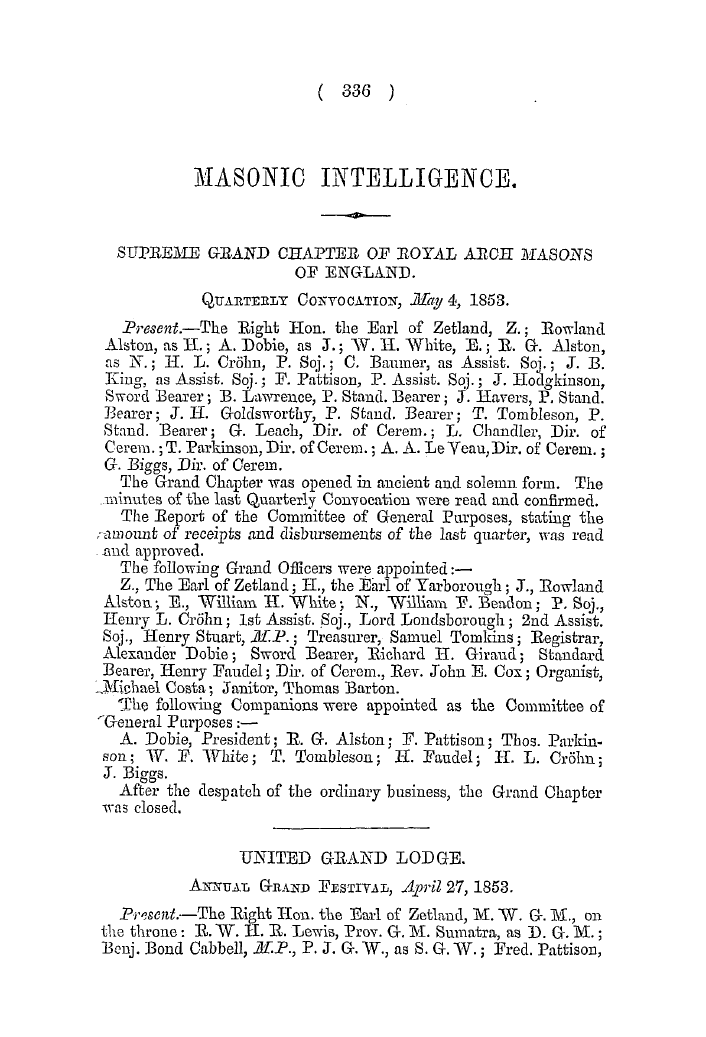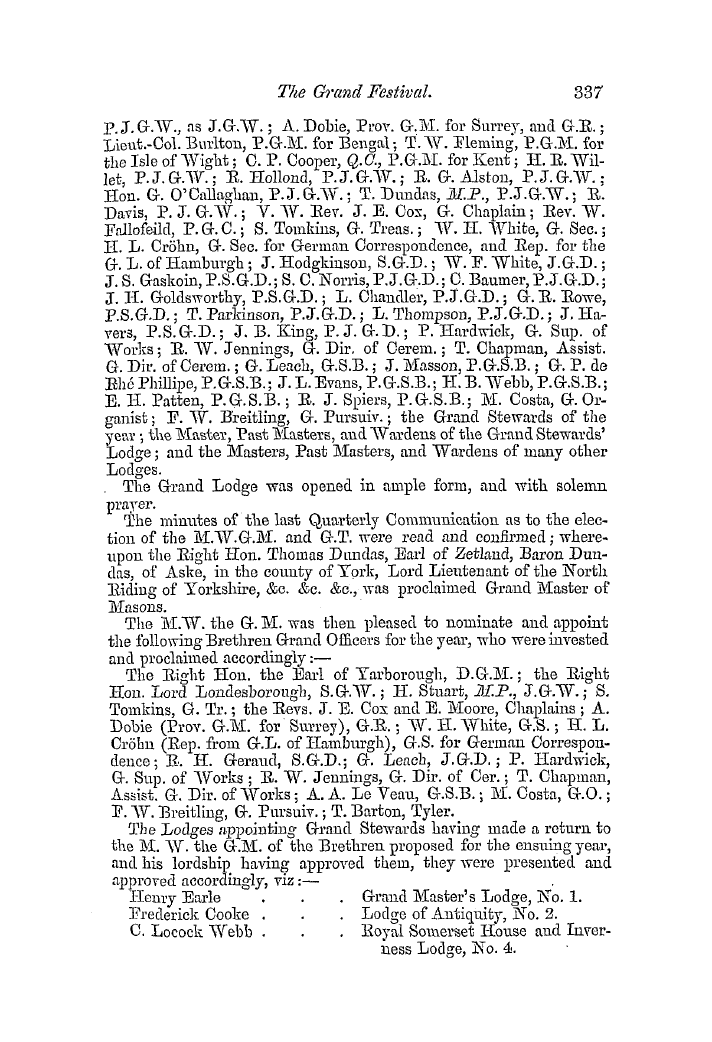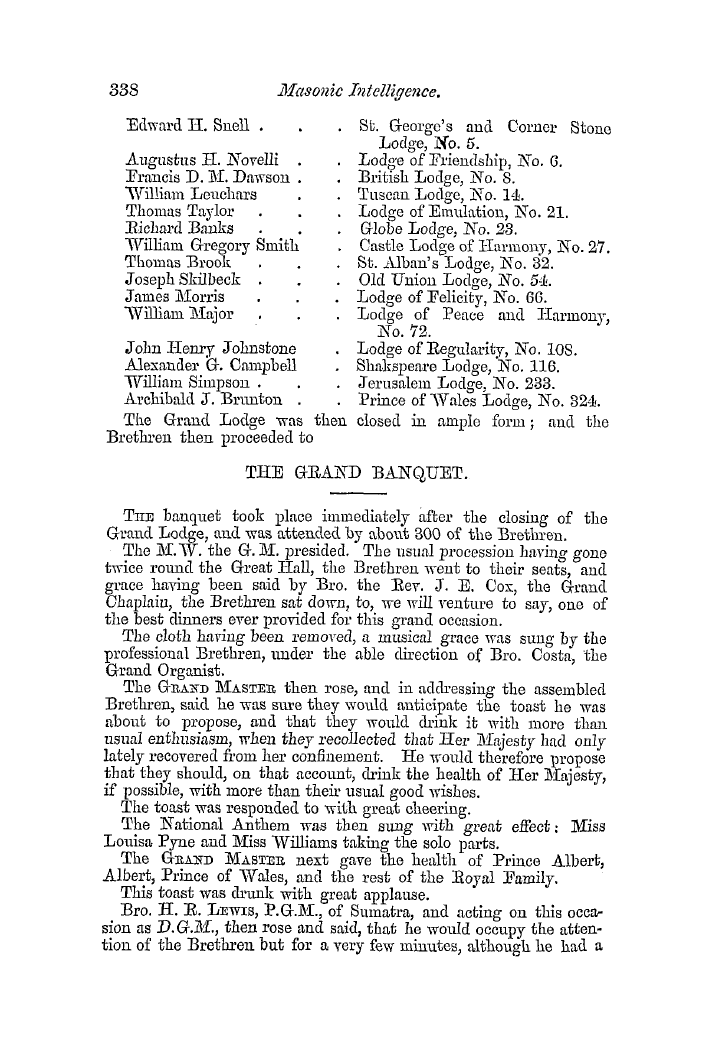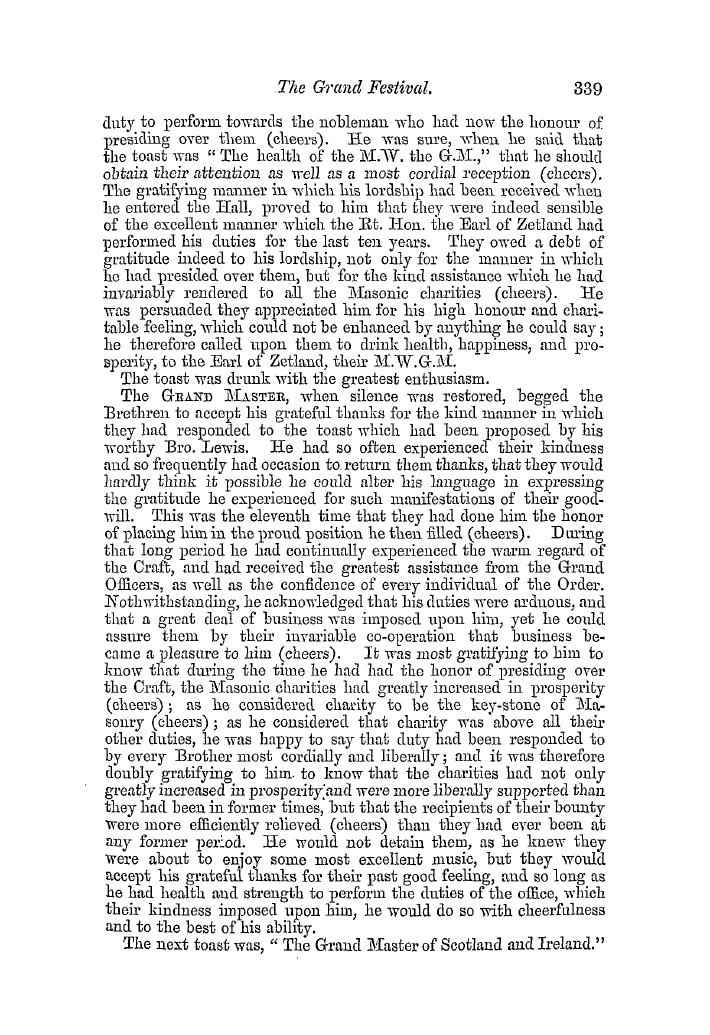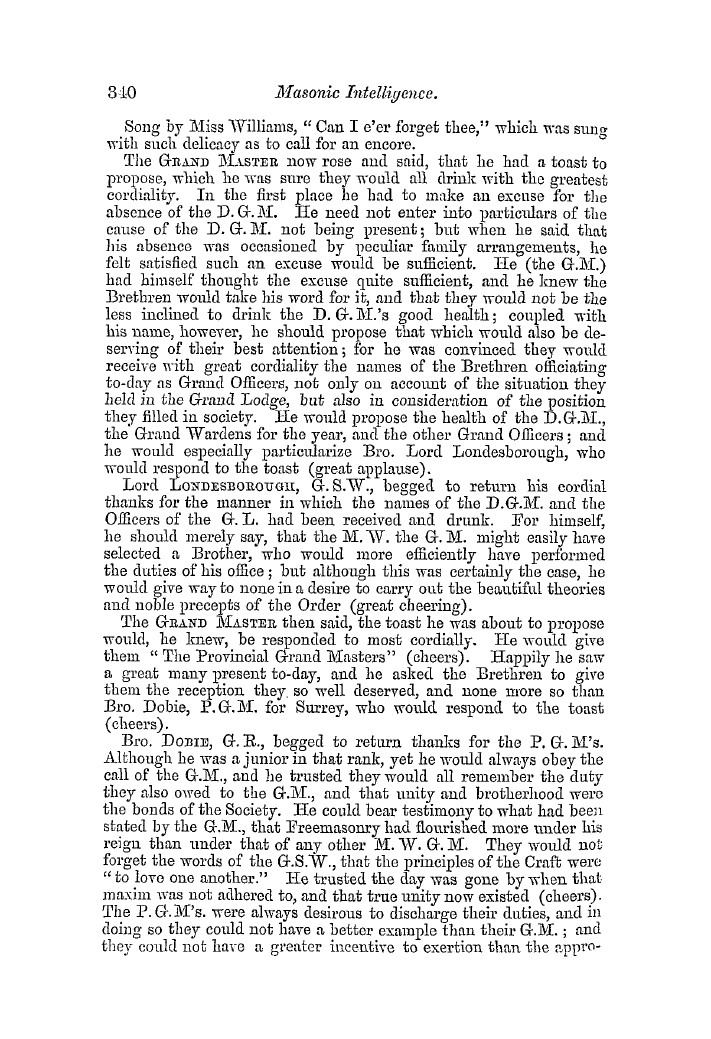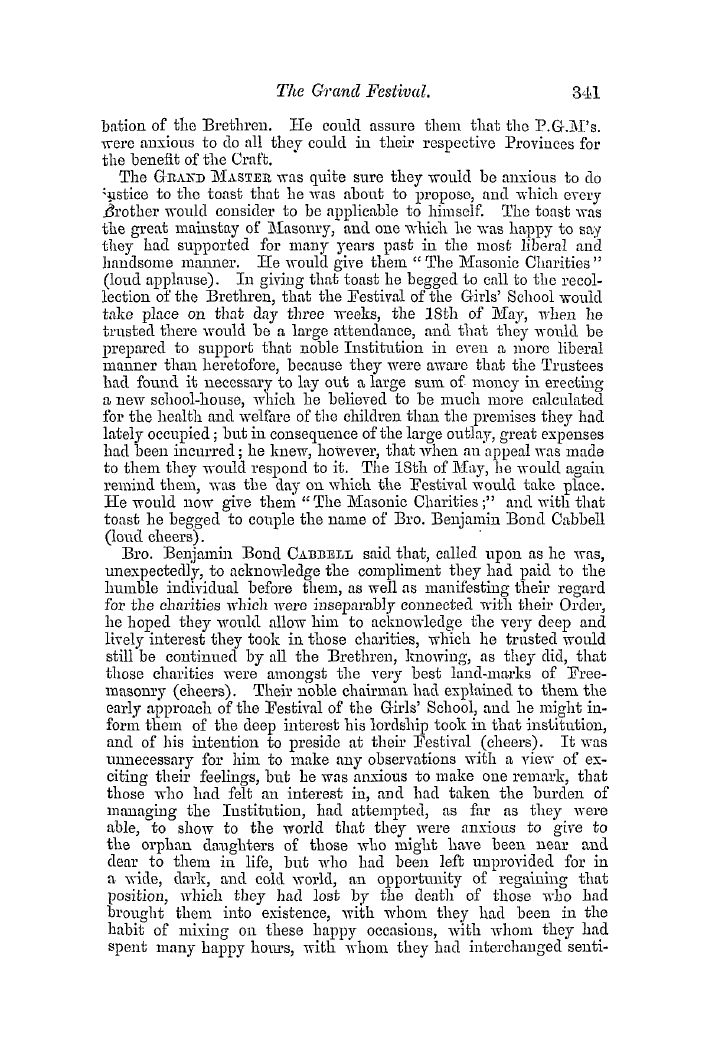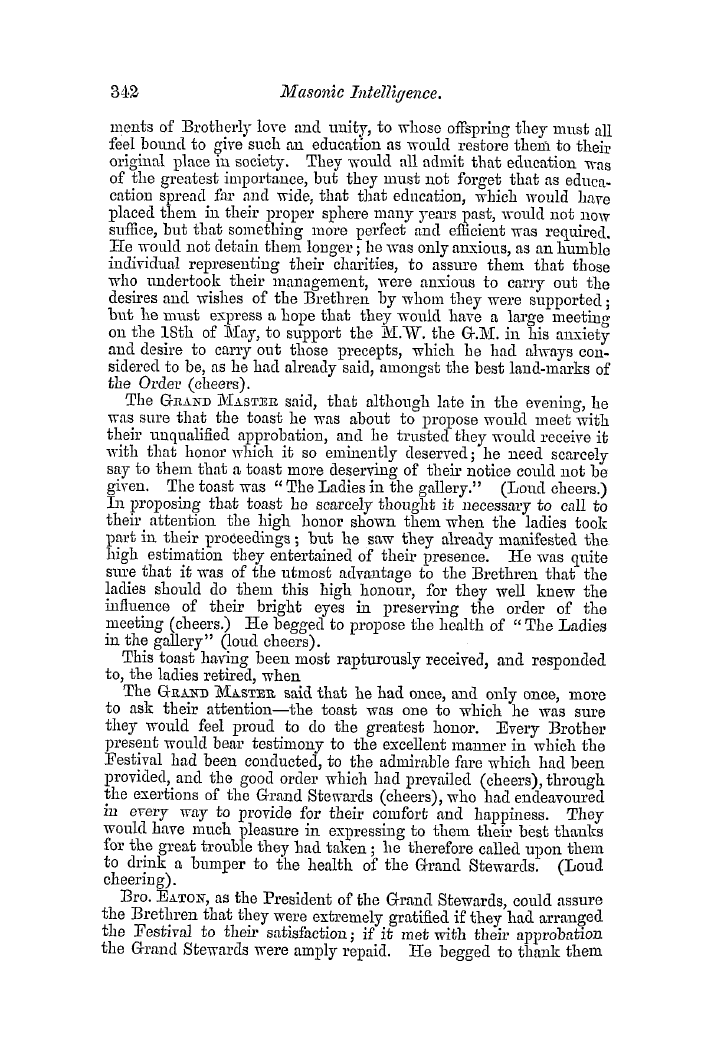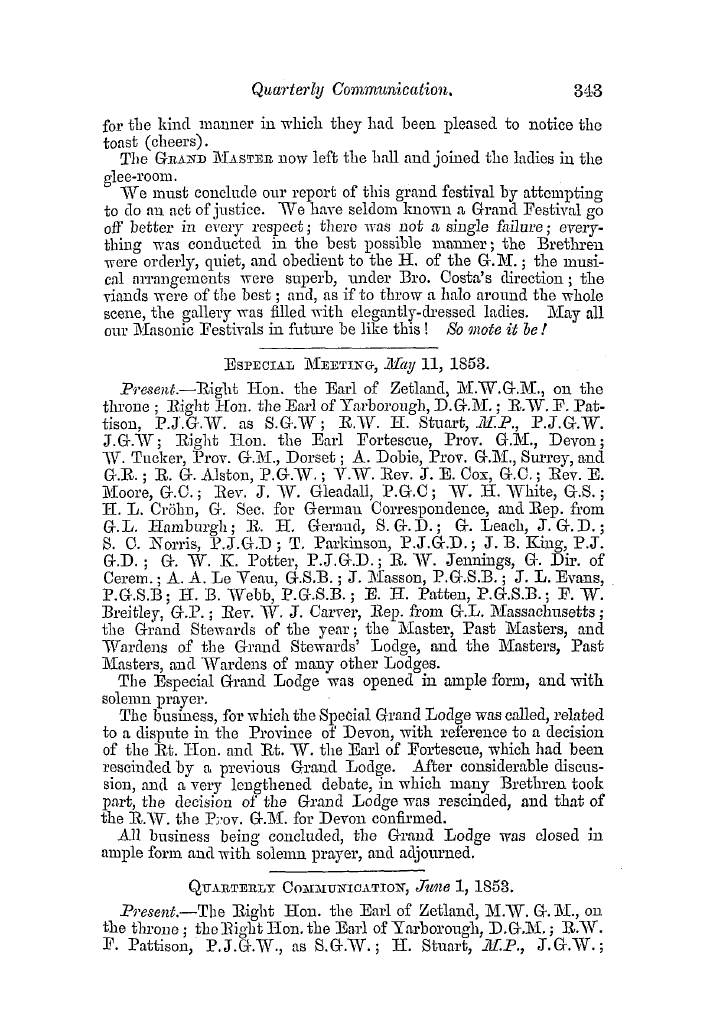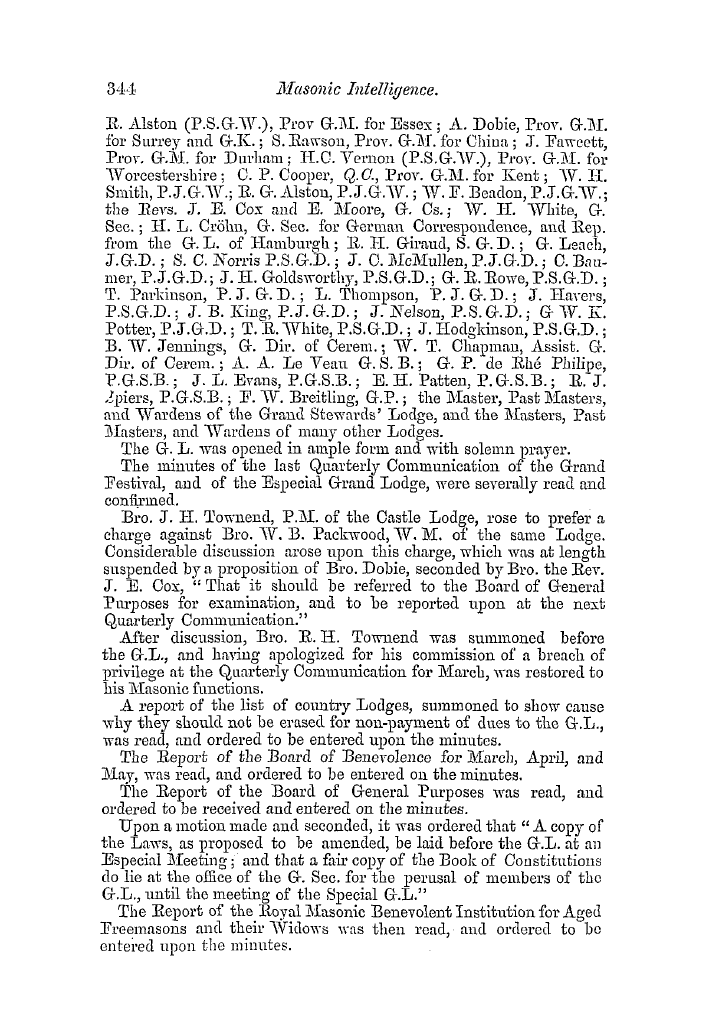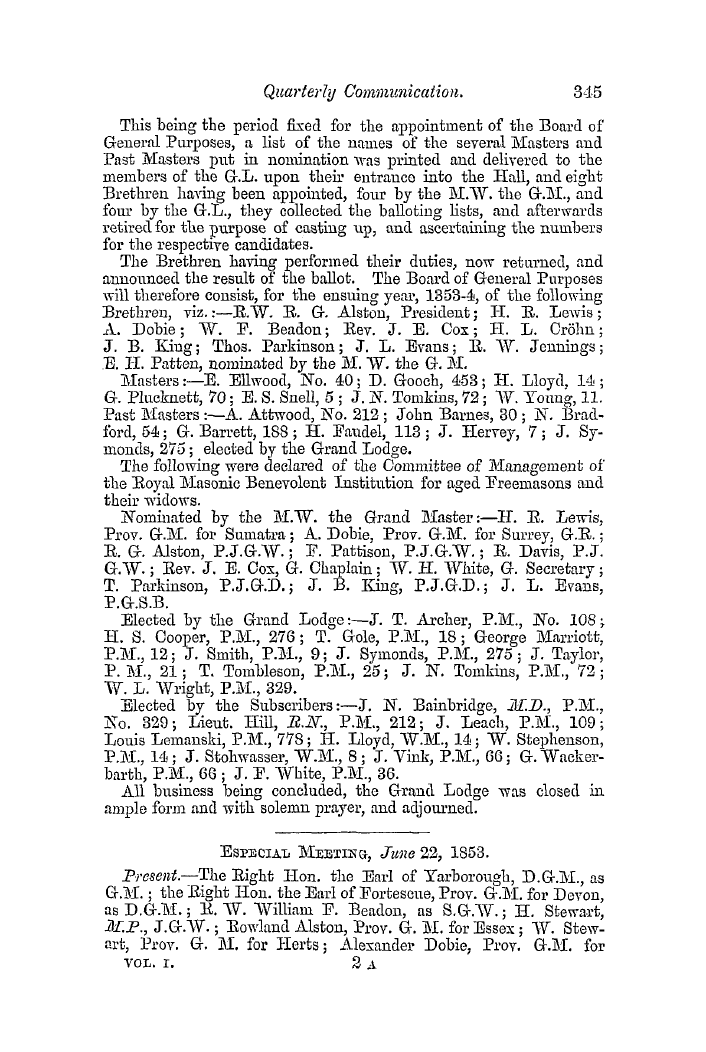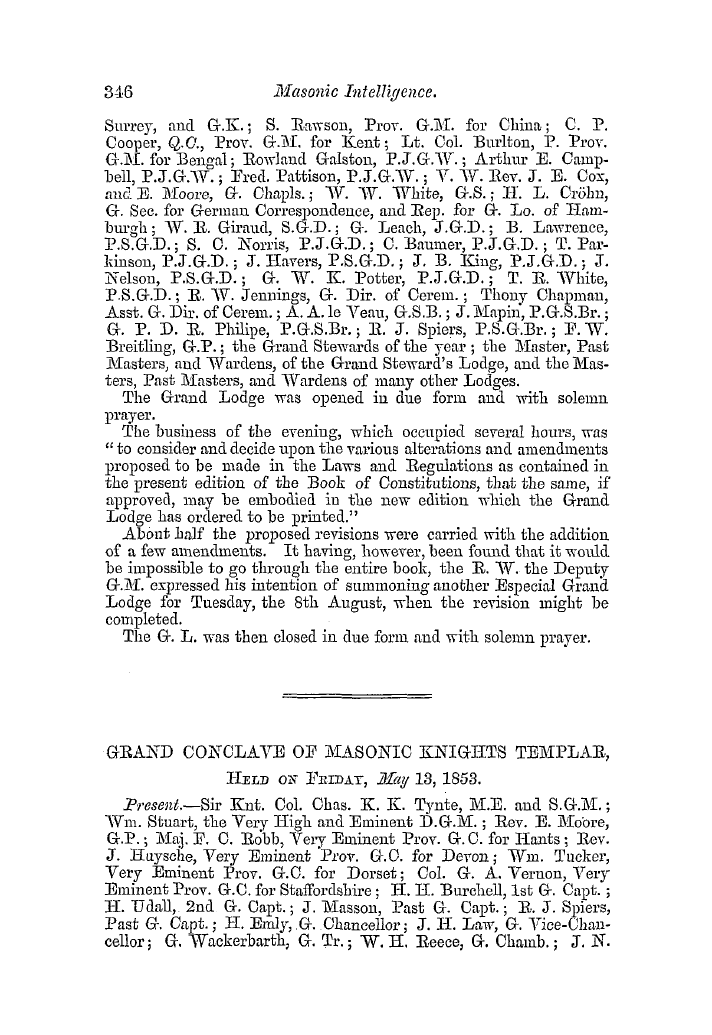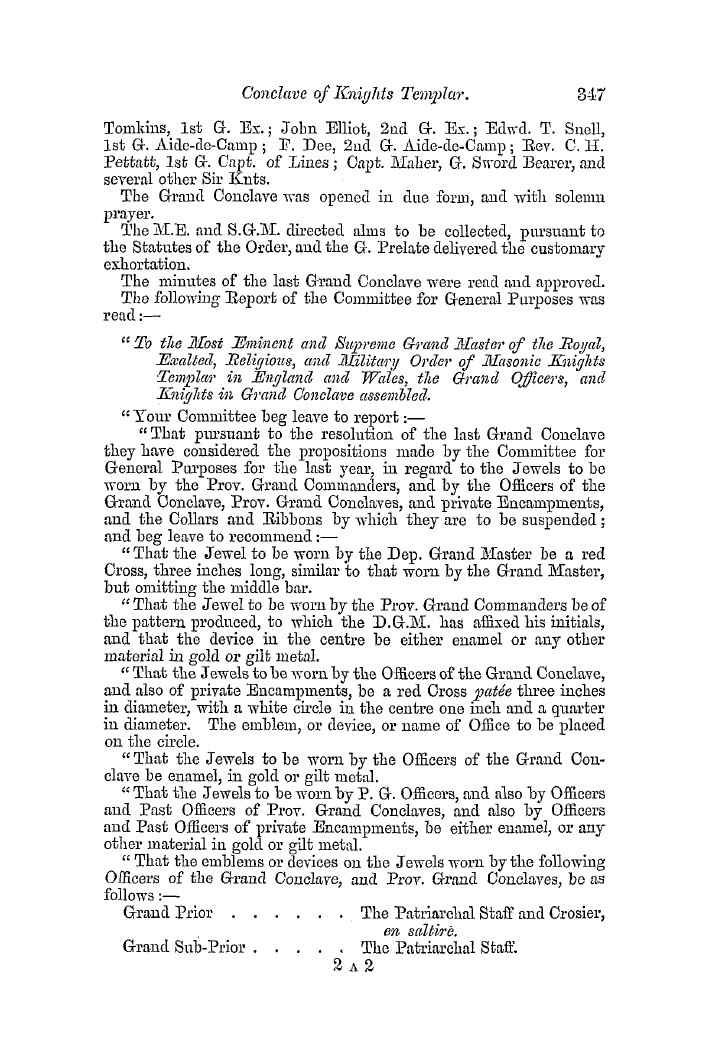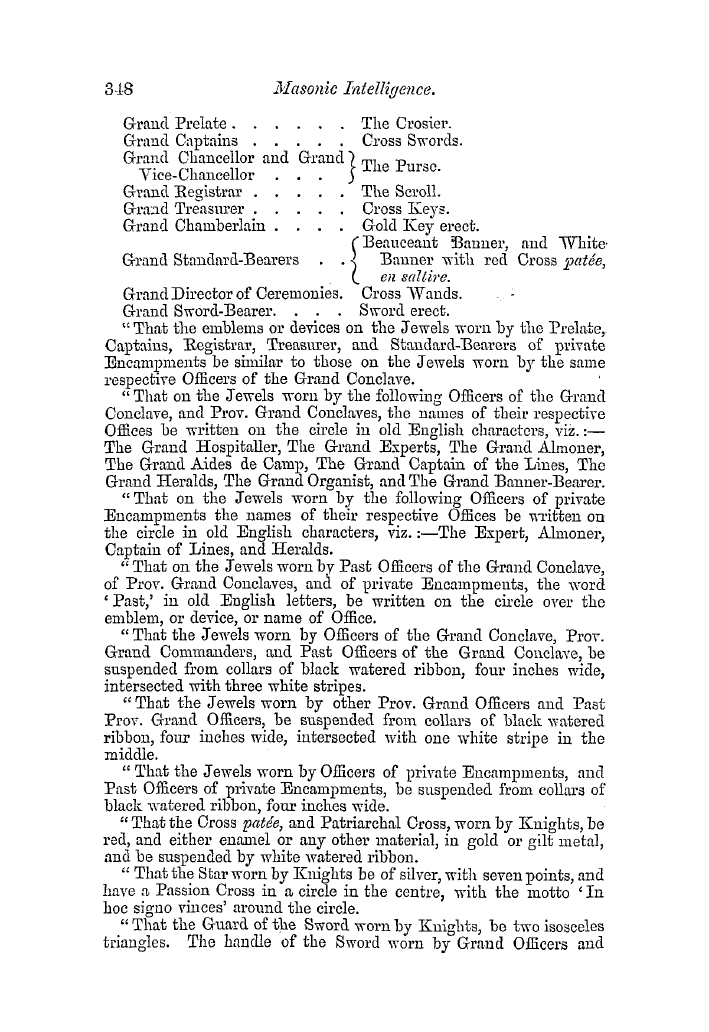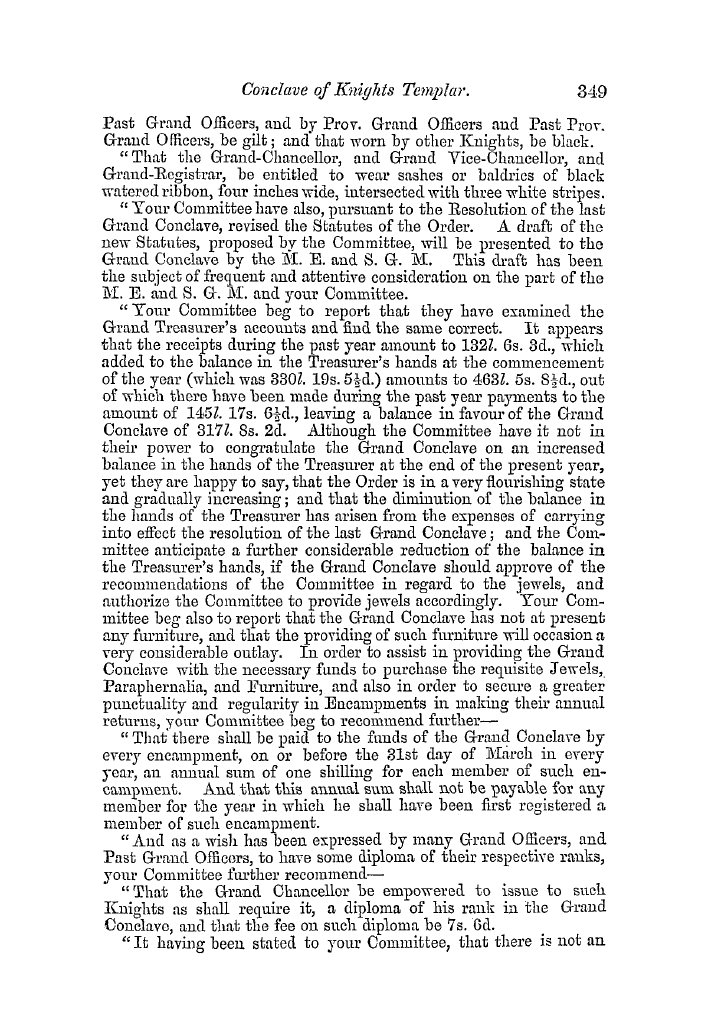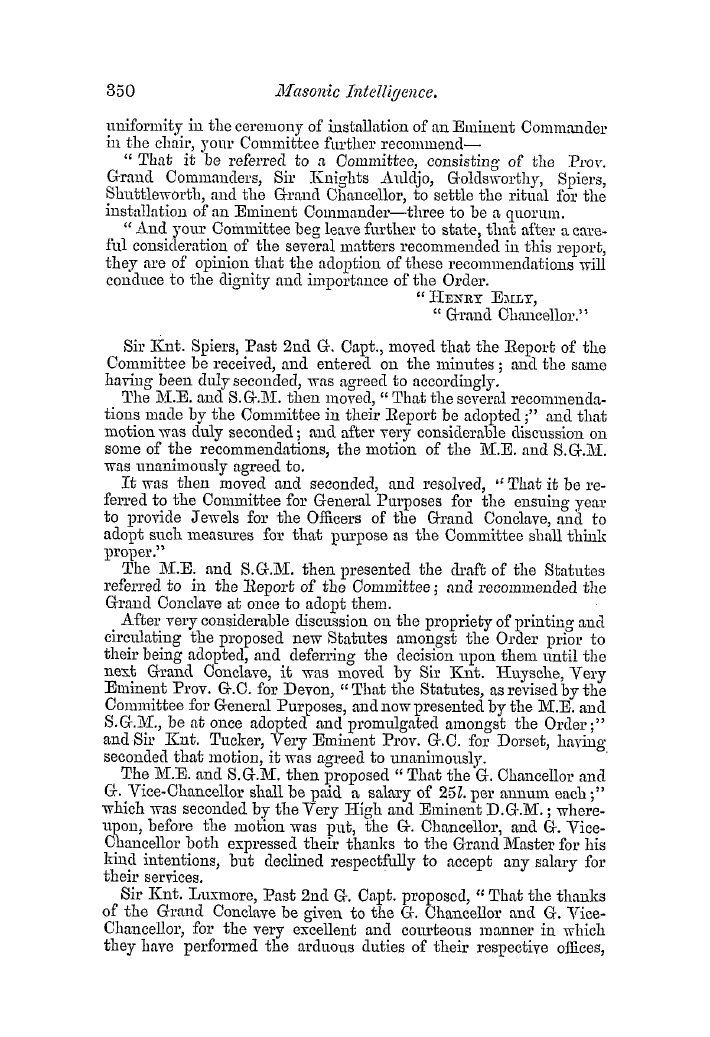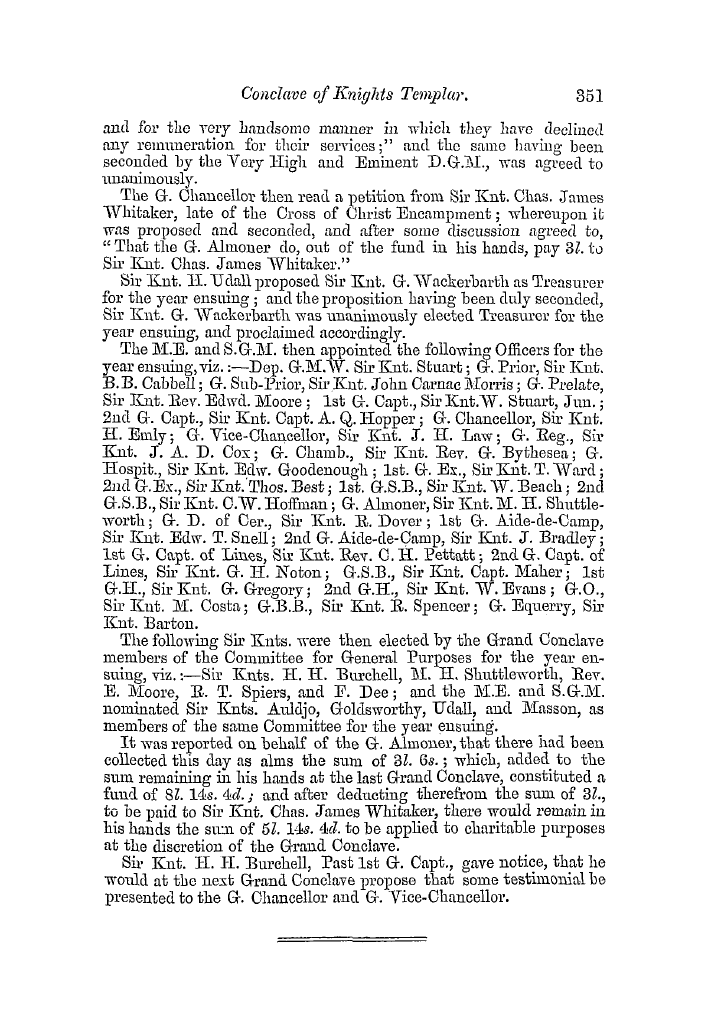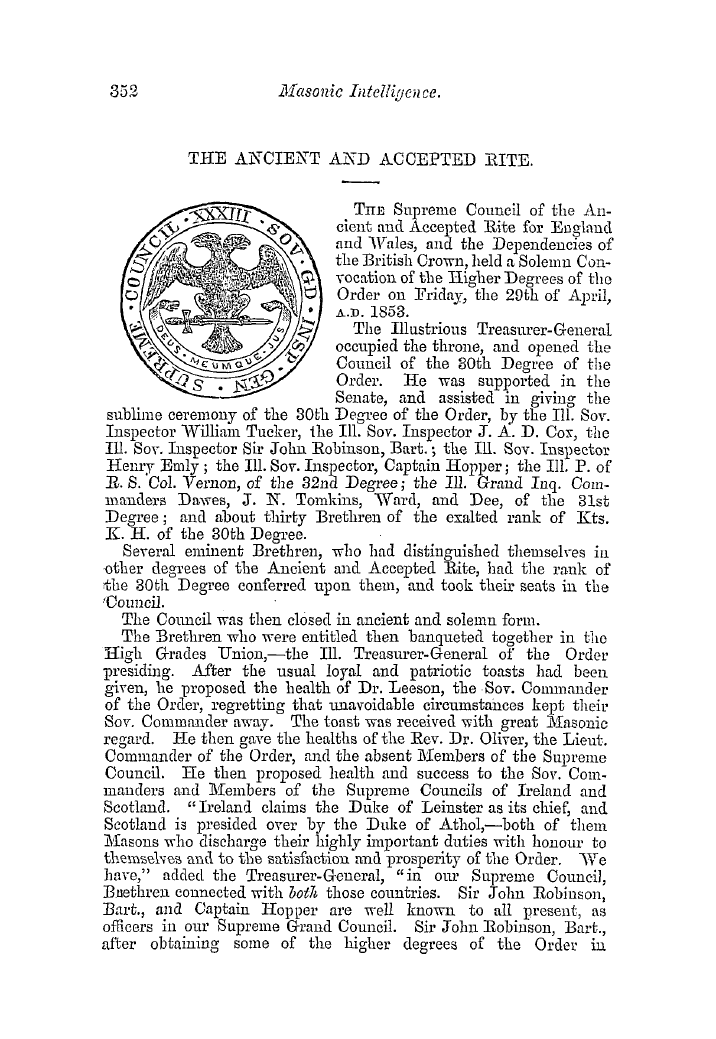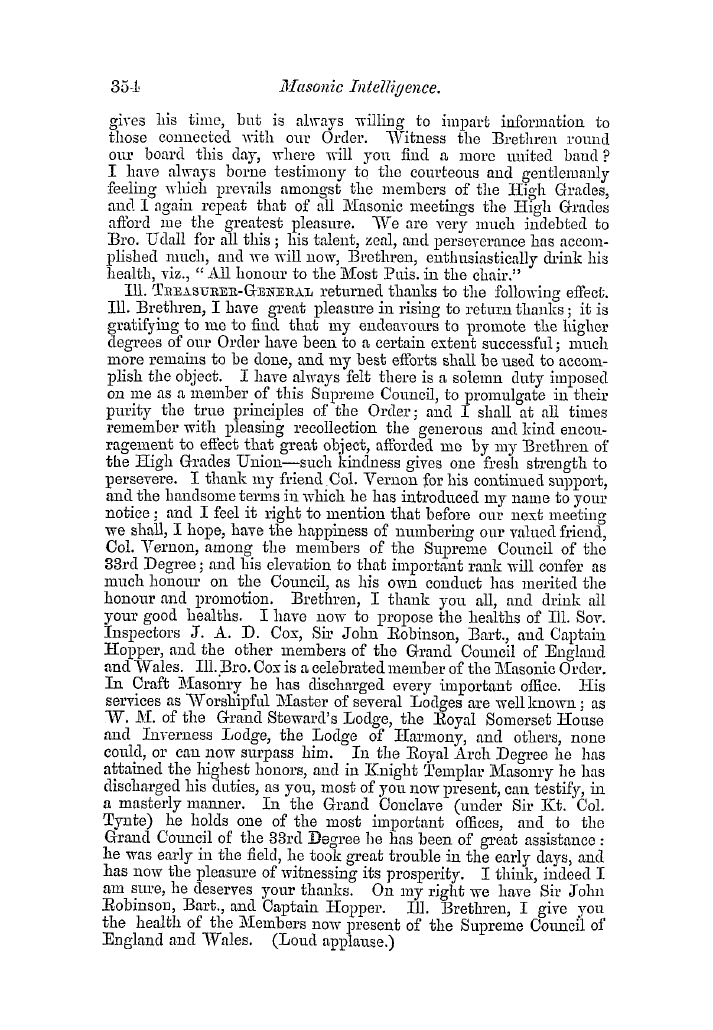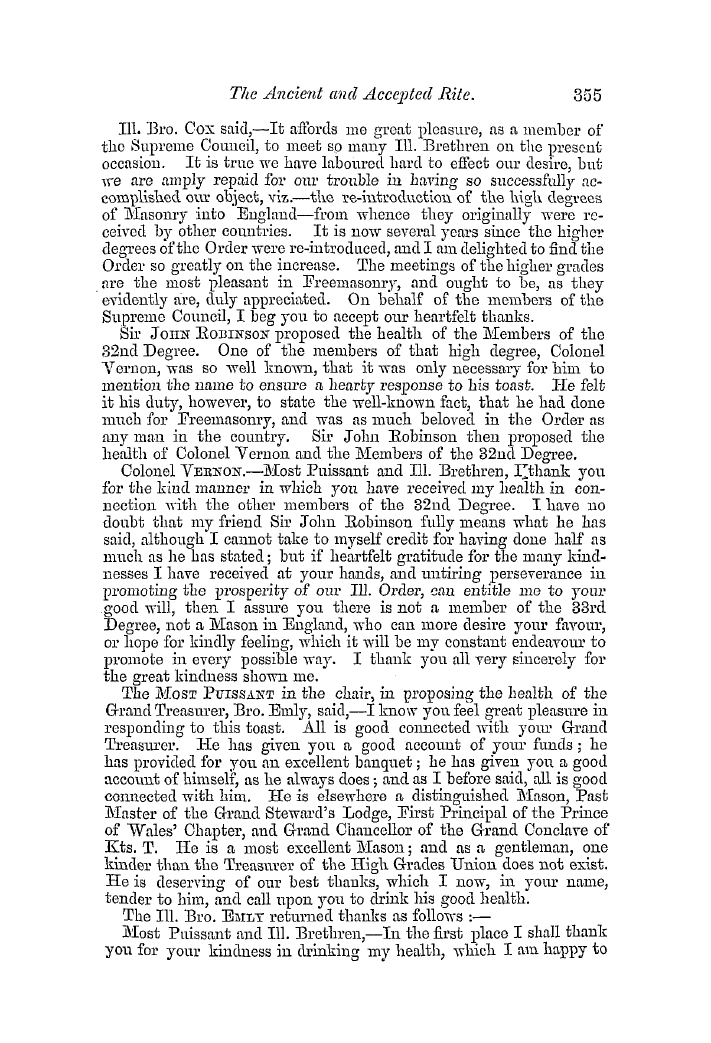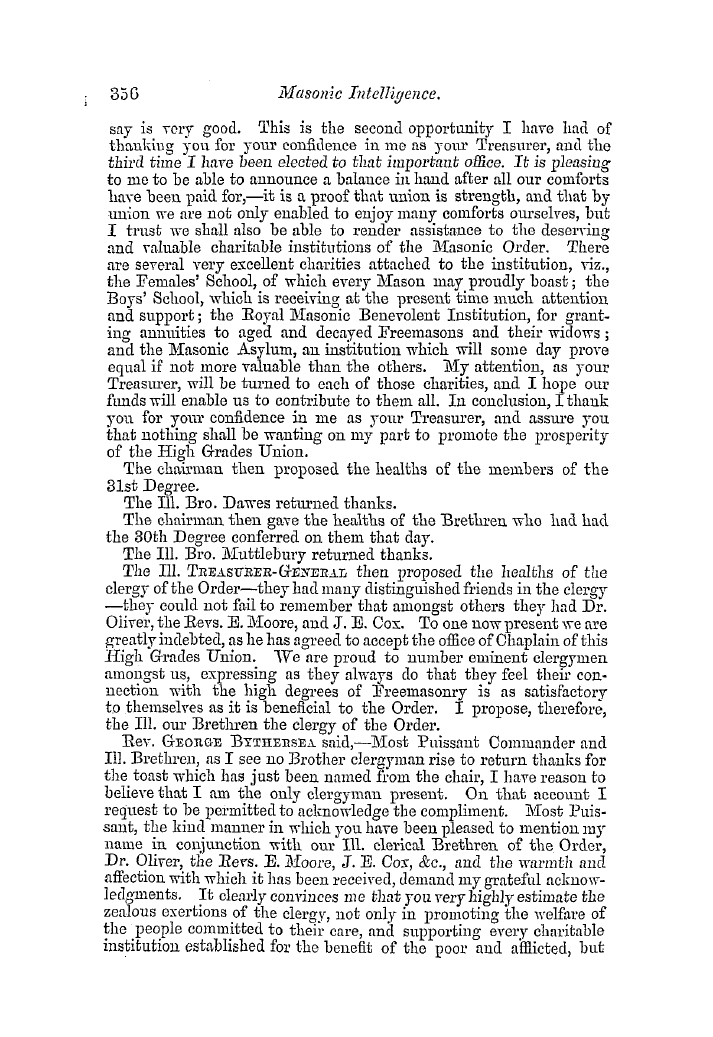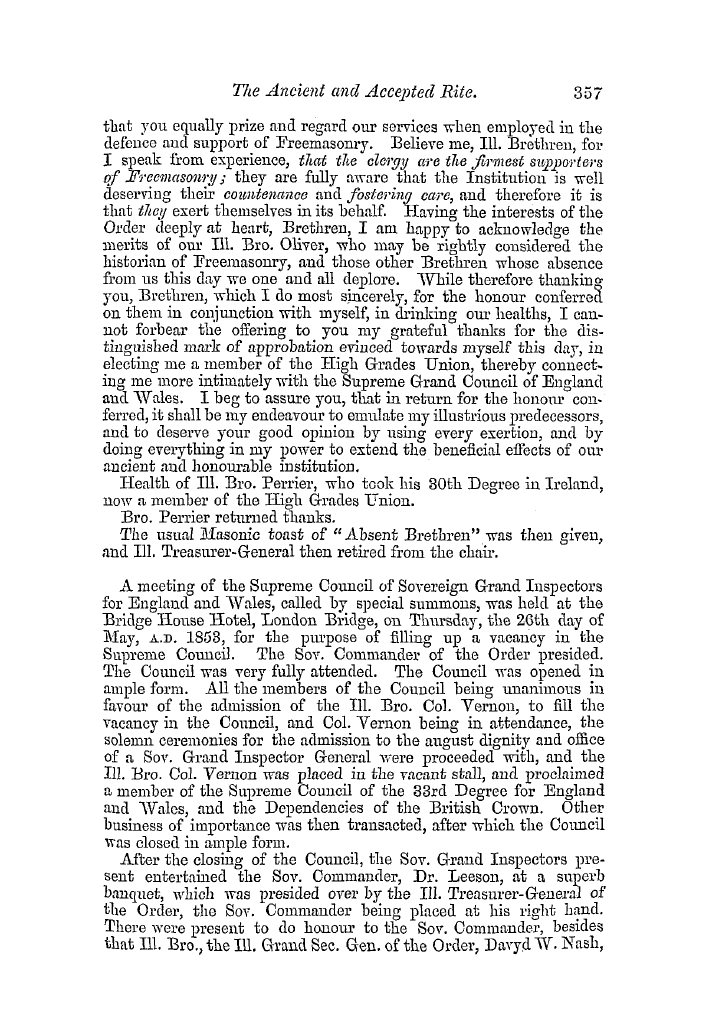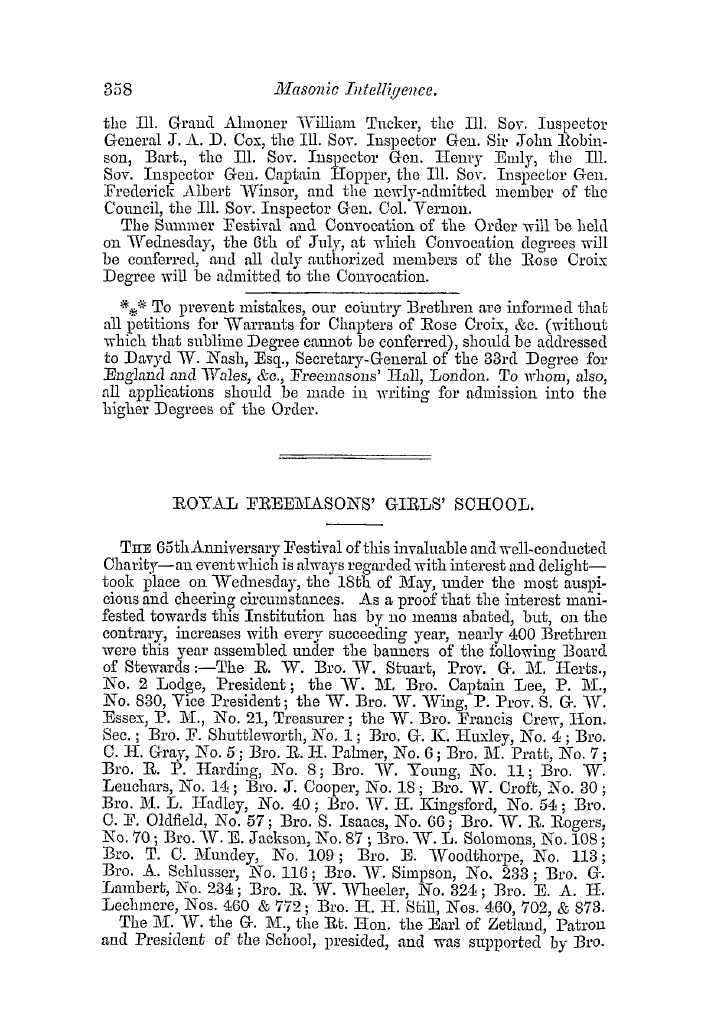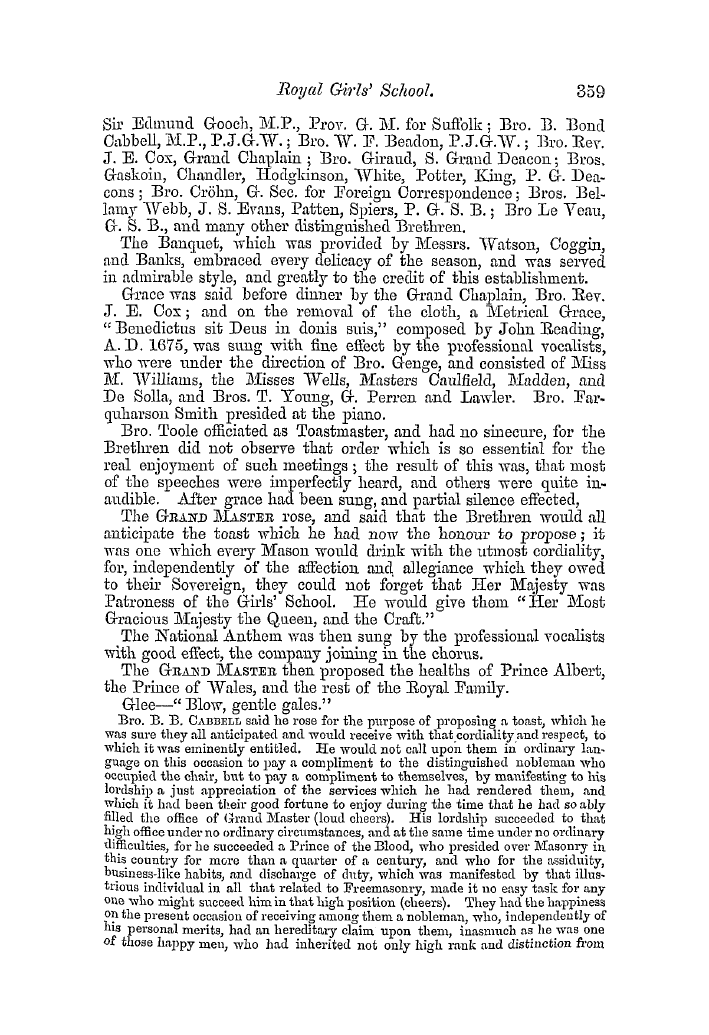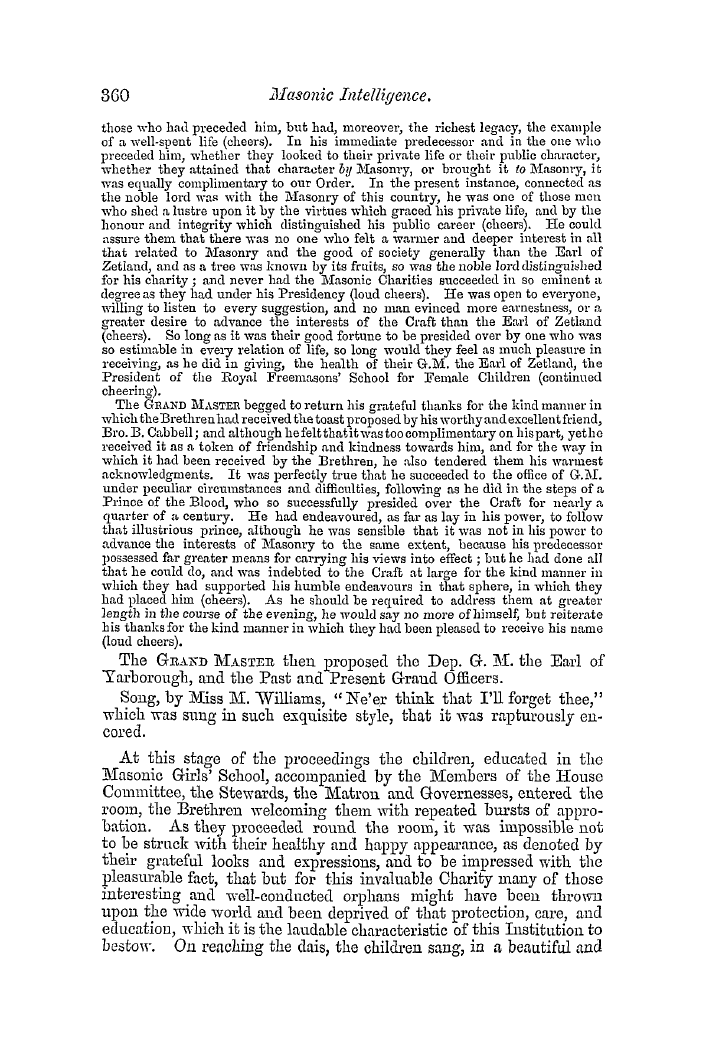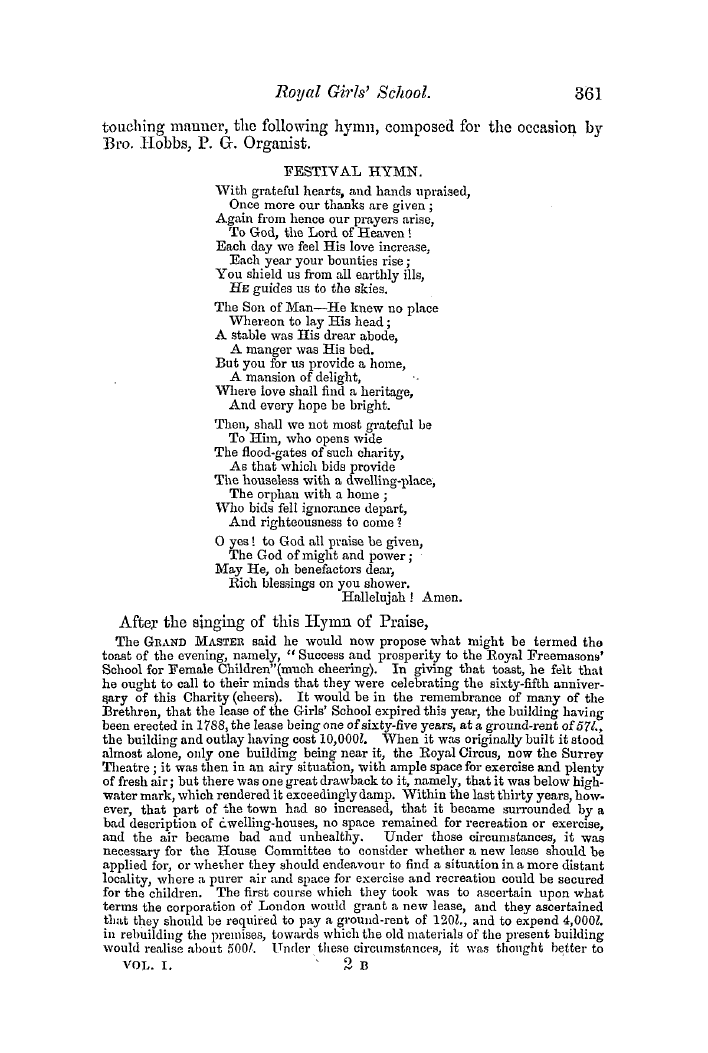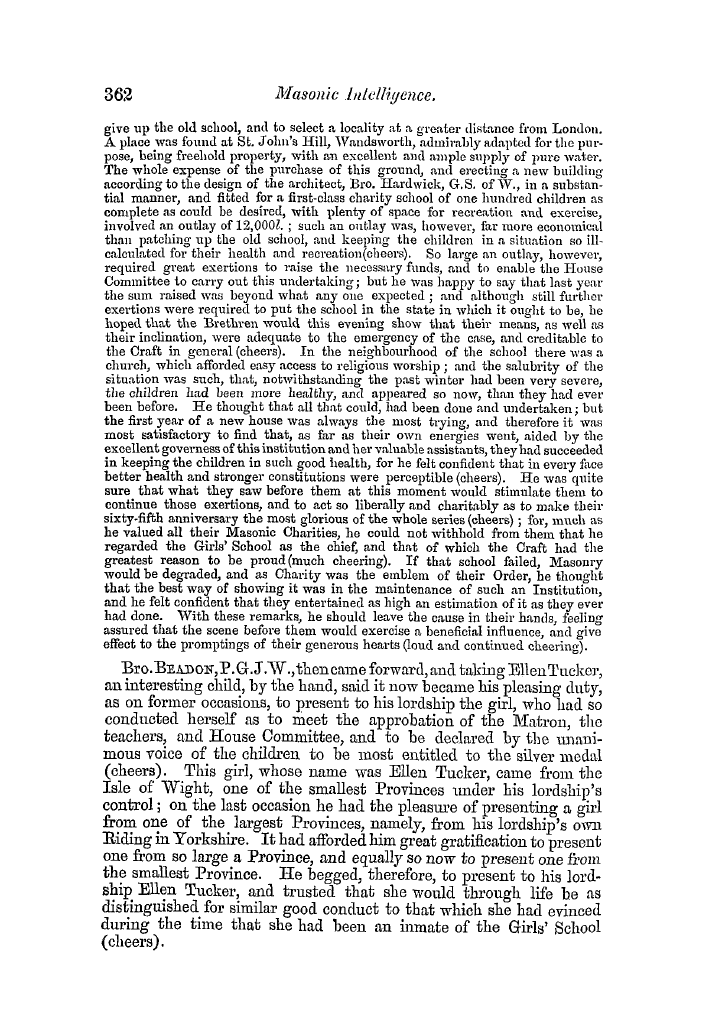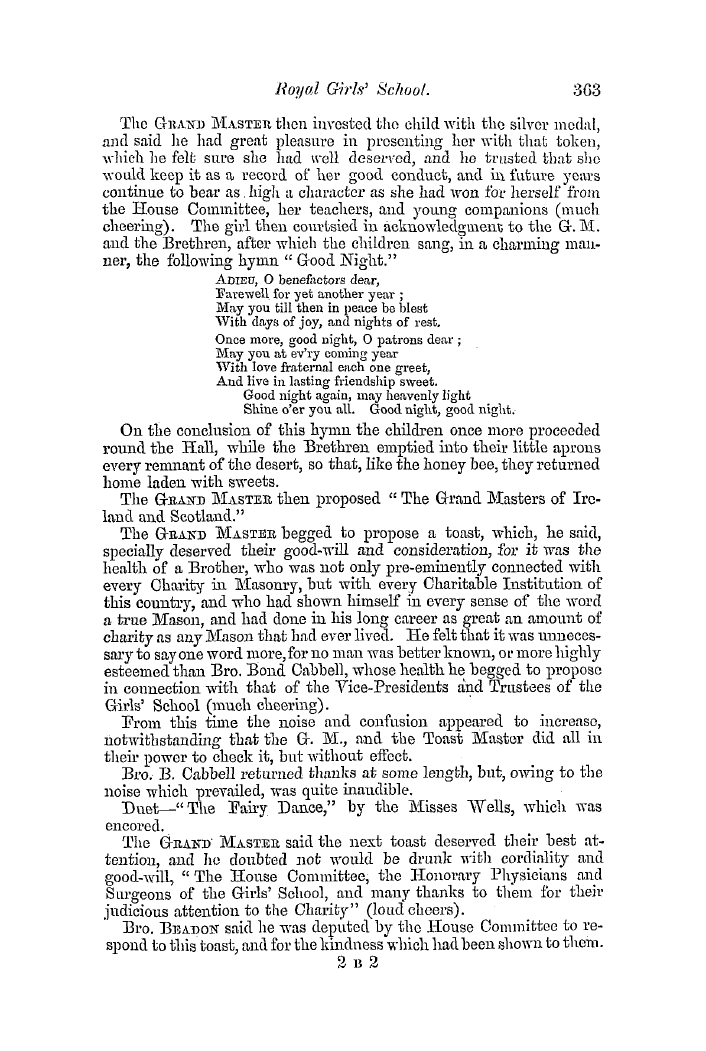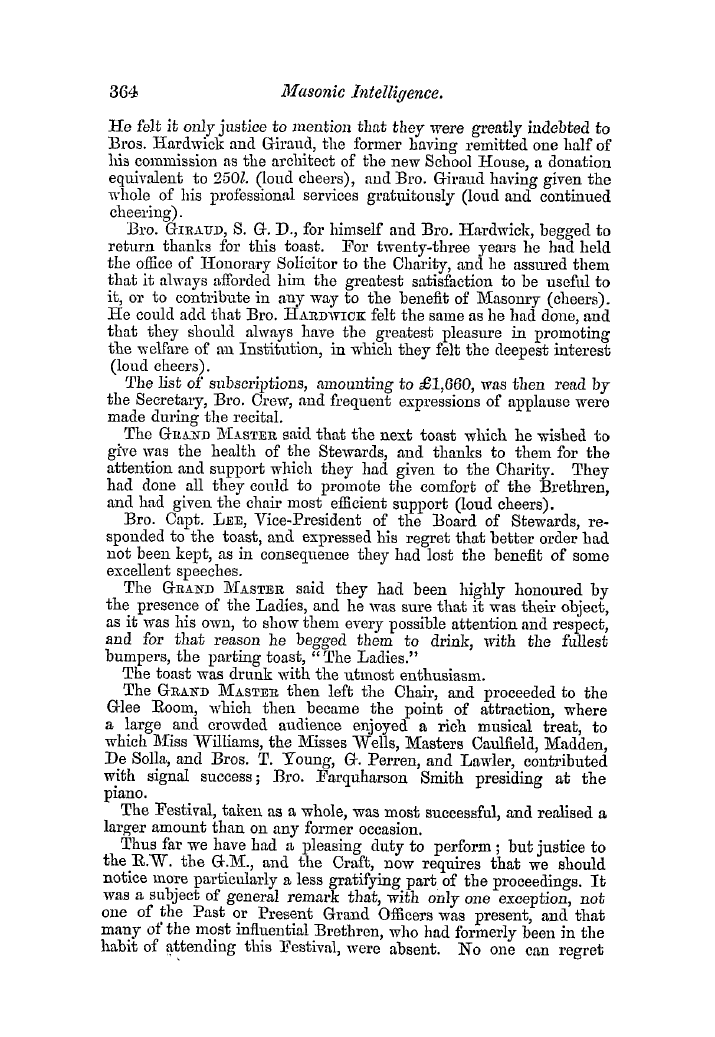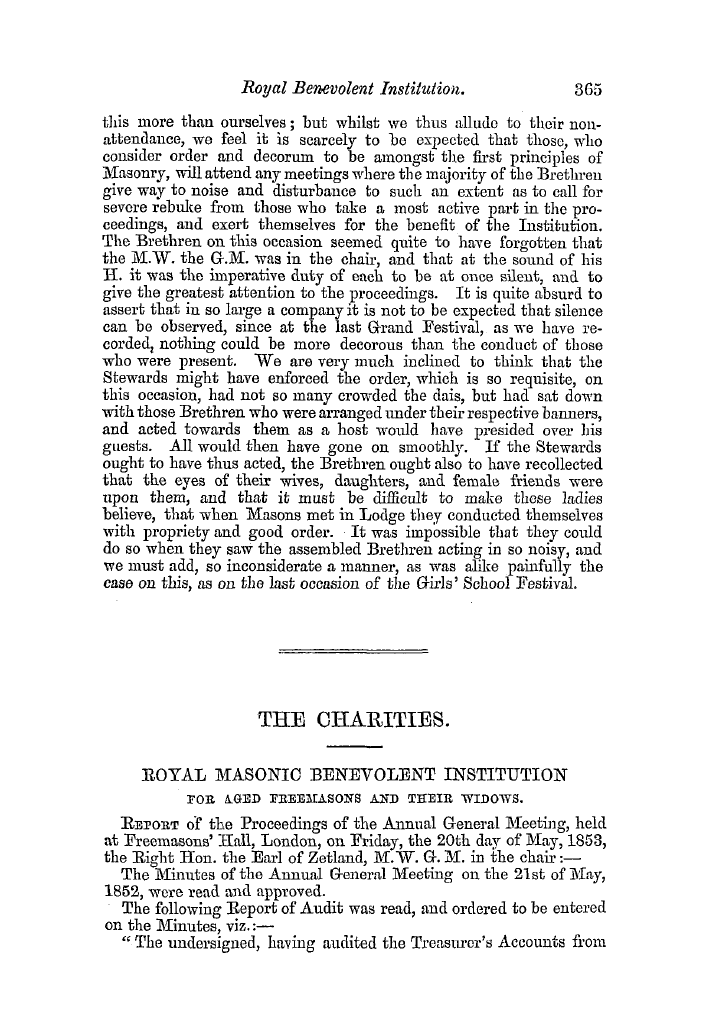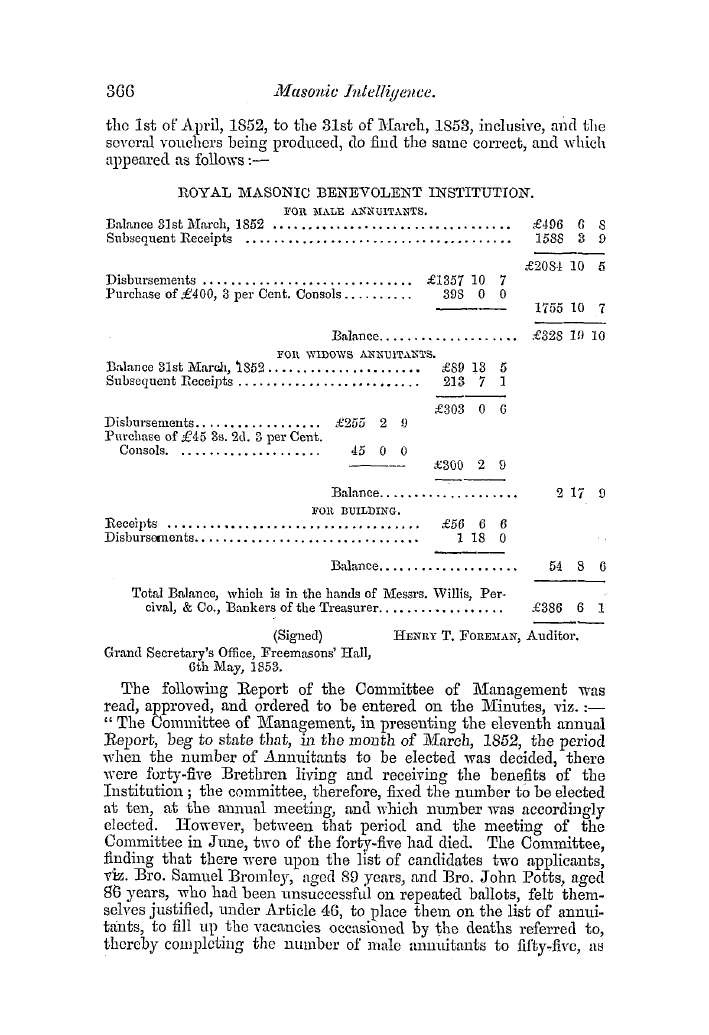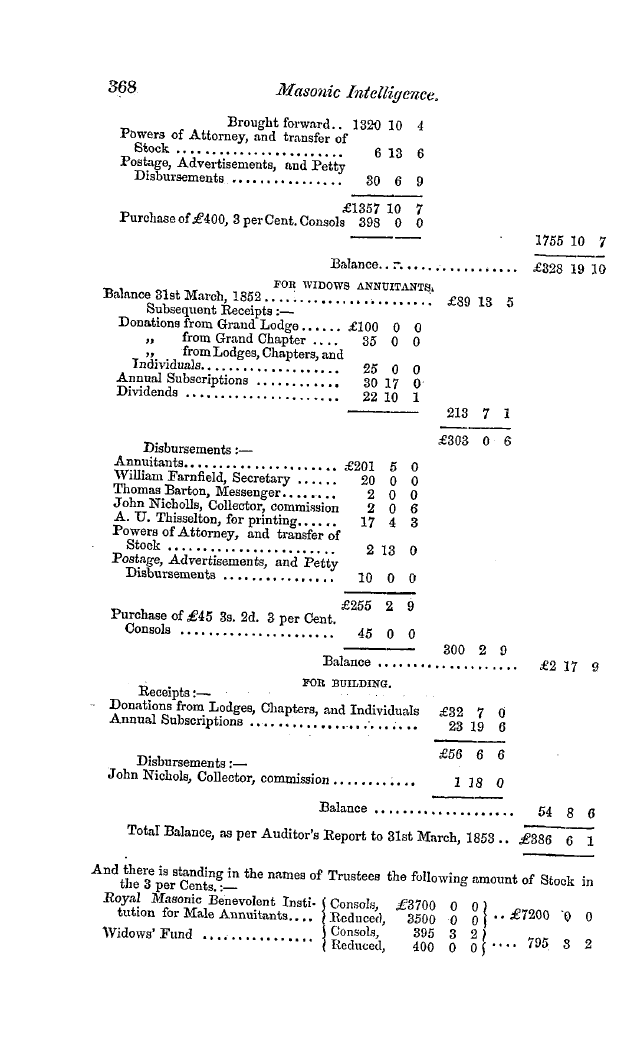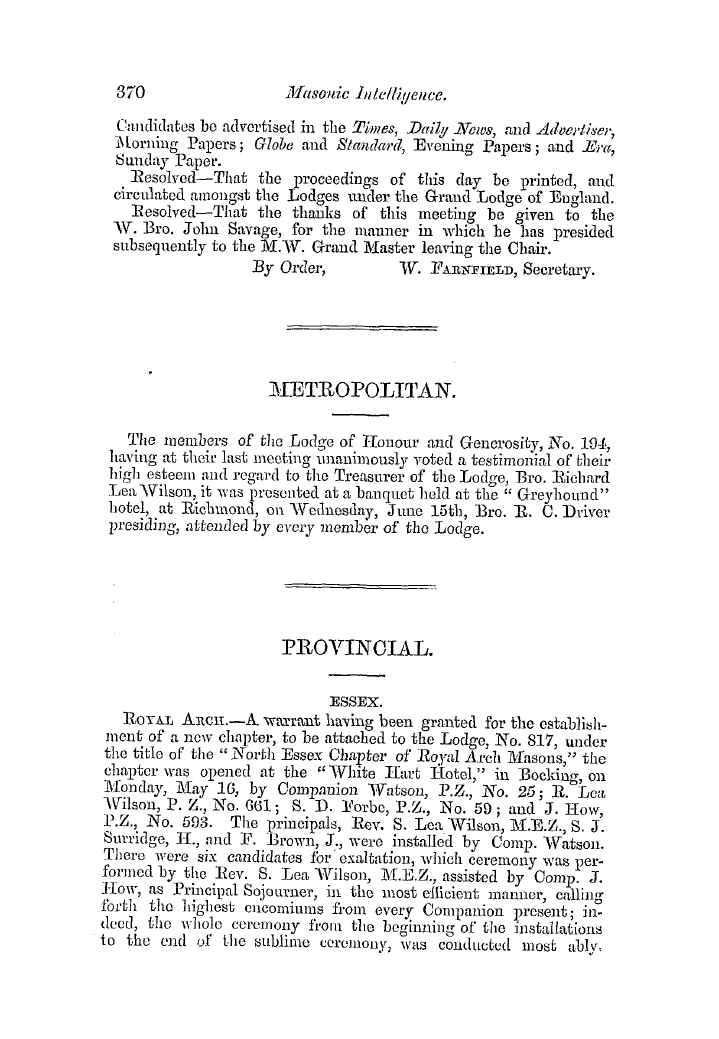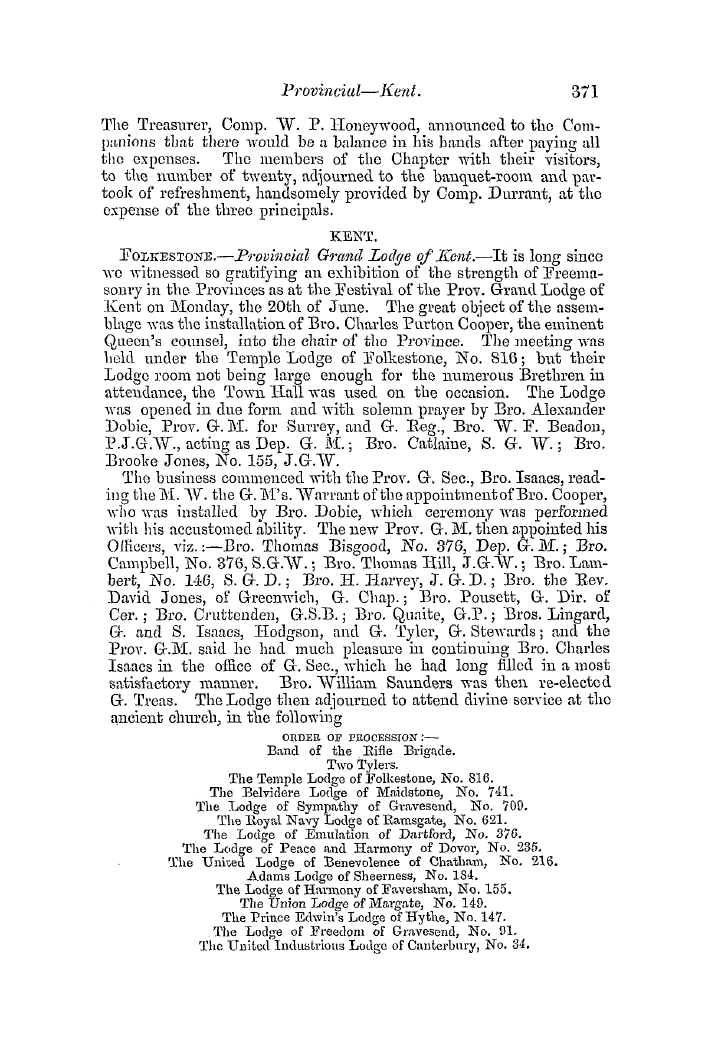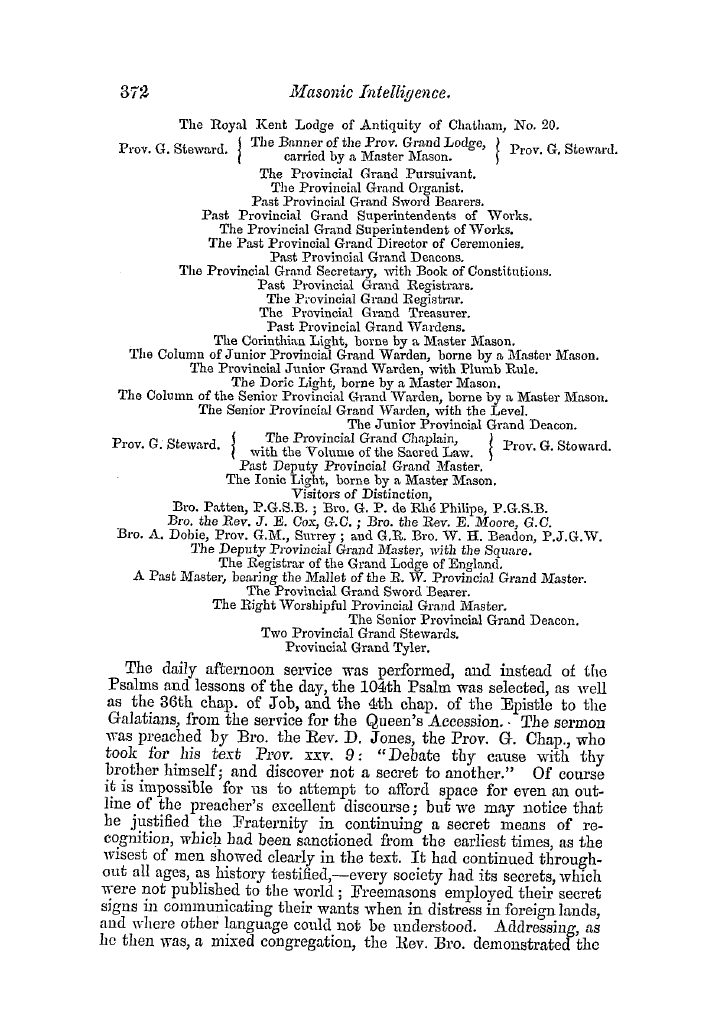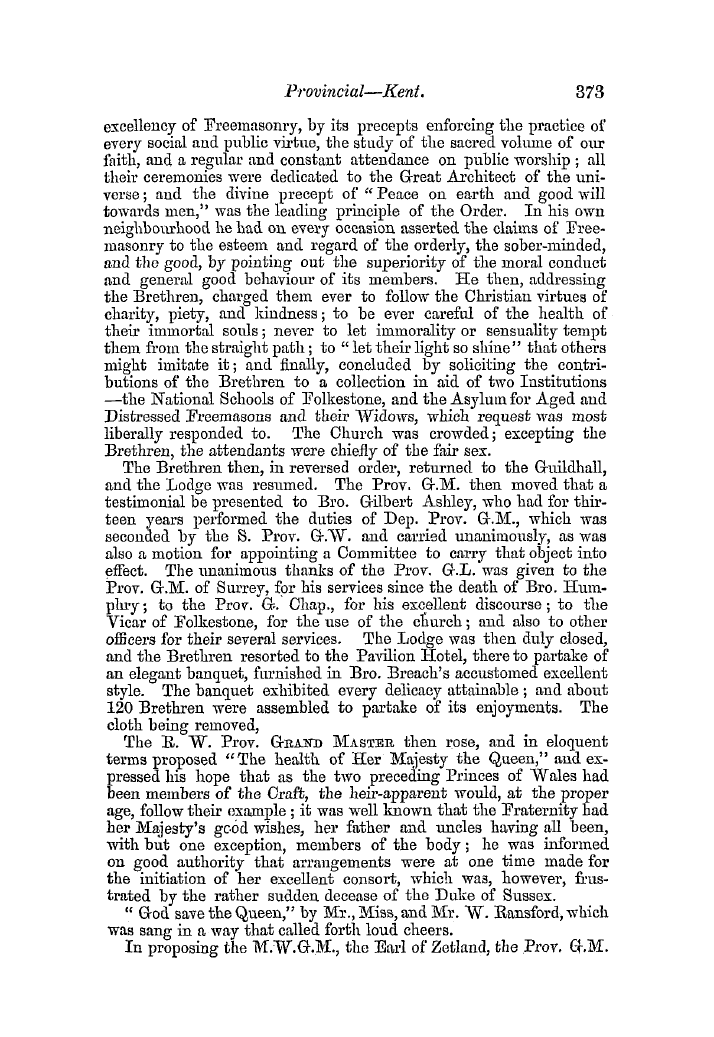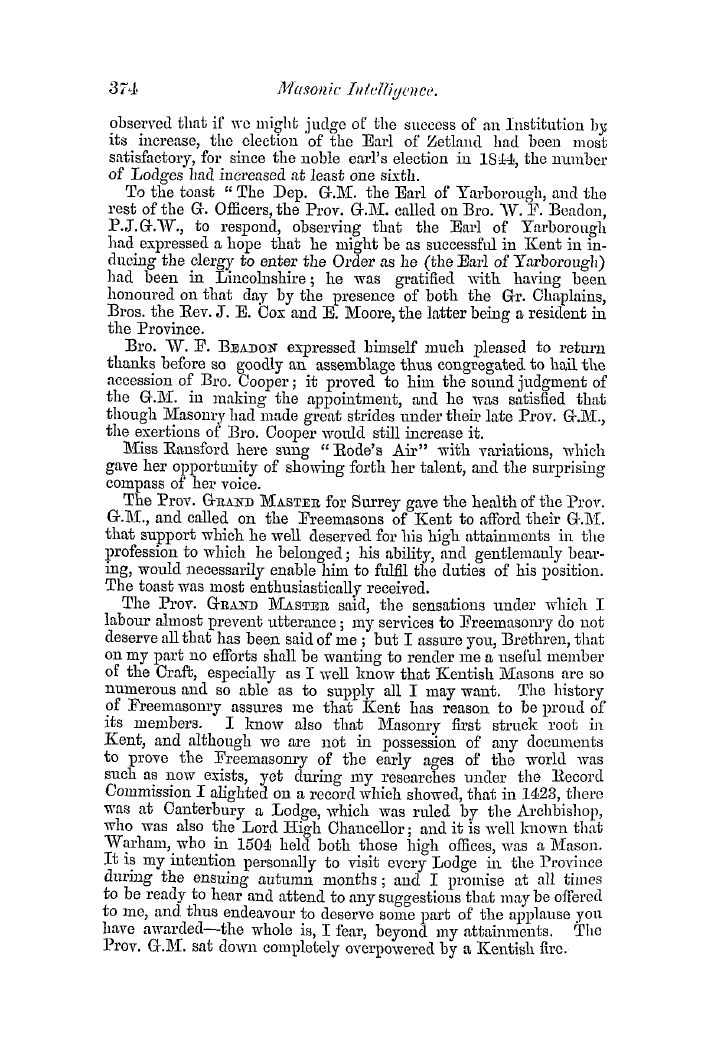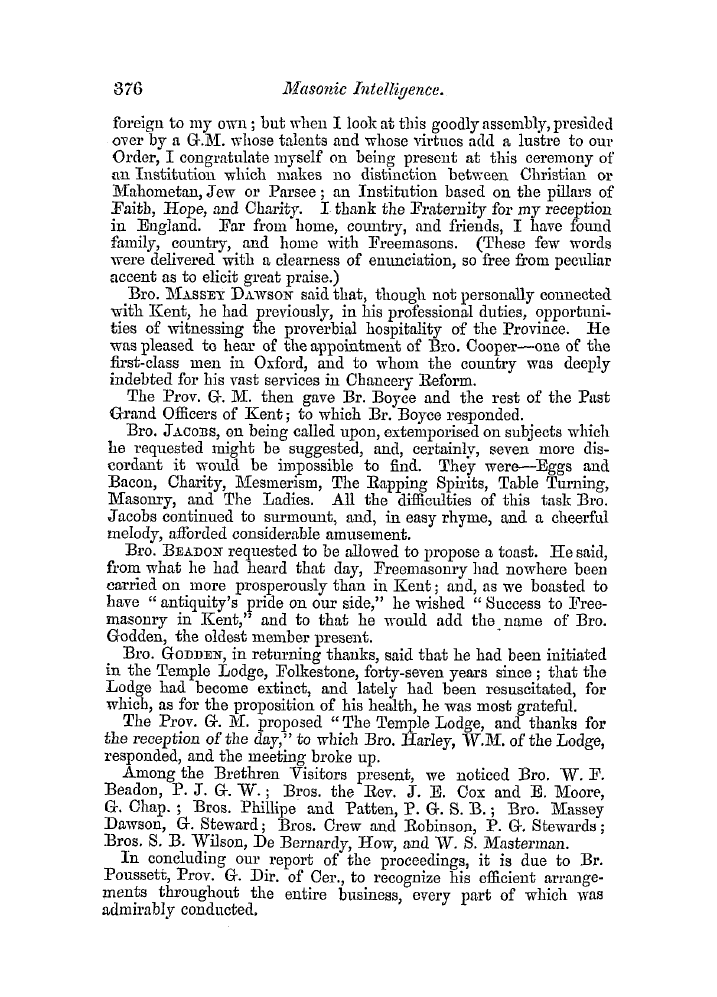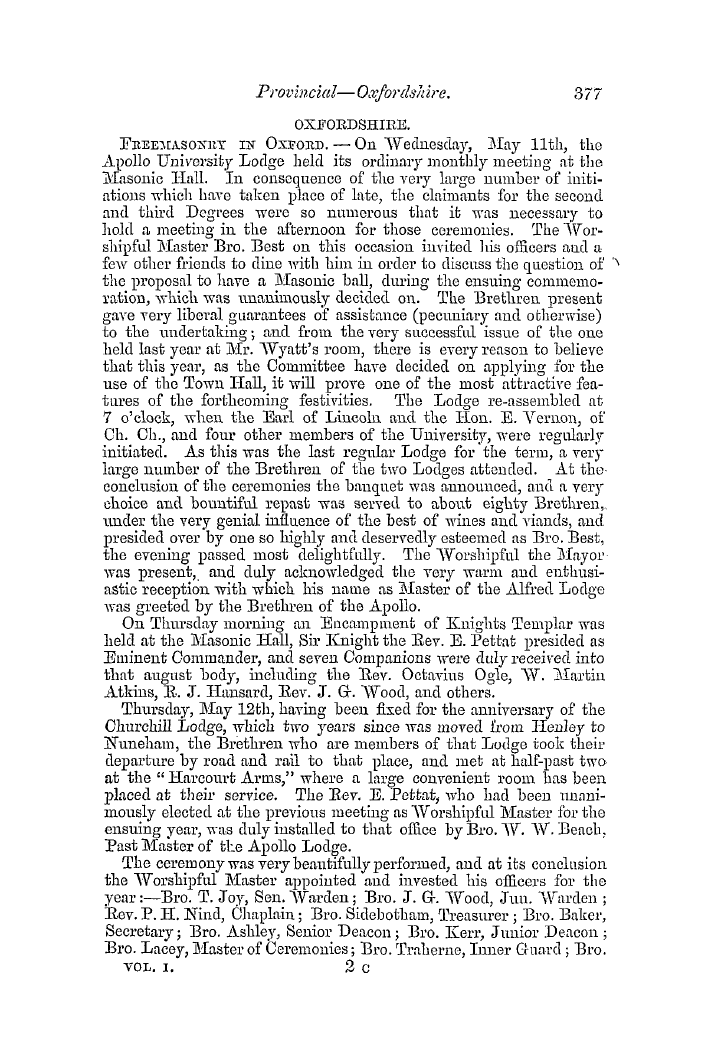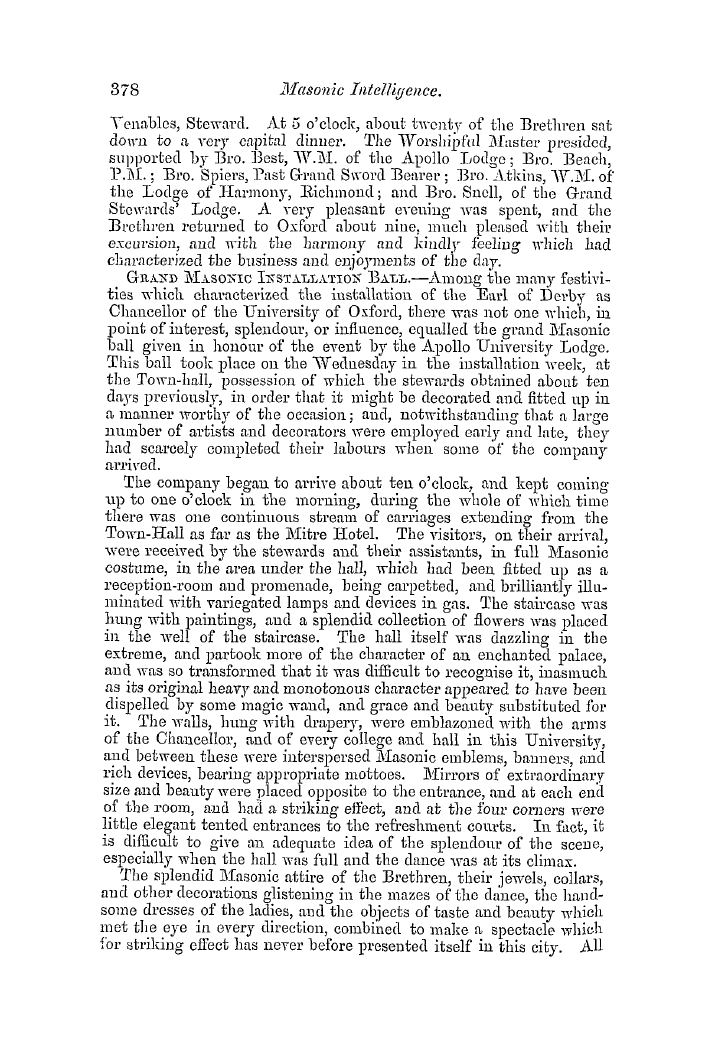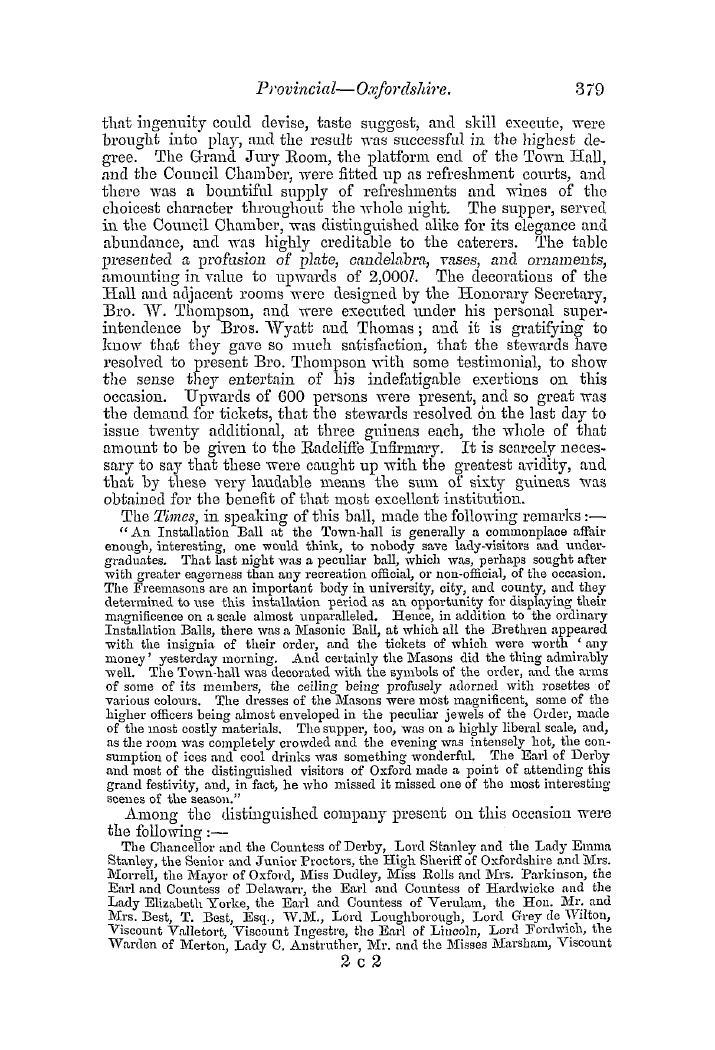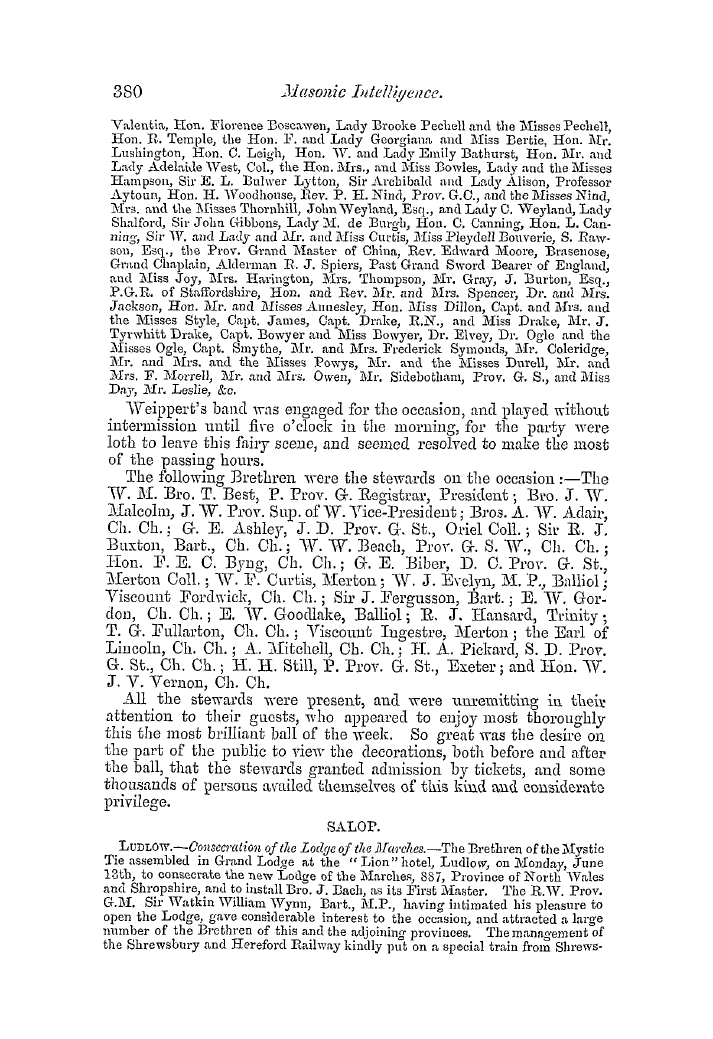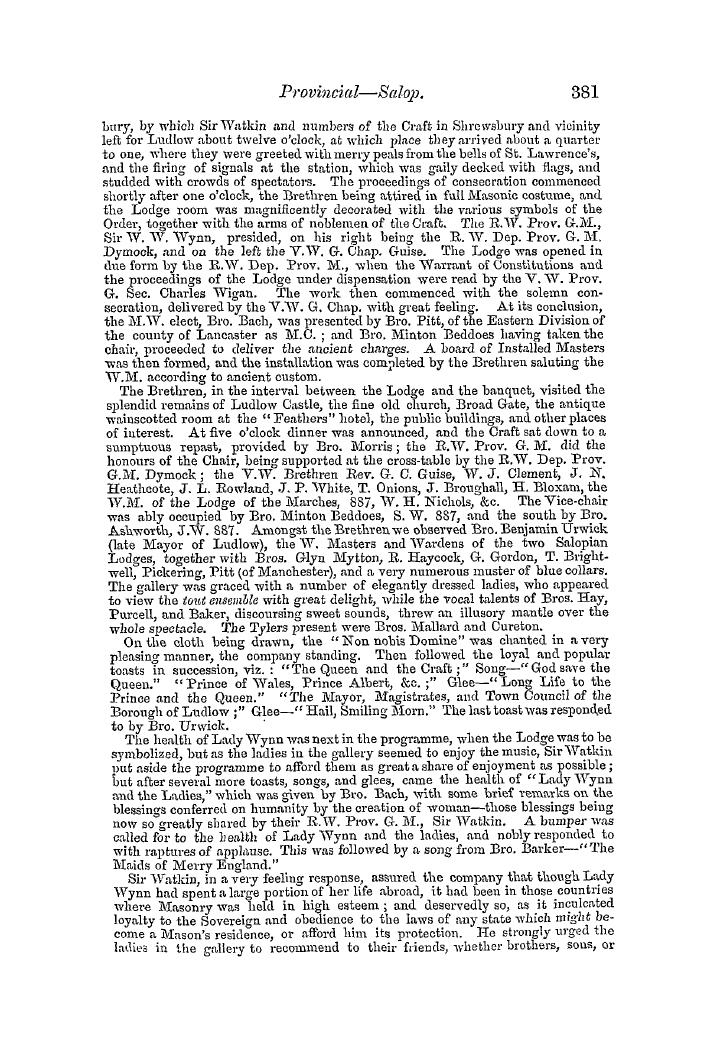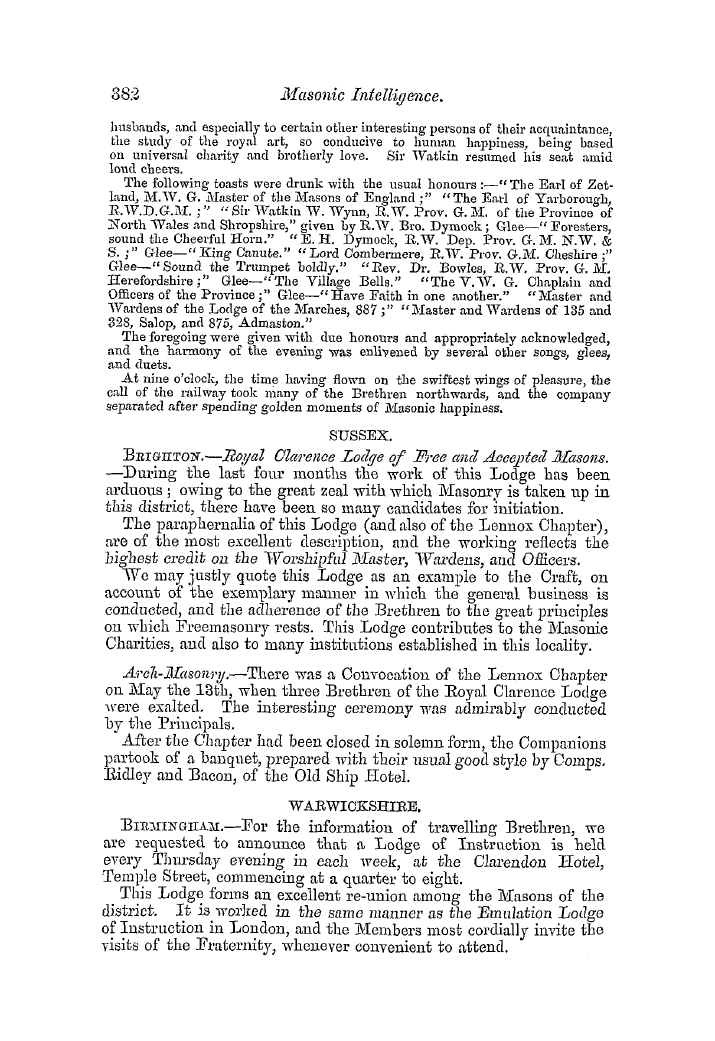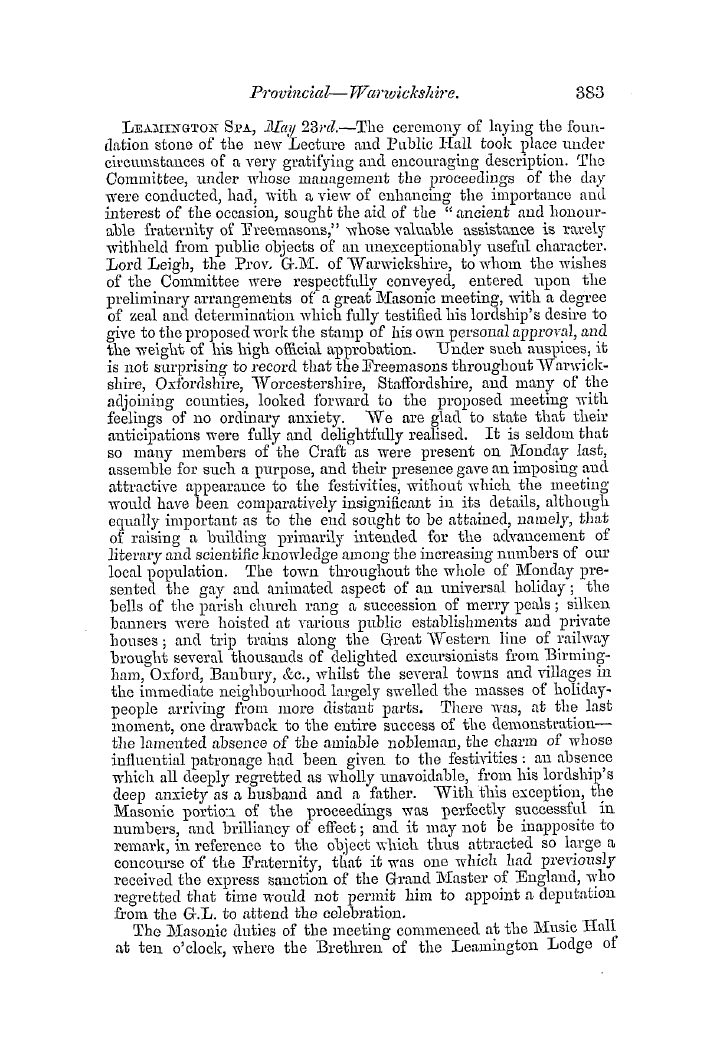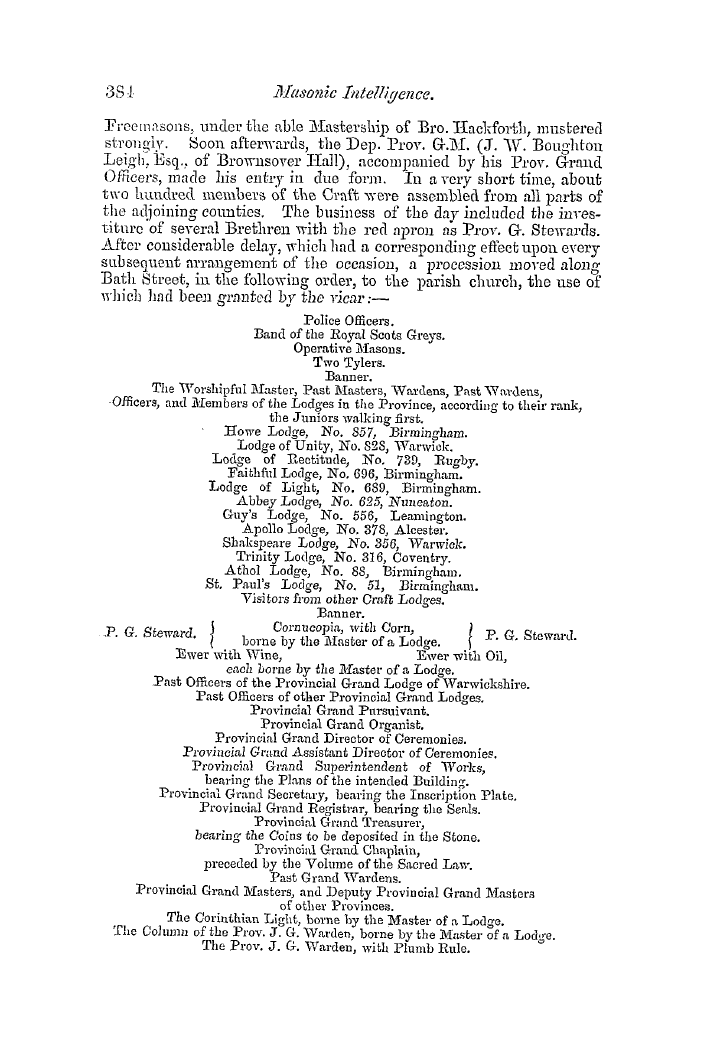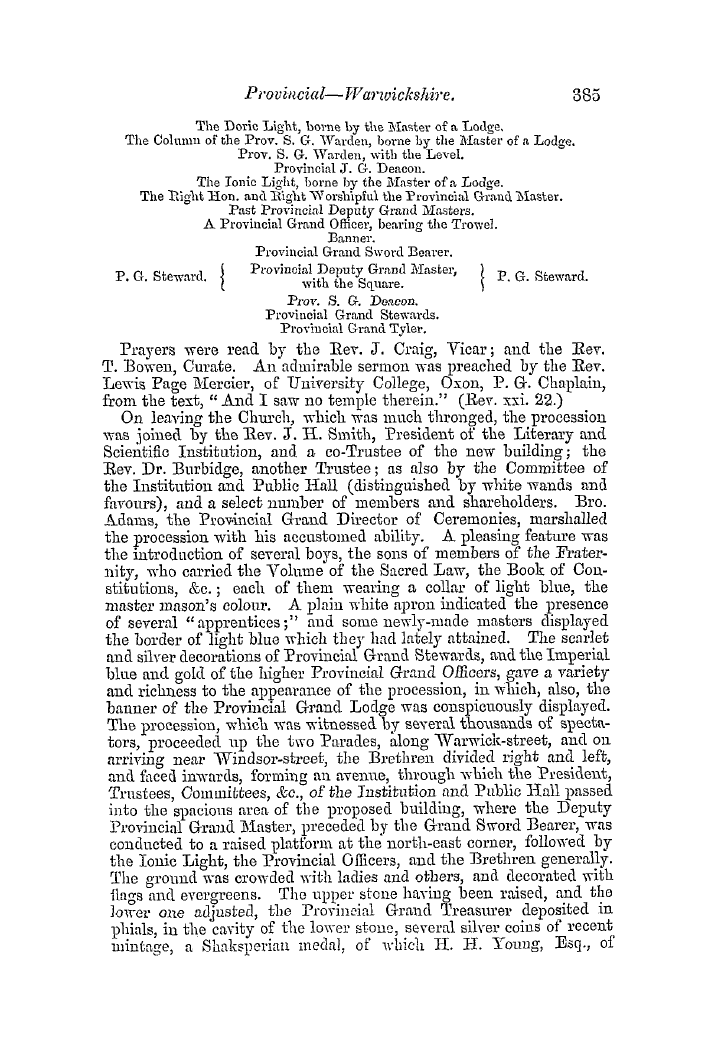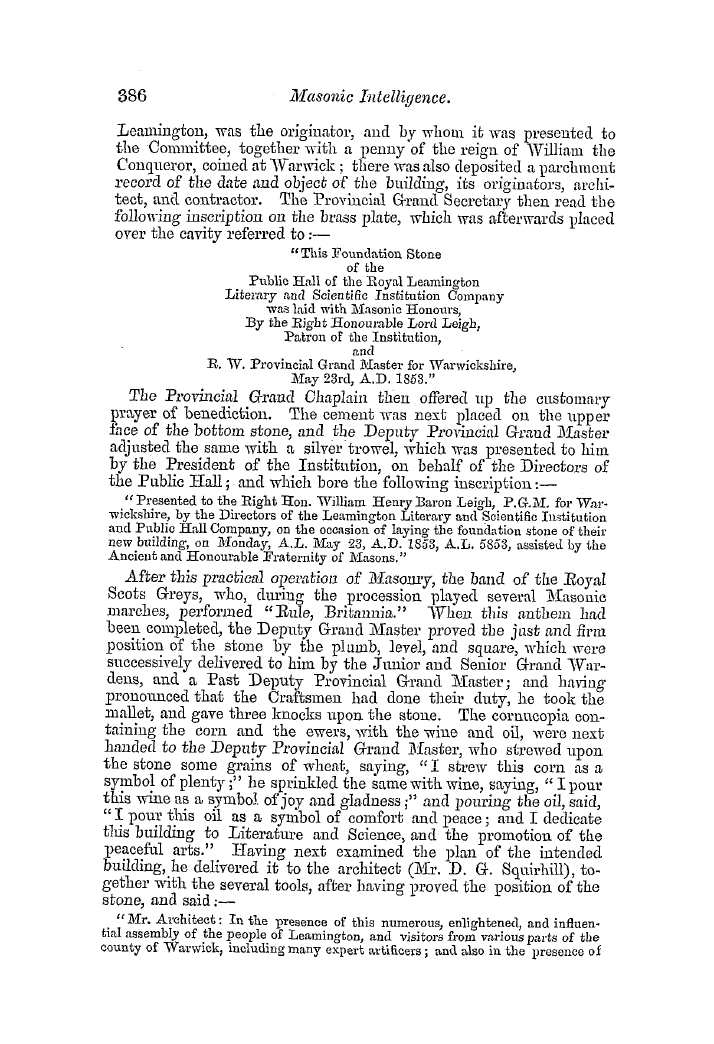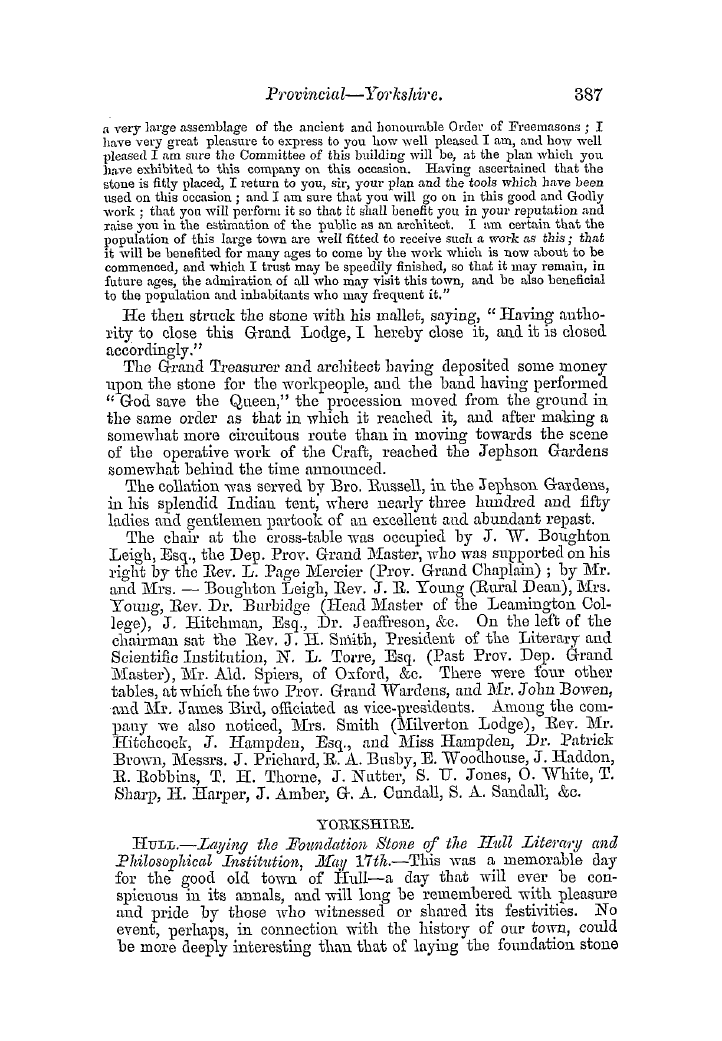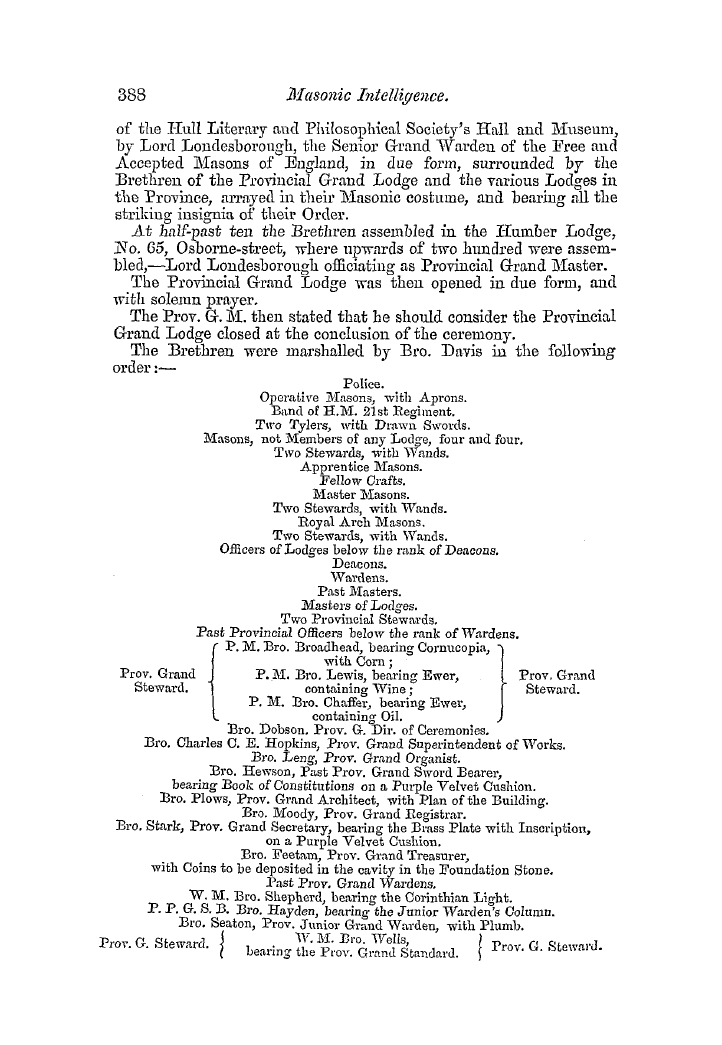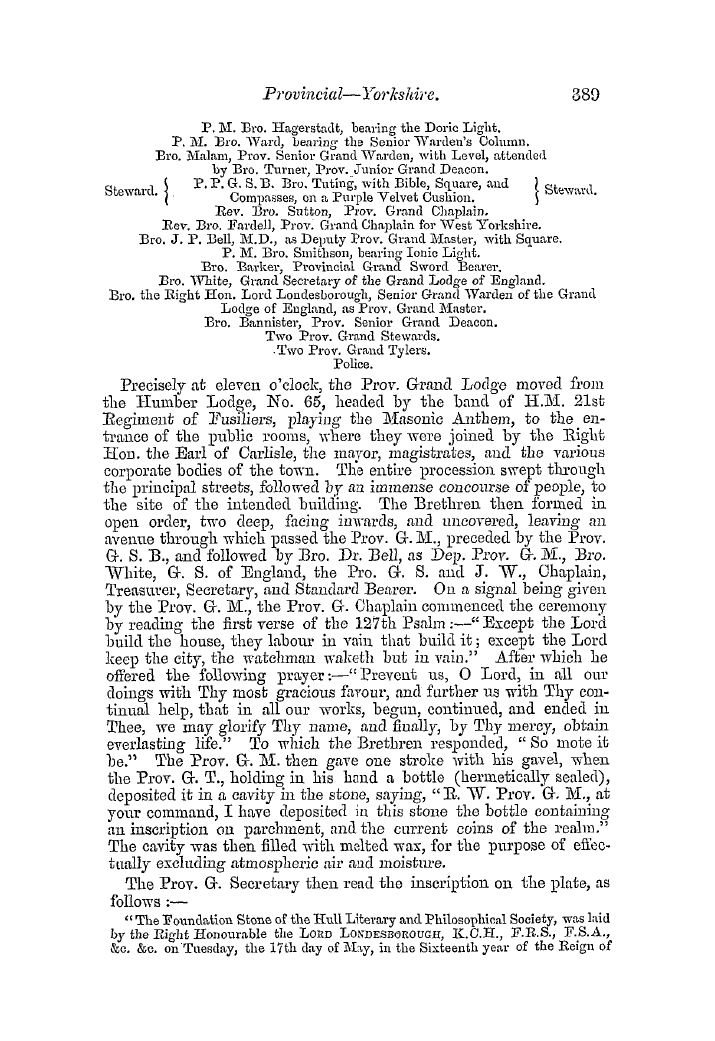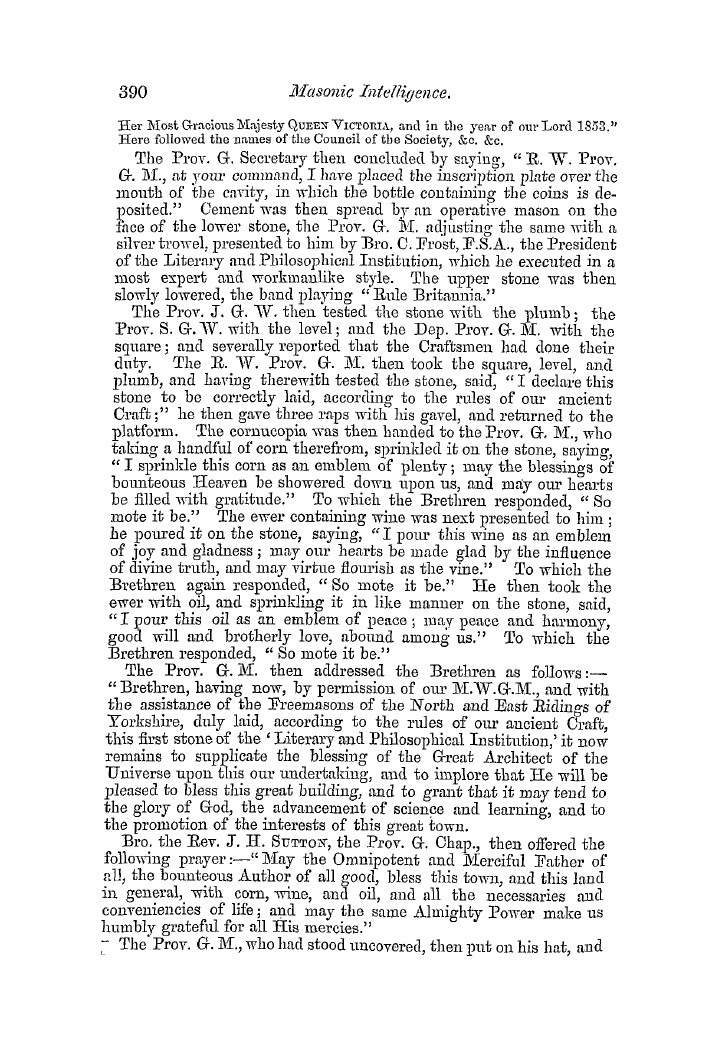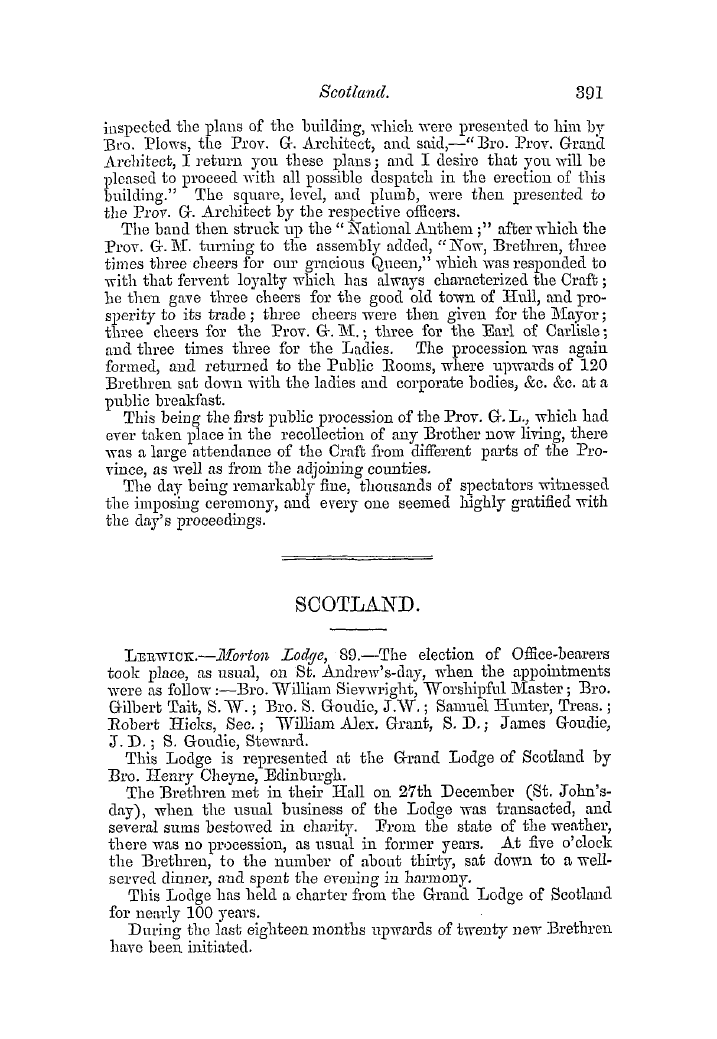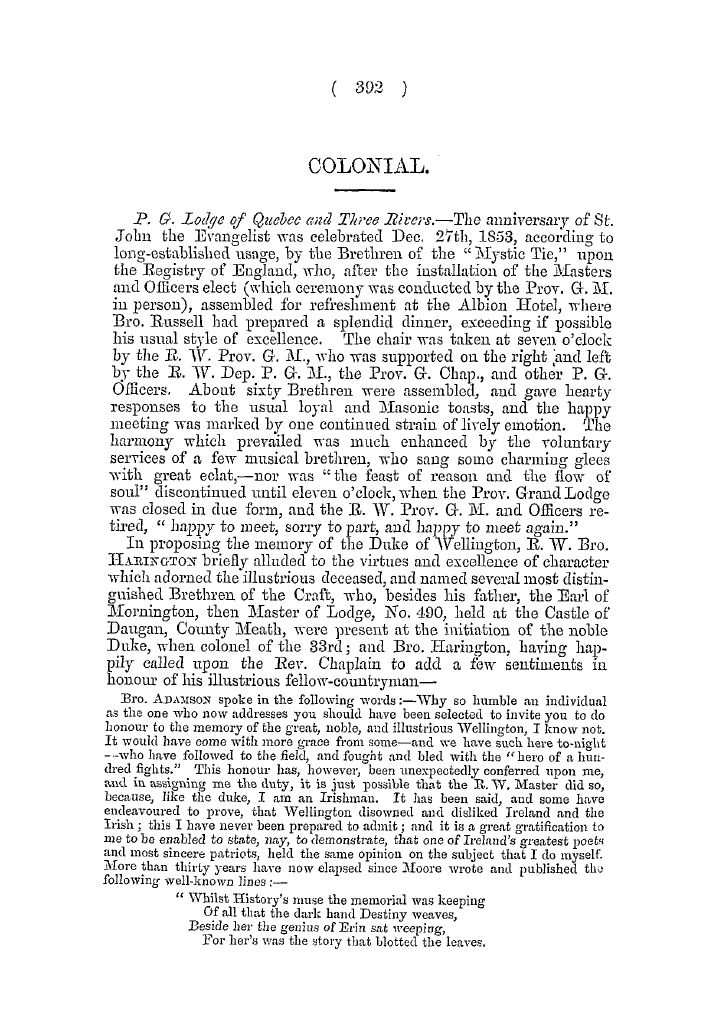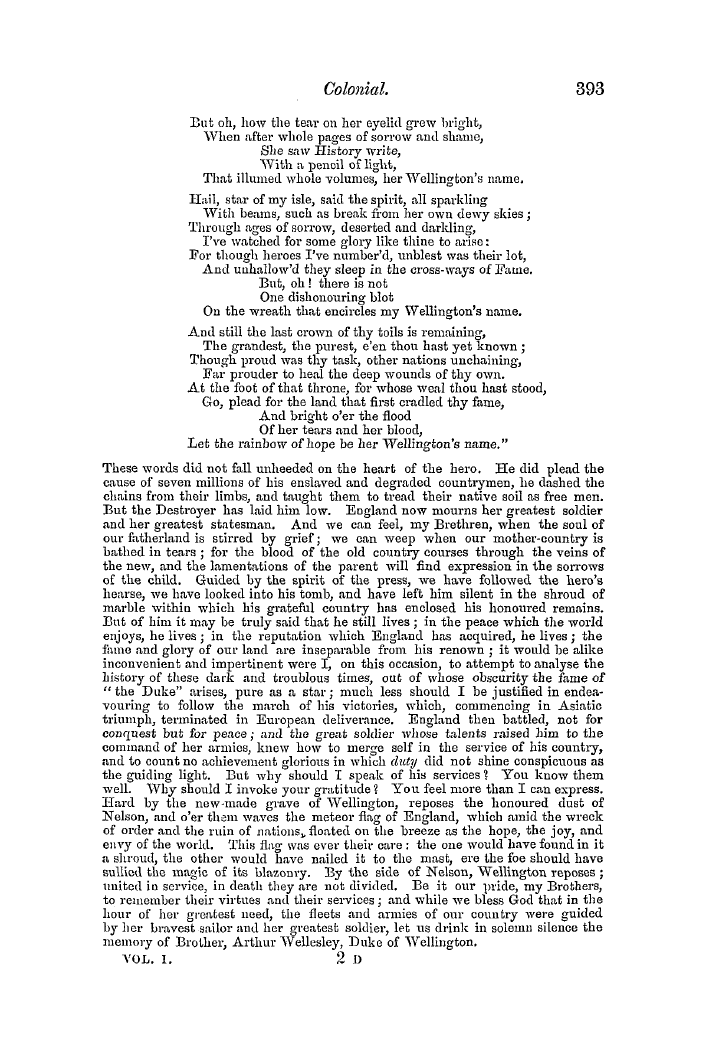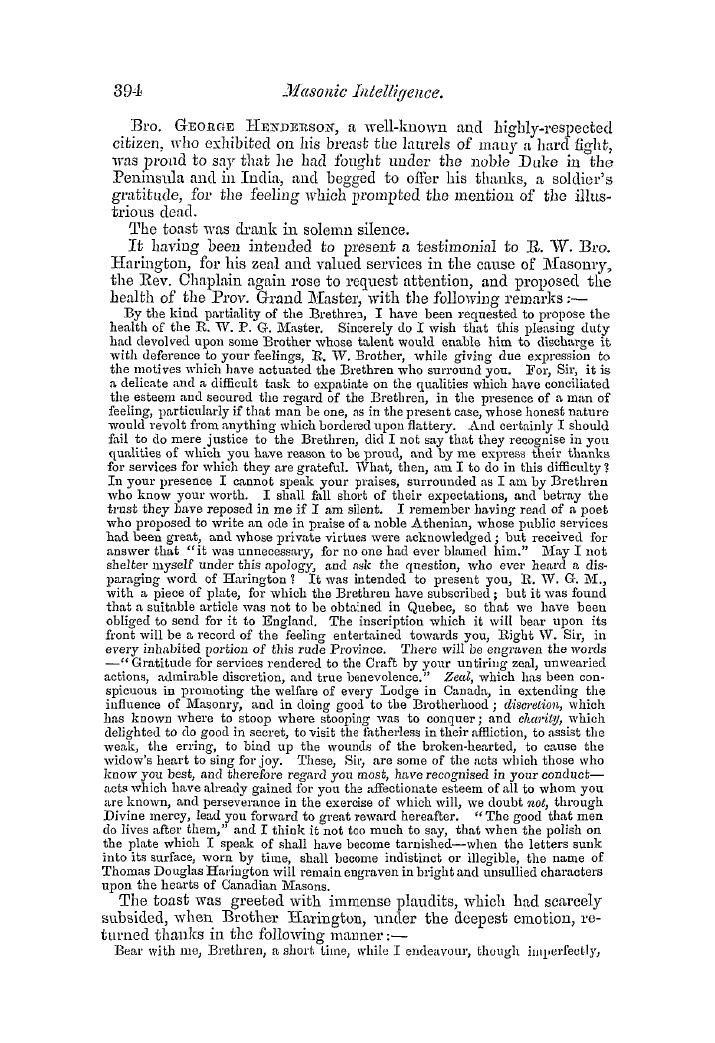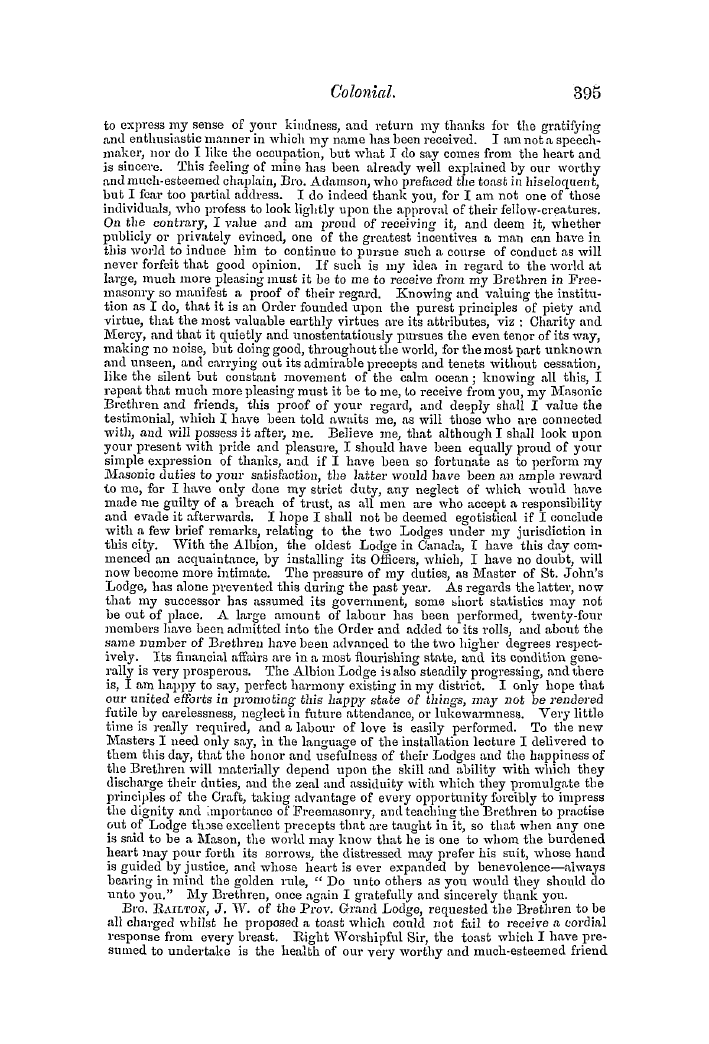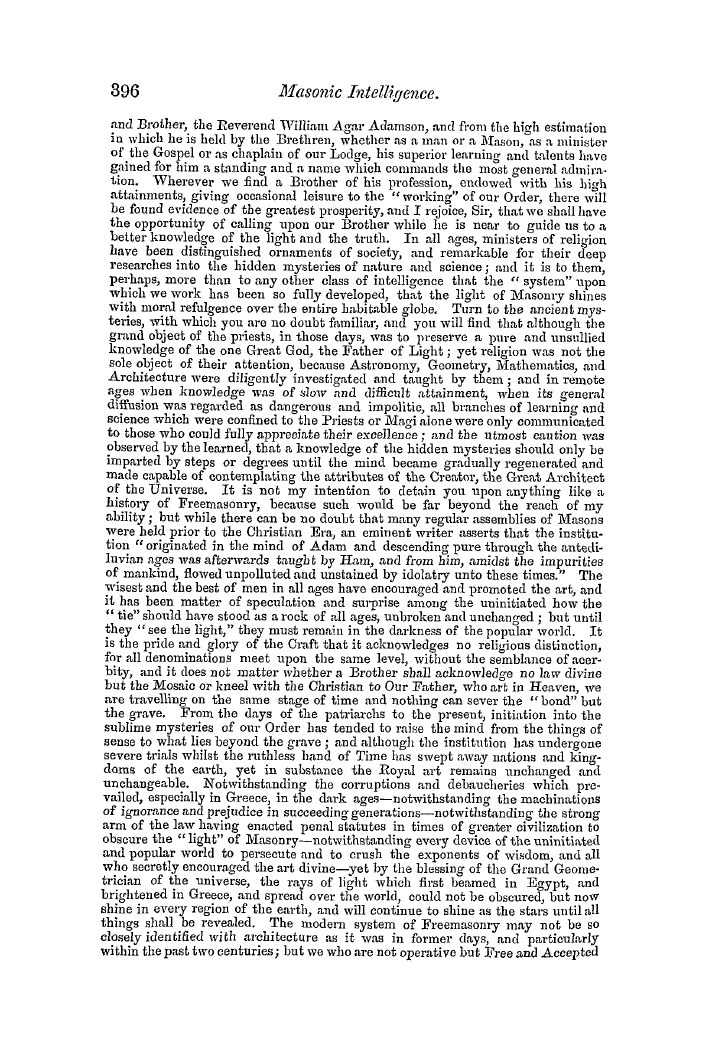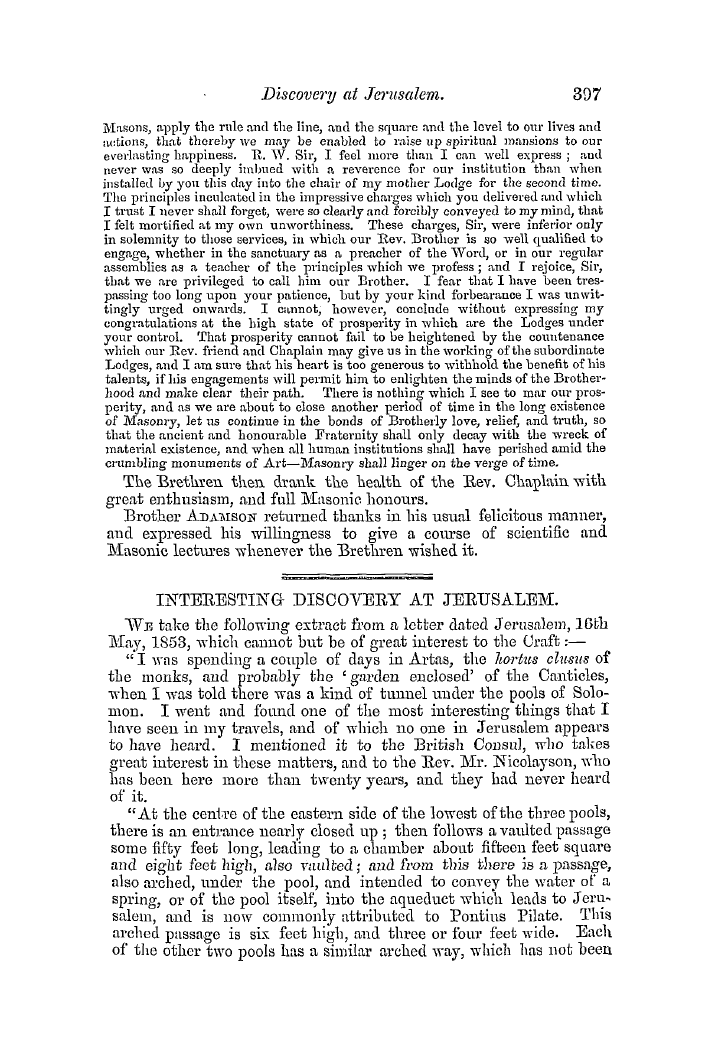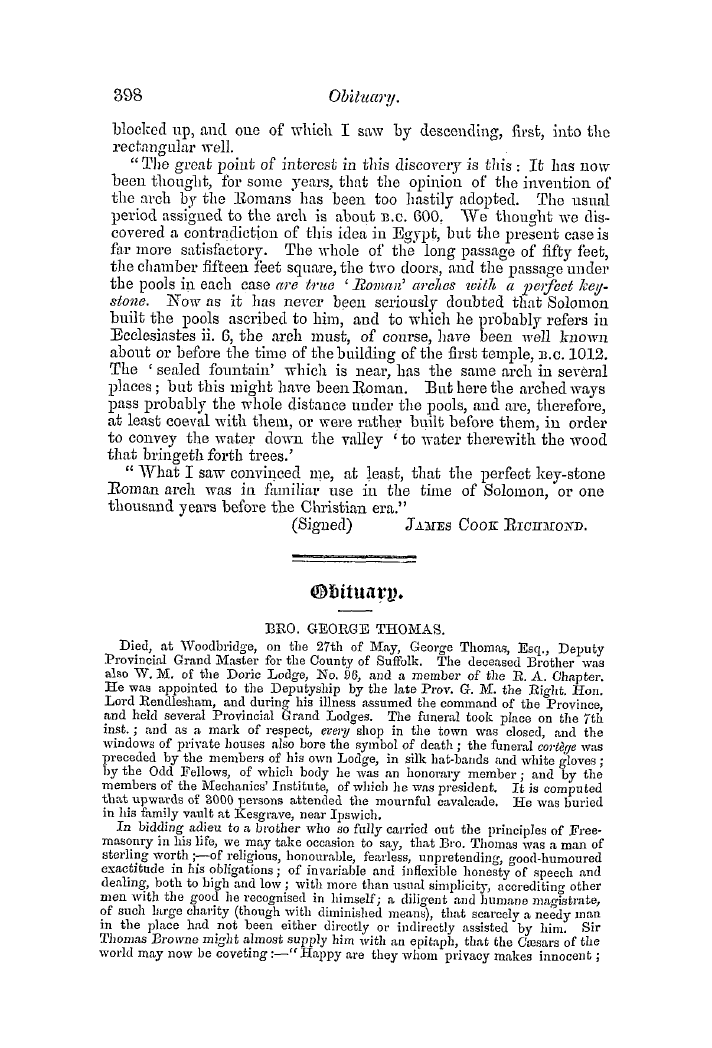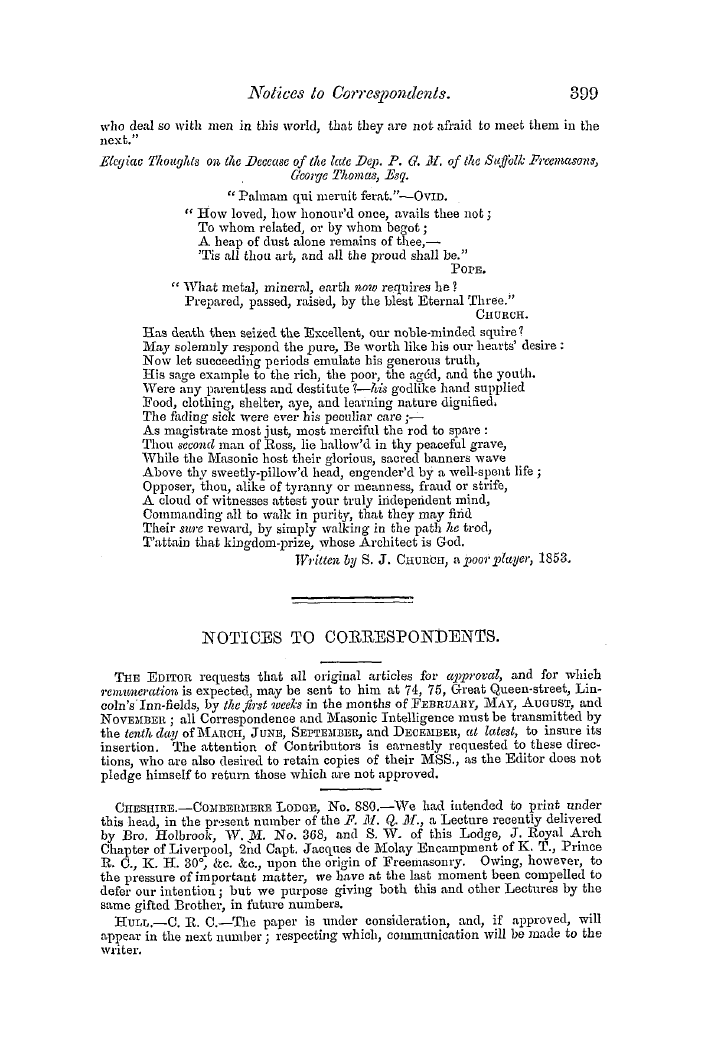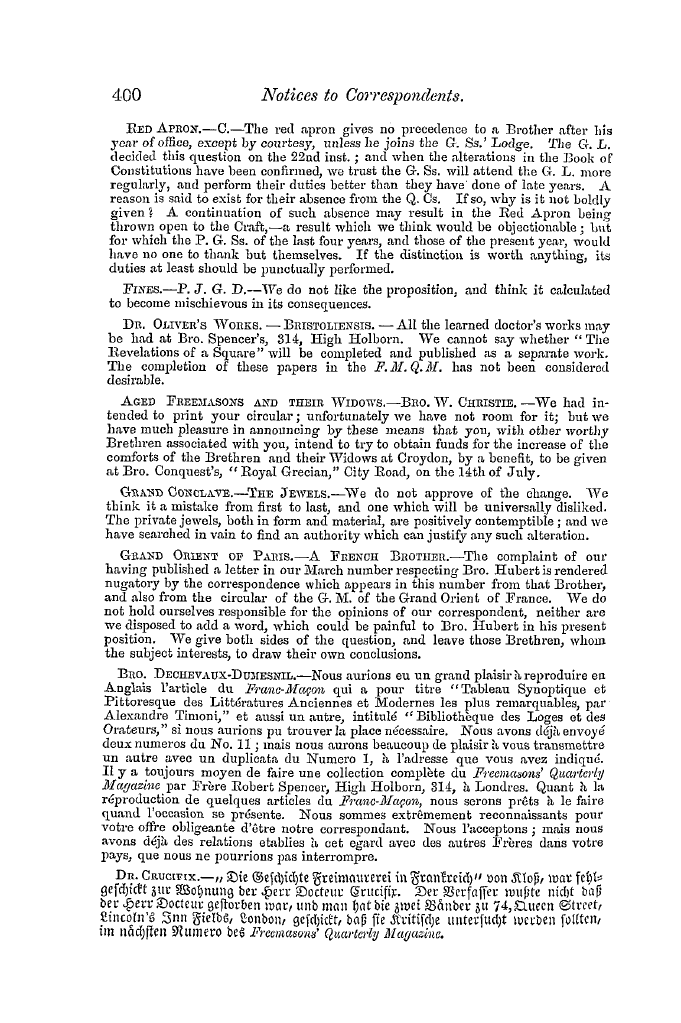-
Articles/Ads
Article ON SYMBOLS AND SYMBOLISM, ← Page 4 of 18 →
Note: This text has been automatically extracted via Optical Character Recognition (OCR) software.
On Symbols And Symbolism,
common parlance these terms are often confounded ; and ive shall , having first stated our views of their difference , here treat of the established signs , marks , ancl tokens of our Order , under their more generic denomination of Symbols . By these we understand such demonstrations patent to the
mind through some of the senses , as have been agreed upon by our own or other societies , ancient or modern , for the recognition of their members , in whatsoever country or at whatsoever time they may meet . It is obvious , therefore , that to
ettect tlieir purpose , they must be simple and secret : the first , because their universal amplication demands facility ancl ease : the more elaborate the token the greater obstacle would be thrown into the means of recognition by persons of different countries and language ; the obstructions to communication would be heaped up , ancl the impediments perhaps preclusive .
It is , therefore , in the exceeding simplicity of the original symbols of our Order , the base on which the grand edifice of Masonry is built , that tlieir great beauty is found , combined with their practical utility . Where could three tokens be discovered so elegantly simple , yet so expressive , as the Level , the Square , the Compass ; of such universal application , yet , upon mere exhibition , understood by the meanest capacities ? so
interwoven by then- use and service as mere Avords in our language that , when we utter such expressions as—to " walk upon the level ; " to" act upon the square ; " to " keep within compass ;" the mind is scarcely conscious of them as metaphorical abstractions . When Horace immortalized the Roman lady of his affection by his elegant praise , " simplex munditiis , " he fully characterized the
three leading Masonic symbols in their great excellencies , simplicity , and beauty . But independent of simplicity , they must , to effect their purpose , be also secret , or at least have a conventional meaningnot patent to the world at large , ancl yet so easily communicable to the initiated , that their tender and acknowledgment be
imperceptible to the laity , if this word be allowed me , to signify the whole of mankind without the pale of the Order . Some signs and tokens may have an open meaning for the public , and an exoteric , recondite , ancl improved sense to the initiated Brother , to whom they are communicated in their several degrees in every properlconducted Lod
y ge . The very name of a society imports some common bond of union , some distinction by which it is severed from the rest of the nation or the world . The Latin root is ivndoubtedly the verb secure , to cutoff from or to separate . That this distinction in Masonry should be secret , the end and purposes of the
Note: This text has been automatically extracted via Optical Character Recognition (OCR) software.
On Symbols And Symbolism,
common parlance these terms are often confounded ; and ive shall , having first stated our views of their difference , here treat of the established signs , marks , ancl tokens of our Order , under their more generic denomination of Symbols . By these we understand such demonstrations patent to the
mind through some of the senses , as have been agreed upon by our own or other societies , ancient or modern , for the recognition of their members , in whatsoever country or at whatsoever time they may meet . It is obvious , therefore , that to
ettect tlieir purpose , they must be simple and secret : the first , because their universal amplication demands facility ancl ease : the more elaborate the token the greater obstacle would be thrown into the means of recognition by persons of different countries and language ; the obstructions to communication would be heaped up , ancl the impediments perhaps preclusive .
It is , therefore , in the exceeding simplicity of the original symbols of our Order , the base on which the grand edifice of Masonry is built , that tlieir great beauty is found , combined with their practical utility . Where could three tokens be discovered so elegantly simple , yet so expressive , as the Level , the Square , the Compass ; of such universal application , yet , upon mere exhibition , understood by the meanest capacities ? so
interwoven by then- use and service as mere Avords in our language that , when we utter such expressions as—to " walk upon the level ; " to" act upon the square ; " to " keep within compass ;" the mind is scarcely conscious of them as metaphorical abstractions . When Horace immortalized the Roman lady of his affection by his elegant praise , " simplex munditiis , " he fully characterized the
three leading Masonic symbols in their great excellencies , simplicity , and beauty . But independent of simplicity , they must , to effect their purpose , be also secret , or at least have a conventional meaningnot patent to the world at large , ancl yet so easily communicable to the initiated , that their tender and acknowledgment be
imperceptible to the laity , if this word be allowed me , to signify the whole of mankind without the pale of the Order . Some signs and tokens may have an open meaning for the public , and an exoteric , recondite , ancl improved sense to the initiated Brother , to whom they are communicated in their several degrees in every properlconducted Lod
y ge . The very name of a society imports some common bond of union , some distinction by which it is severed from the rest of the nation or the world . The Latin root is ivndoubtedly the verb secure , to cutoff from or to separate . That this distinction in Masonry should be secret , the end and purposes of the


























































